3DPrint.com | The Voice of 3D Printing / Additive Manufacturing |
- The Digital Textile Tech Behind Kornit’s Sustainable Fashion
- Ceramic 3D Printing Capabilities Expand with New Admatec Debinding and Sintering Equipment
- Electroninks to Make Particle-Free Metal Inks Available for Electronics Production
- Copper 3D Printing with Blue Lasers Under Development by Essentium and NUBURU
- 3D Printing News Briefs, May 4, 2022: Construction, Research, & More
- EOS North American Expands to LA with New 3D Printing Center
- F1 Champ Fernando Alonso Debuts 3D Printed E-Bike by Arevo
- 3D Printed Air Filter from AddCat Eliminates 95% of Contaminants
- SuperMeat: the Future Intel of Cultured 3D Printed Chicken?
- Injection Molding Firm Oechsler Doubles Down on 3D Printing with HP and AMT Expansion
| The Digital Textile Tech Behind Kornit’s Sustainable Fashion Posted: 05 May 2022 07:00 AM PDT I recently traveled to Israel to attend Kornit Fashion Week Tel Aviv 2022 and see Kornit Digital (NASDAQ: KRNT) introduce its Atlas MAX Poly and Apollo solutions for digital, sustainable fashion. The company wants to improve the fashion and textiles industry by reducing waste, but still enabling flexibility and creativity with its on-demand textile production and technology, called direct-to-garment (DTG) printing. Using its XDi effects, Kornit’s MAX technology deposits 3D layers onto fabrics, and the results strongly resemble screen printing and embroidery, though it’s actually an additive process. Kornit also offers a single-step, direct-to-fabric (DTF) printing solution for textiles as well. The first day, we got to see two exciting fashion shows that were, as CEO Ronen Samuel told the crowd, "based 100% on Kornit's technology." The next morning, we visited Kornit’s nearby headquarters for a day of presentations and technology demonstrations, starting with Samuel himself. He explained how harmful the current fashion industry is, and reiterated Kornit’s goals to print textiles more sustainably and efficiently, without compromising on quality; connect the physical world with the virtual one; connect demand to supply; and make the world a better, more inclusive place. Digital Fashion Changes the World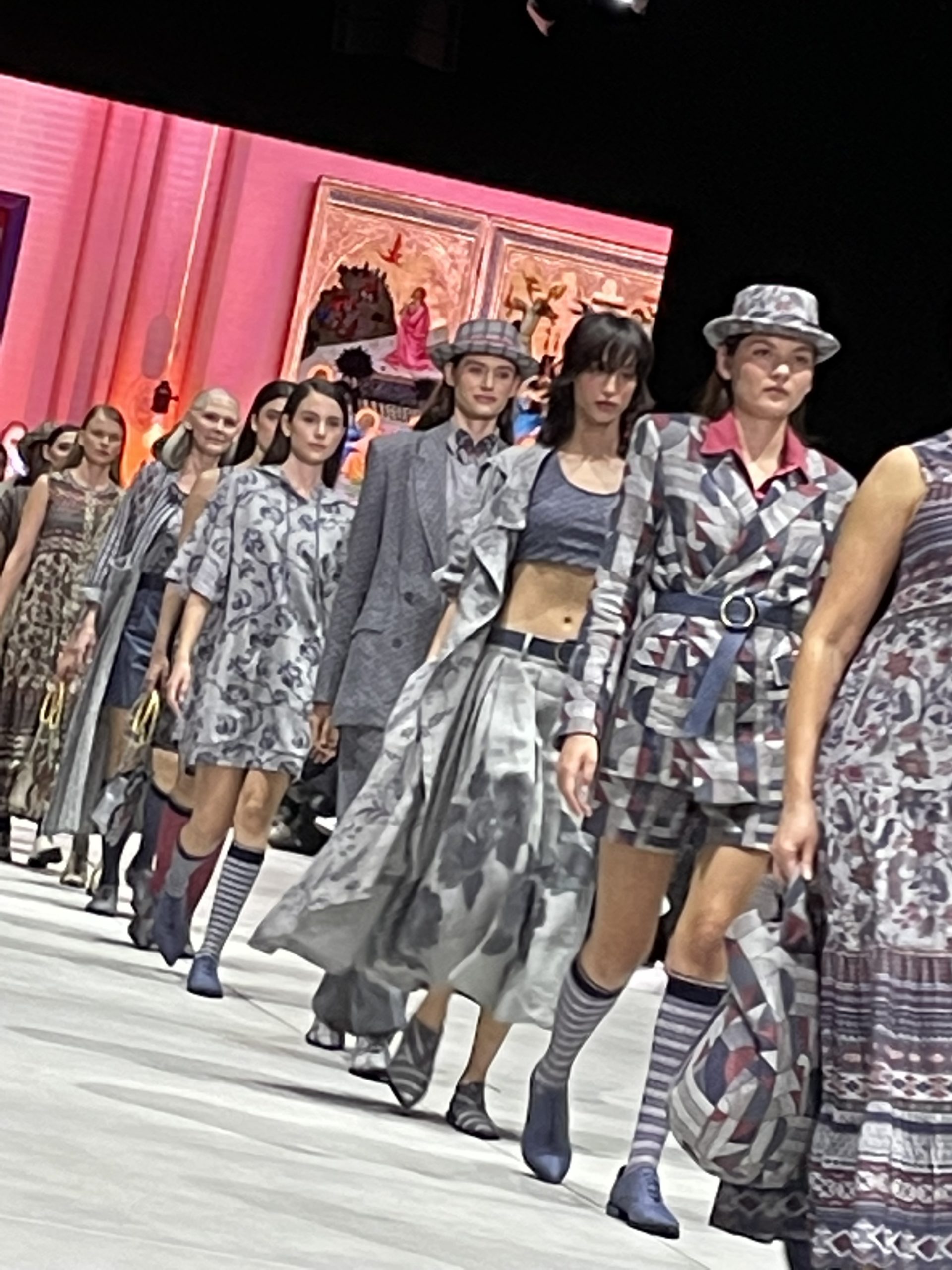 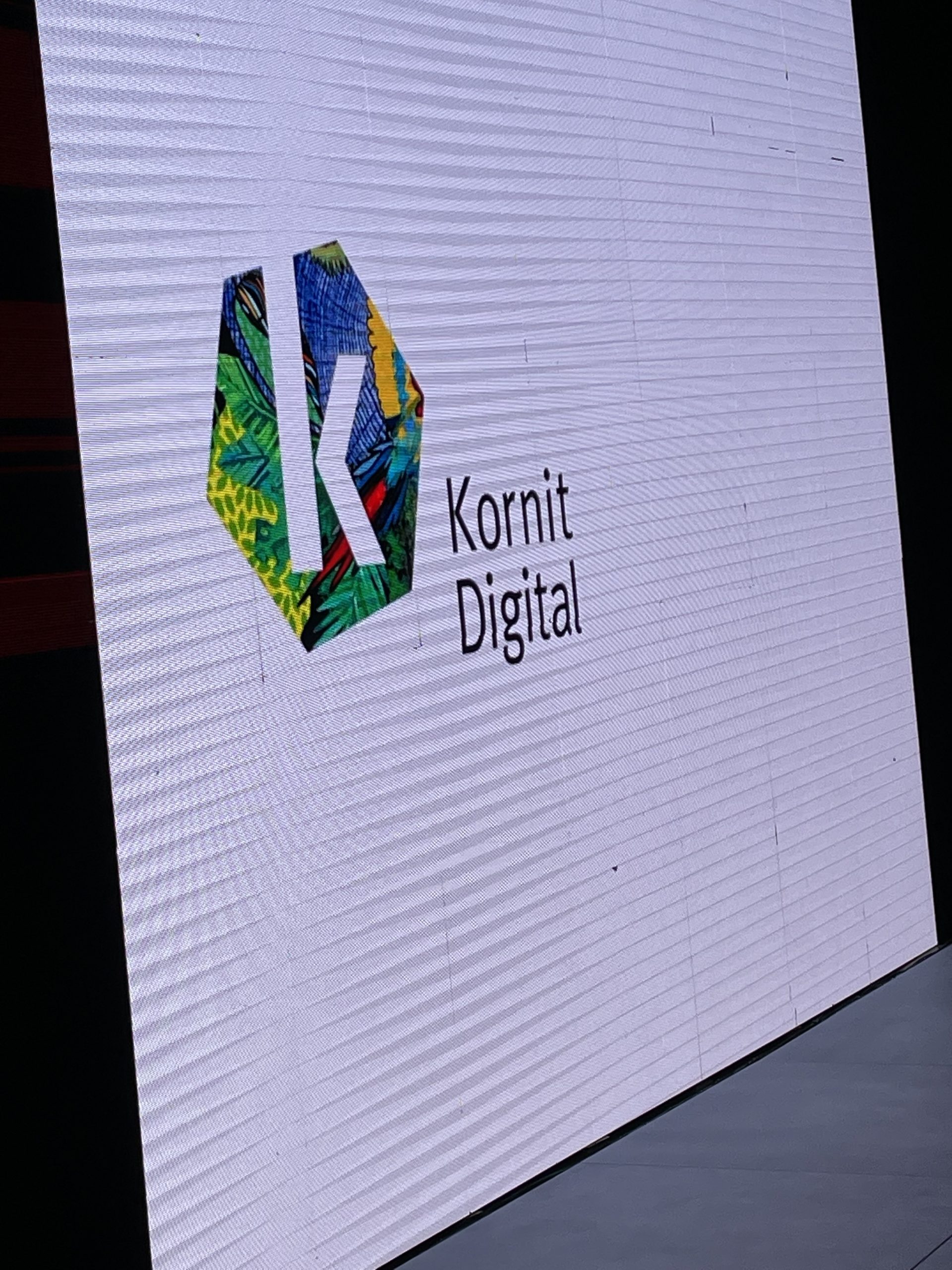  After Samuel’s opening presentation, we sat in on a Fashion Experience Panel, featuring Yanky & Nataf—the fashion design duo whose work we’d seen the day before—and inclusive fashion design company Palta, which designed the opening ceremony uniform for the Israeli Paralympic team. In an intro video, Yanky & Nataf stated, “Fashion will not change the world, but the way we make it will.” Both design teams expressed how great it is to be able to produce on-demand using Kornit’s technology.
According to Palta co-founder Netanel Yehuda Halevi, a social activist, motivational speaker, PR specialist, and lifelong wheelchair user due to muscular dystrophy, clothing is the best way to say something about oneself, and “printing is the best way to do this.”
Shay Senior, Palta’s other co-founder, agreed:
Direct-to-Garment and Additive TextilesThe last session of the morning was about Kornit’s product strategy and presented by Chief Marketing Officer Omer Kulka. He told us that “make better” is the company’s motto, and that Kornit is doing this in a very proactive way.
He explained that Kornit sees “the market and the world around us” as the “front of the house.” These are the demand generators, like consumers and e-commerce, and fashion is accelerating in this digital space. The back end is the pollution generated by the “old production means” of fashion, and Kornit wants to bridge that gap using its tools, including KornitX. Kulka discussed the company’s new Atlas MAX Poly system, which is described in a press release as “an industry-first direct-to-garment (DTG) solution” that delivers colorful, high-quality digital decorations for design on poly-blended and polyester apparel. Kulka said the company couldn’t penetrate the market before and truly transform analog to digital, but that the durable Atlas MAX Poly is making this possible. 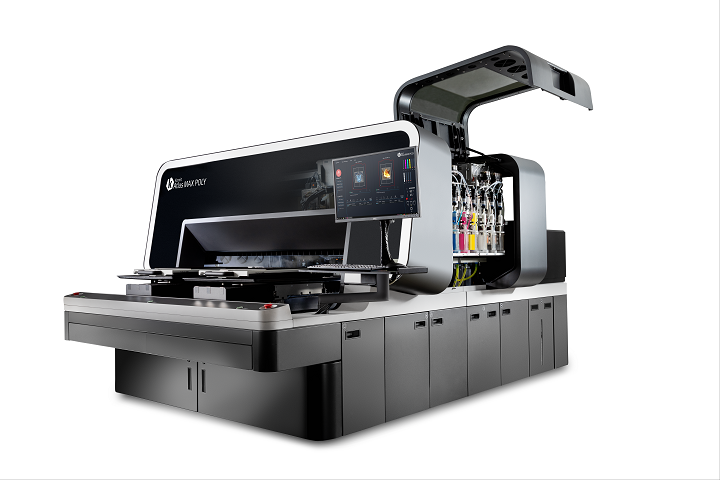 Kornit Atlas MAX Poly is the newest member of the proven Kornit MAX family and the industry's first for high-volume digital production for vibrant design on polyester and polyester-blended apparel. Photo by Kfir Ziv. Kornit Atlas MAX Poly is the newest member of the proven Kornit MAX family and the industry's first for high-volume digital production for vibrant design on polyester and polyester-blended apparel. Photo by Kfir Ziv.He explained that, because Kornit has these digital capabilities, it can penetrate the next generation of applications and verticals, like sportswear and promotional brands. One of the best examples of this is the company’s XDi technology, which enables the printing of embossed 3D textures and prints that look like embroidery and includes heat treatment. Kulka also said the company is expanding horizontally, and that the vision for “the textile production floor of the future” is lights-out, with no human operators. He noted that automation is a journey, so Kornit is not 100% there yet, but the company will begin to show its soon-to-be-available products for automation through its KornitX pixel to parcel solutions. He told us that next, we’d see the platforms that run these solutions, like the Presto Max, and the unveiling of the Apollo technology prototype, with its various modules. We’d also see the Atlas MAX Poly, which he called the “next generation of polyester technology.”
Semi-Automated Digital FashionIt was then time for us to split up into groups for the tour, based on the lanyard color of each attendee. The colors were blue, pink, yellow, and black, or CMYK, a clever take on the model most often used in color printing. We saw Kornit’s microfactory solution, which features its Presto & Cut textile production workflow, complete with roll to roll printing. This concept has major potential in the AM fashion industry. First, a customer goes online to design and order their custom apparel, then chooses the fabric they want. The design is then sent to the Presto MAX, which can print white ink on dark fabric, neon colors, and XDi 3D decorative applications in a single-step process. The employee explaining the technique noted that this solution is far more sustainable than others, with no water input or output. 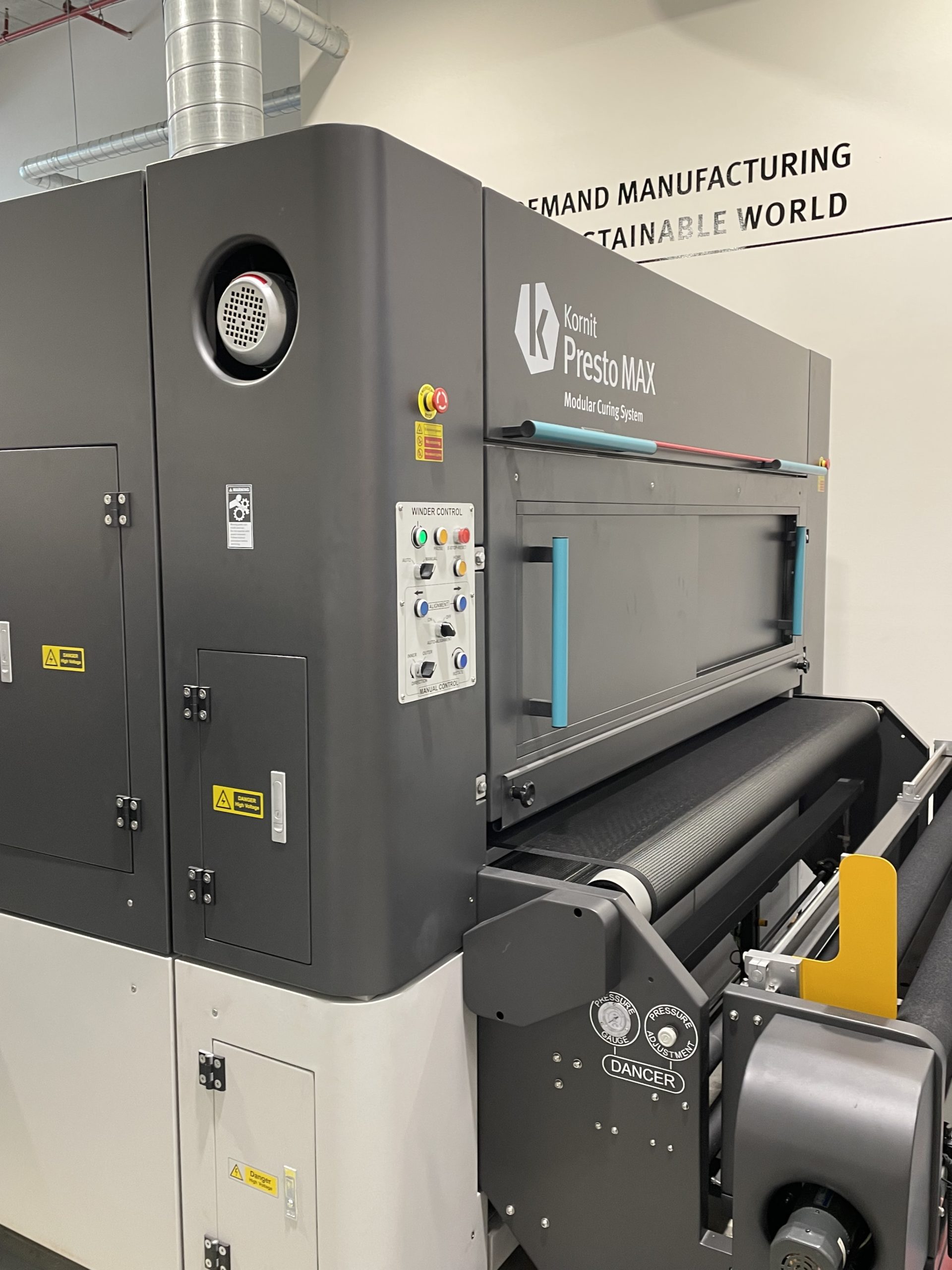 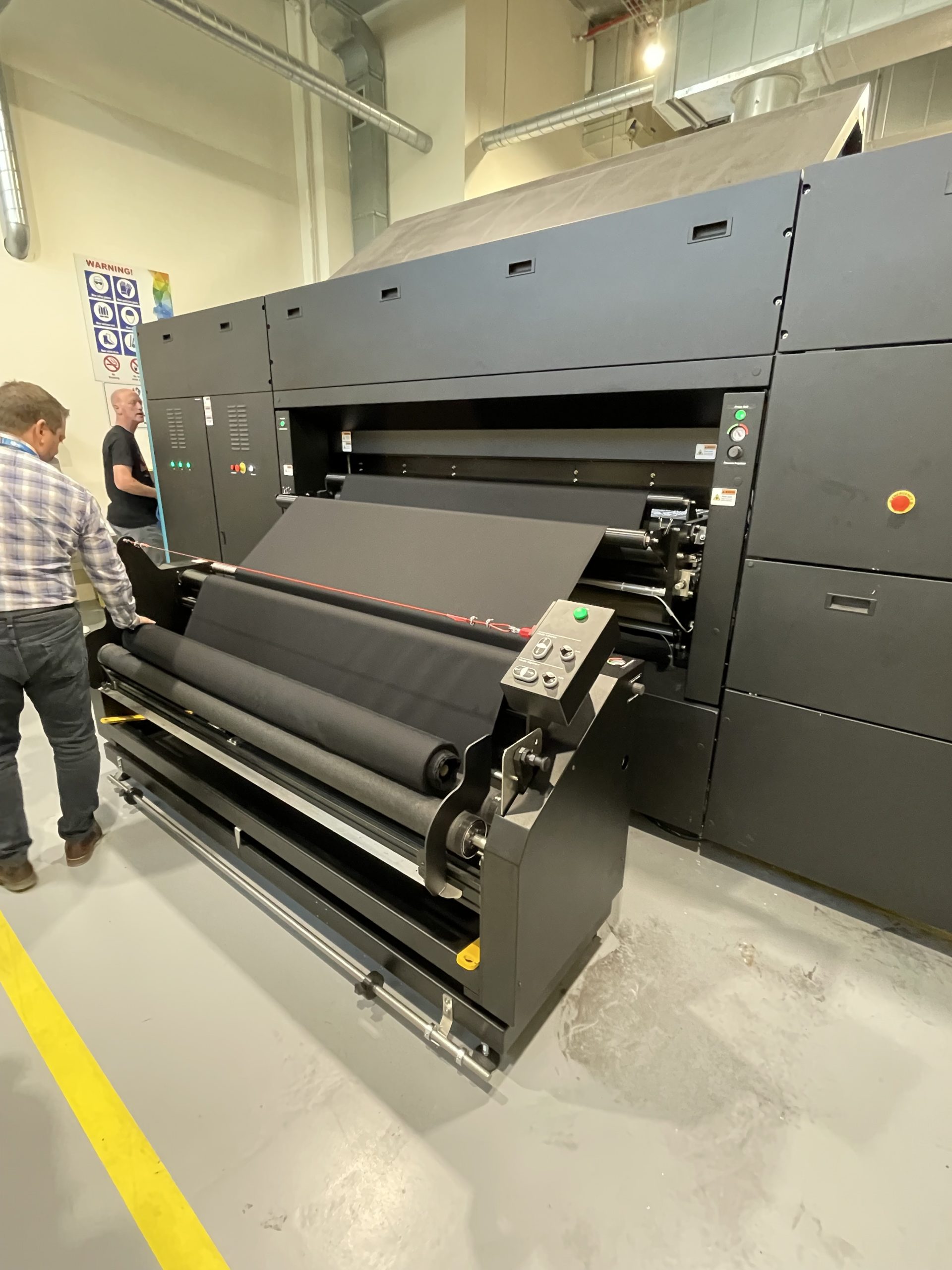 Color is only printed on areas of the fabric that will be cut, and the remaining fabric scraps are recyclable. Once the garment has been dried on the machine, it’s cut and sorted. 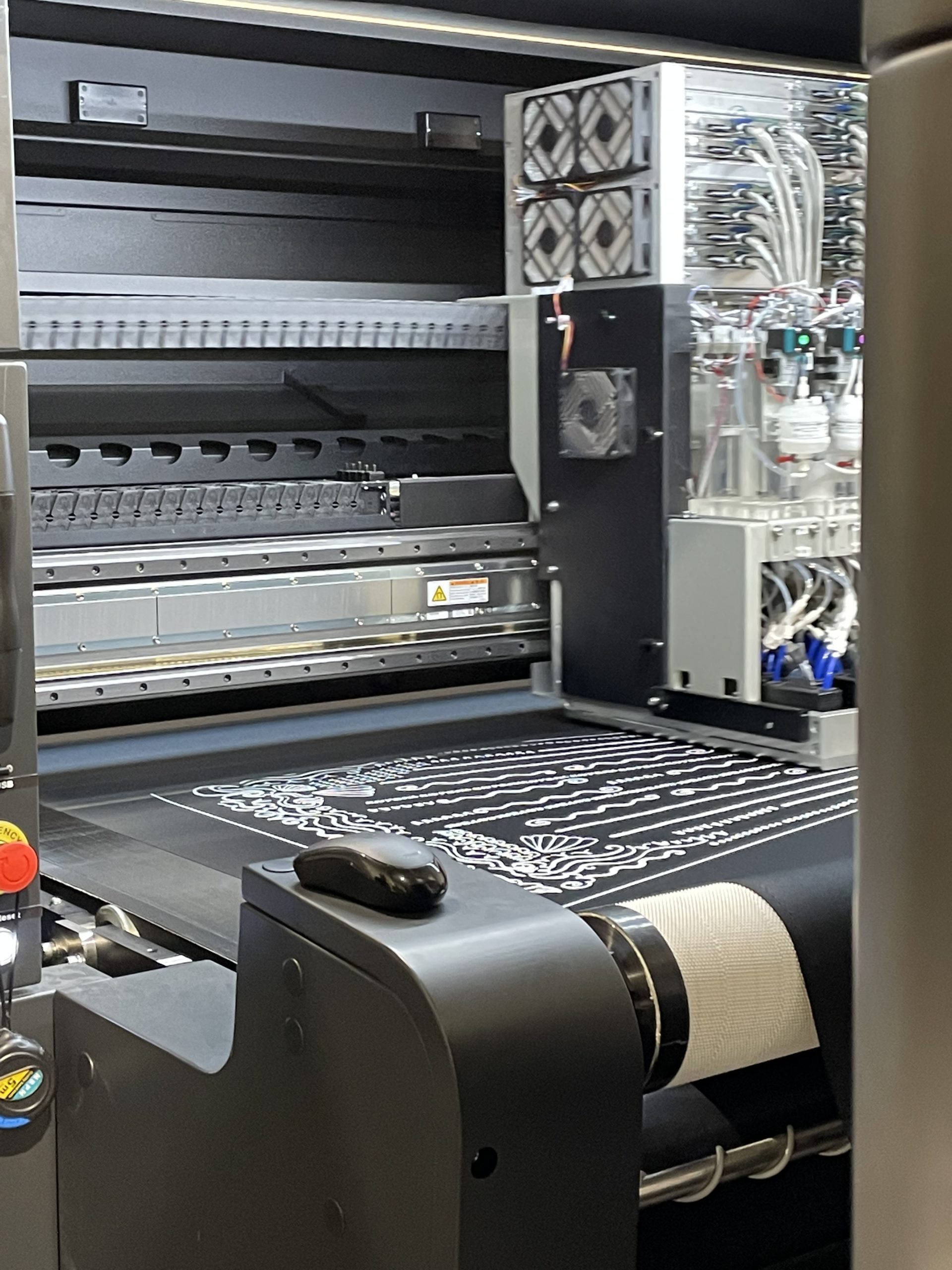 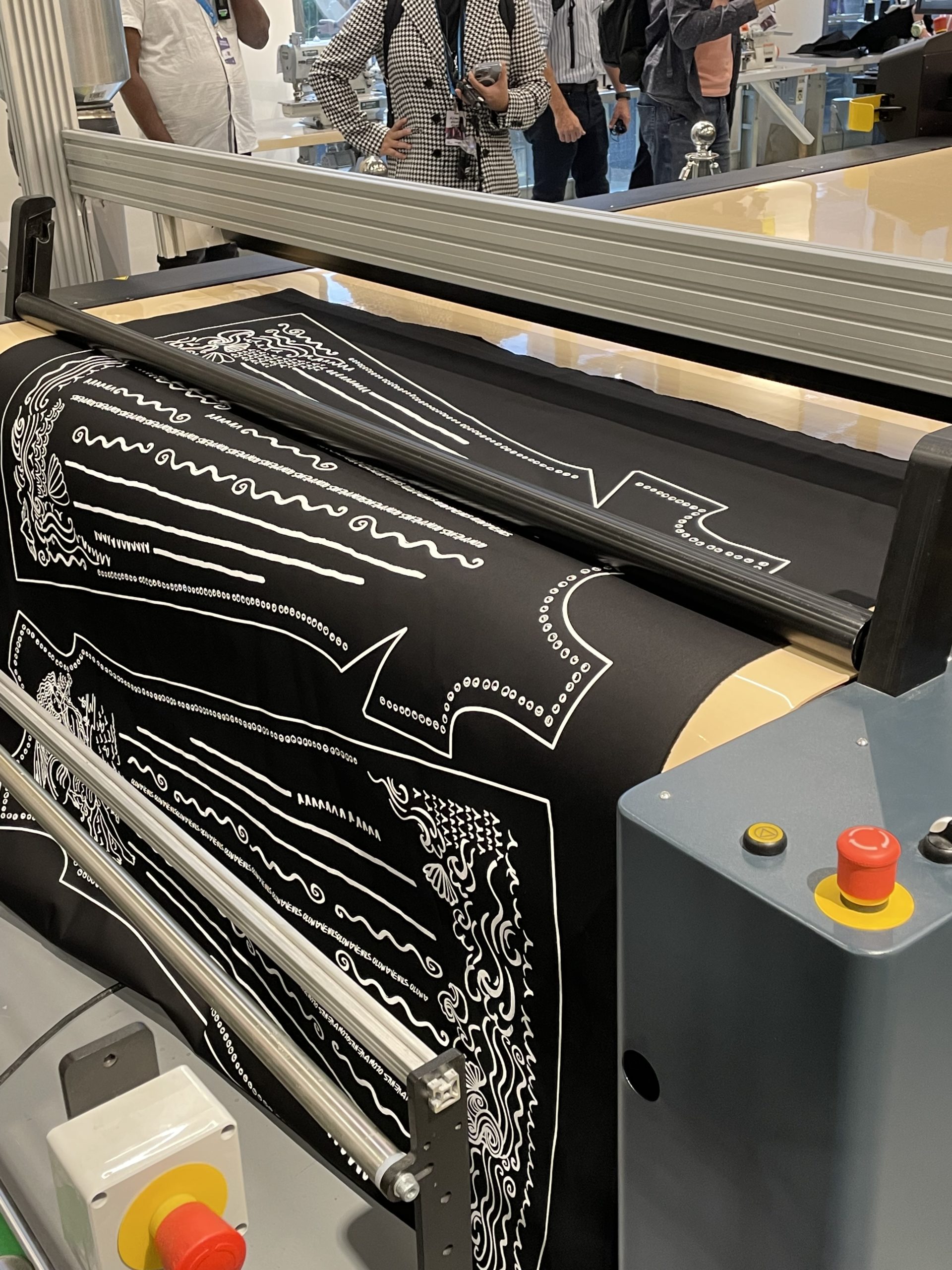 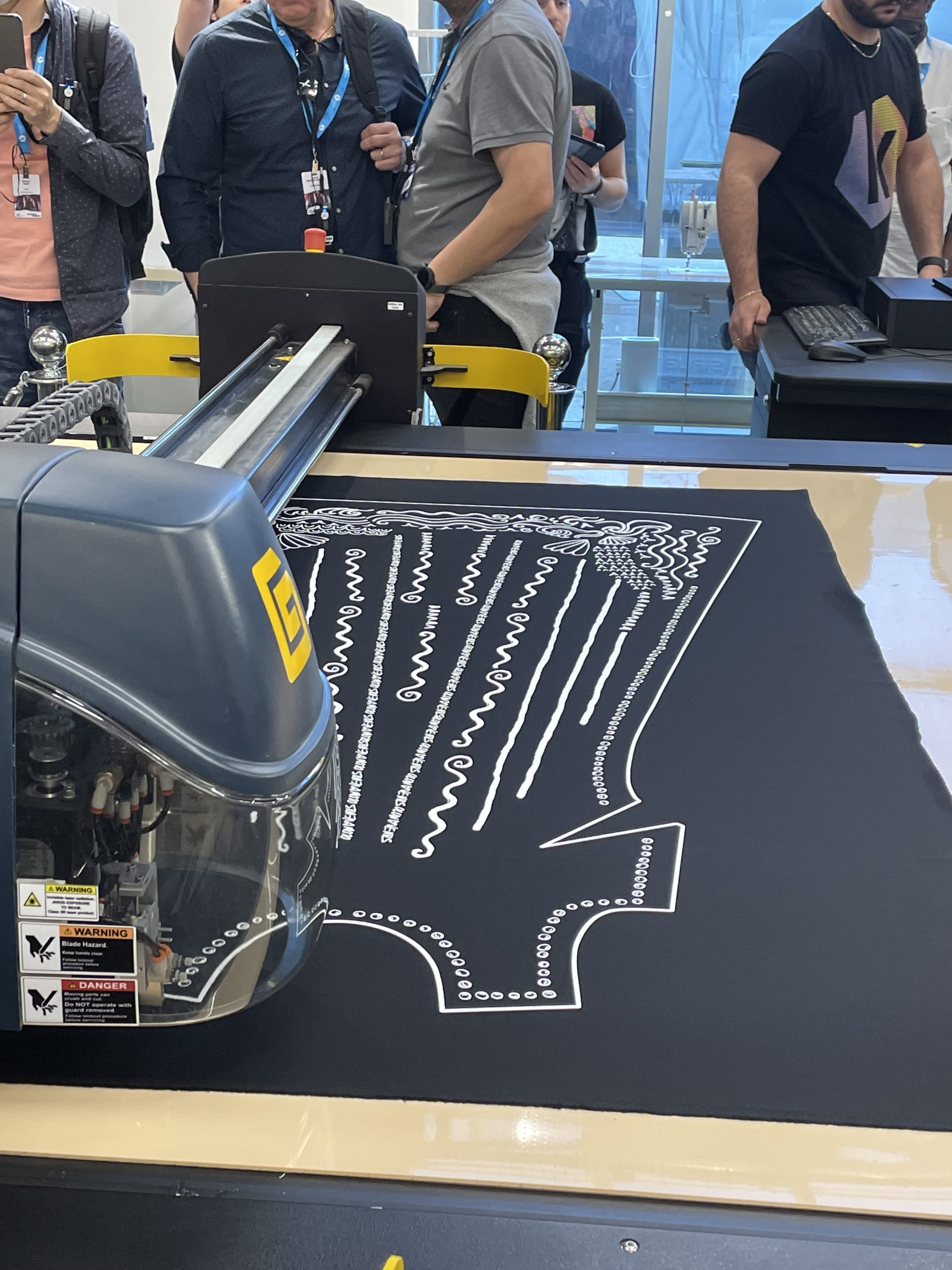 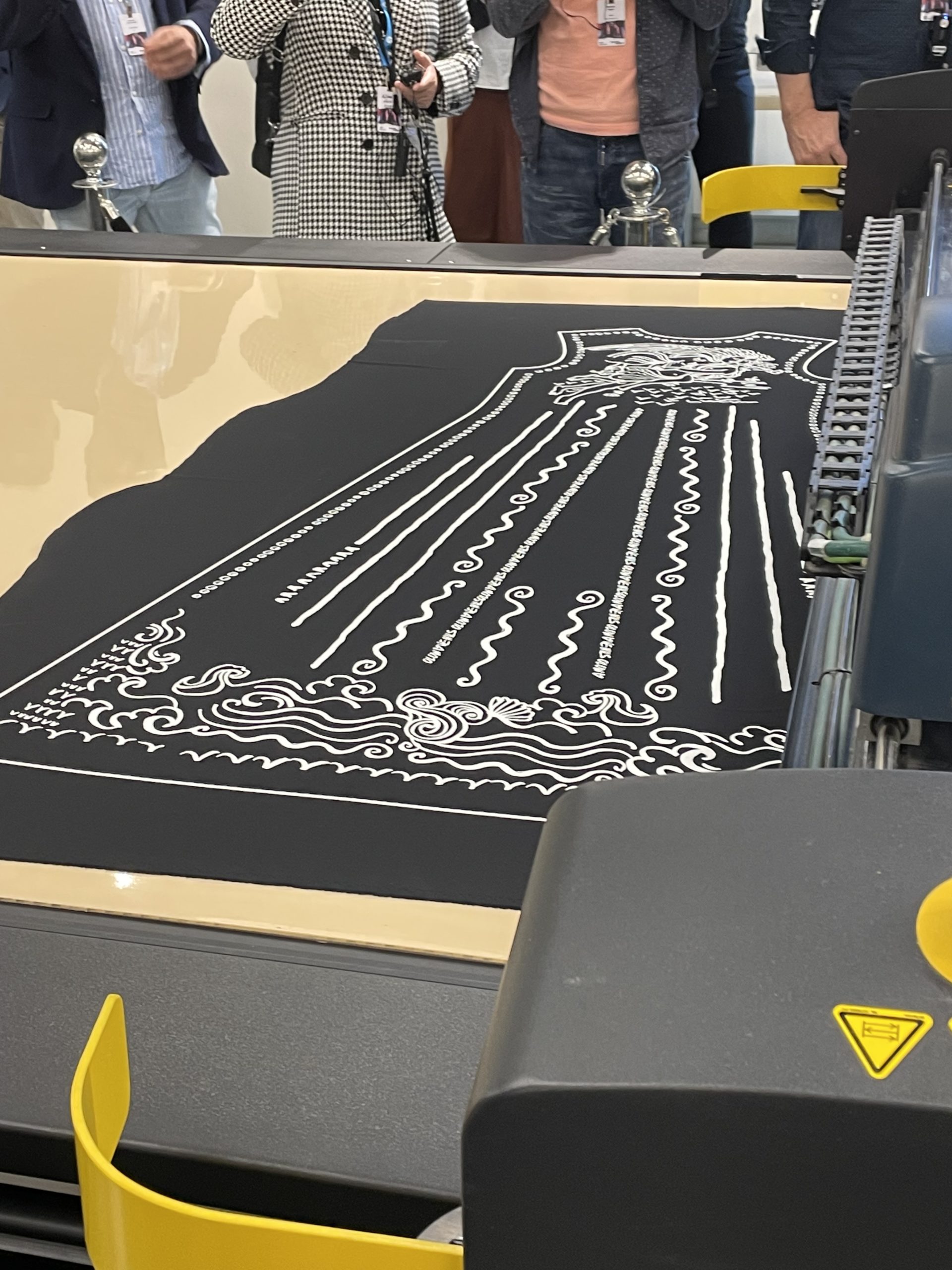 Every step of the way, the operator scans the bar code to ensure they’re creating exactly what the customer asked for, with no mistakes. This dress had two parts printed and cut, details shown by the barcode. This lets the operator know that two pieces need to come off the printer and go to the next station: sewing…not an automated step. 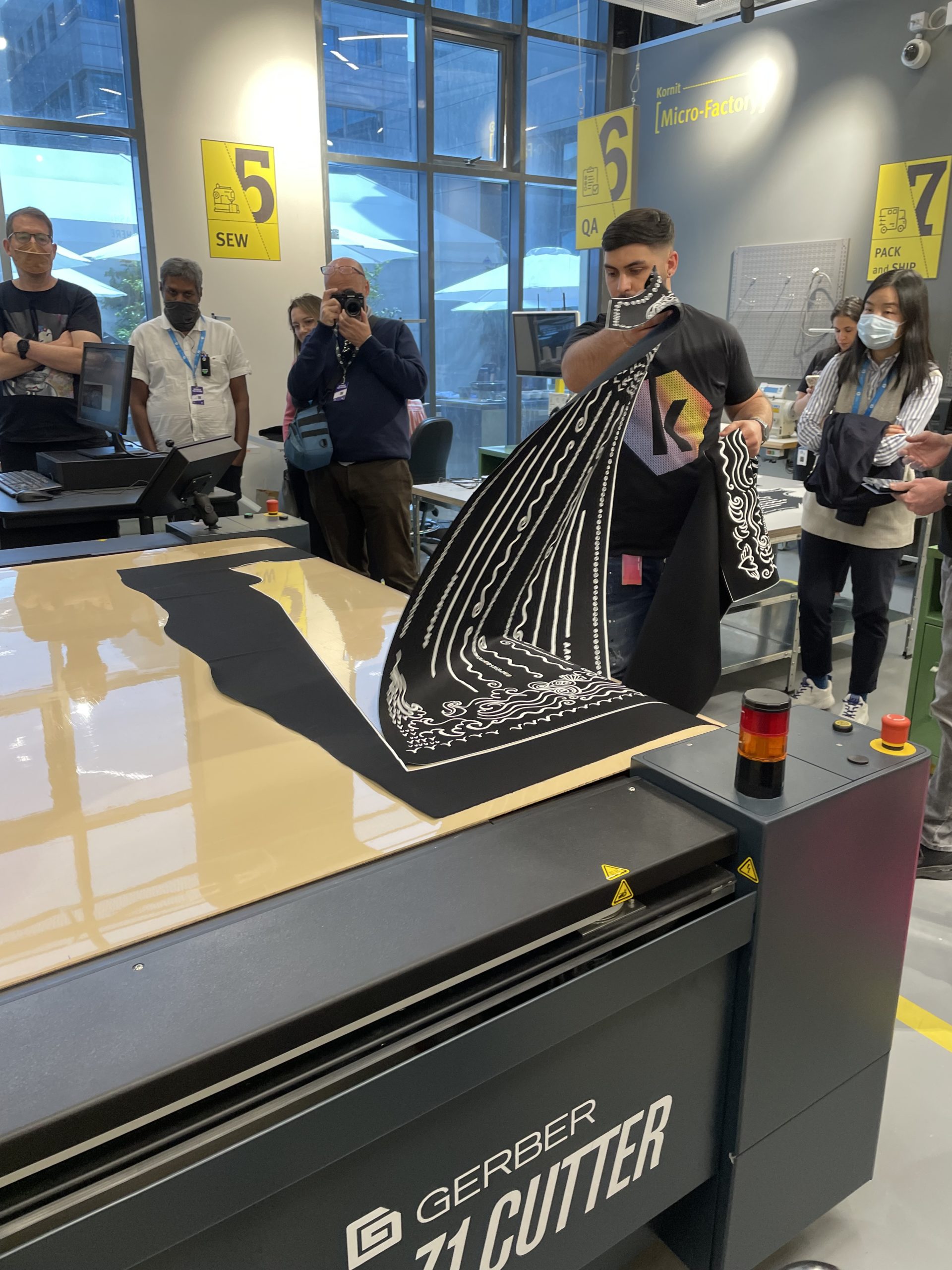 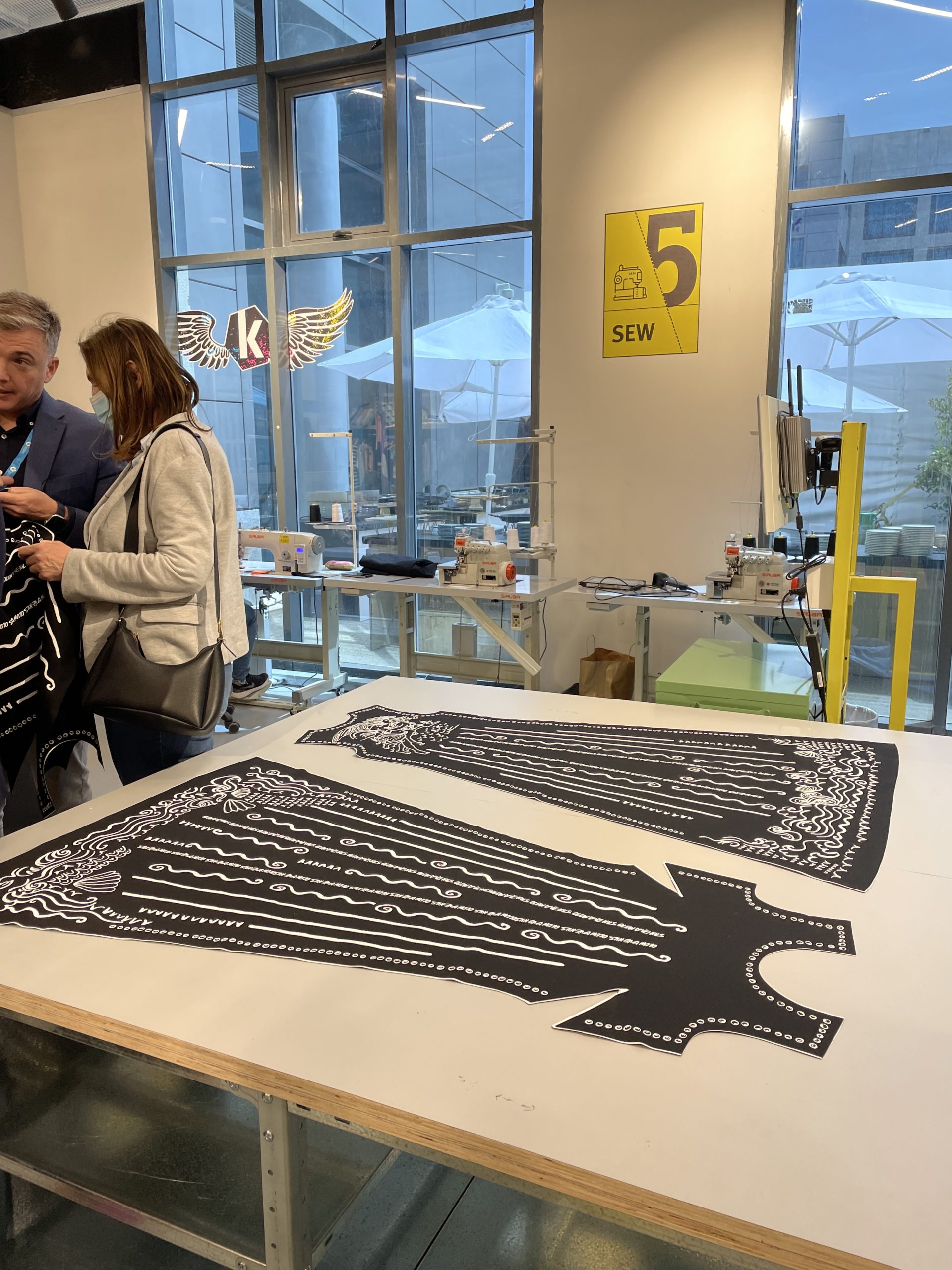 Step six is quality assurance, and once this is finished, the final stage is packing and shipping the garment. Once the bar code is scanned again, the operator gets the customer’s address and prints the shipping label, sending the clothing on to its destination. We also saw the modules that will make up the digital Kornit Apollo DTG system, which features the company’s MAX technology and textile drying functionality from Tesoma. The system is still in the tech prototyping phase, so the modules aren’t connected yet, but once they are, the Apollo should be able to offer integrated smart curing processes and full automation control in the same platform. The Apollo system is, according to a press release, “considered a future game-changer for the mainstream mass production of fashion and apparel,” which is a major market opportunity. The company claims it’s the most comprehensive single-step, digital end-to-end system for short and medium nearshore mass production runs. It is also said to offer the “highest output per operator.” 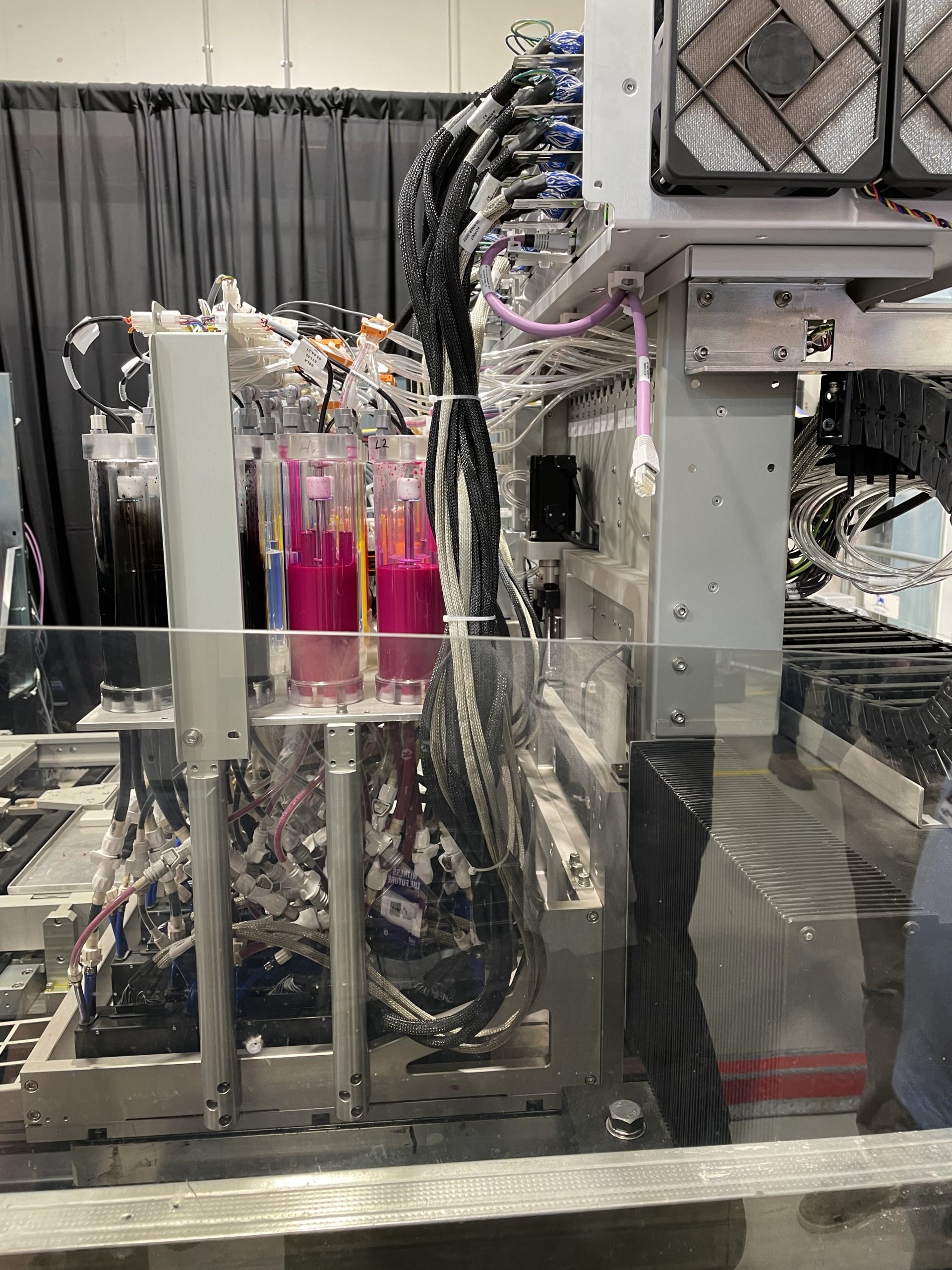    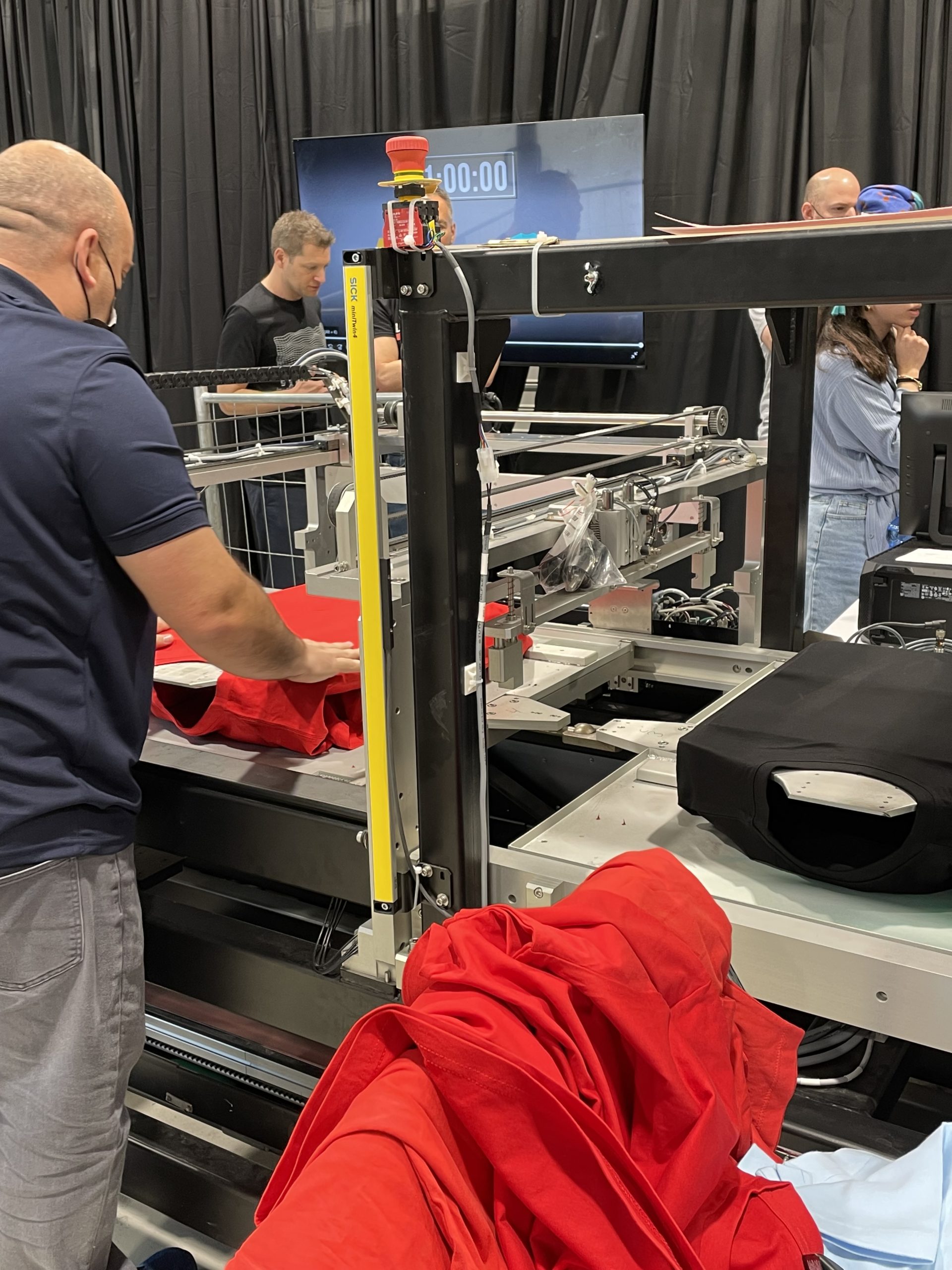
 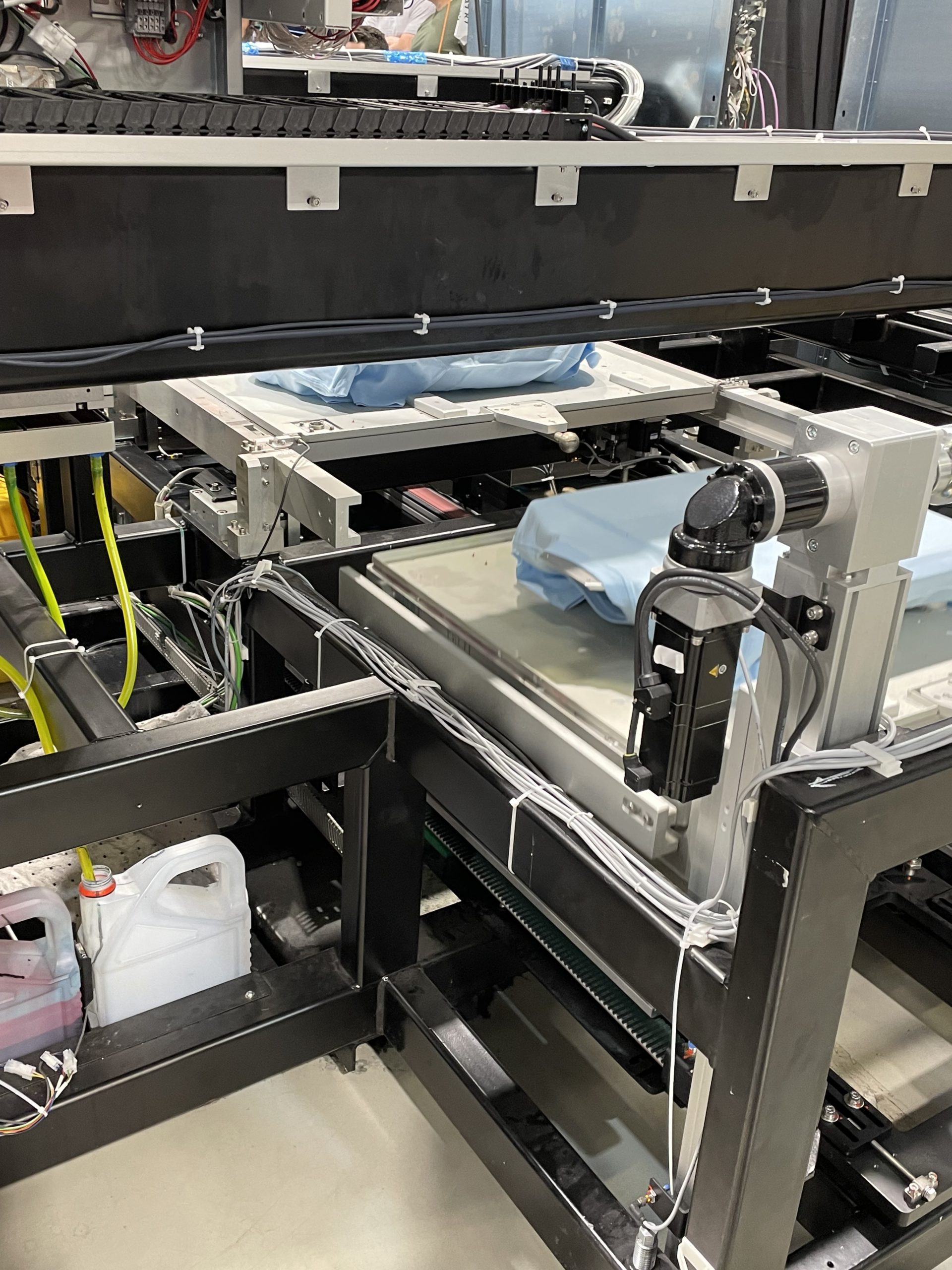 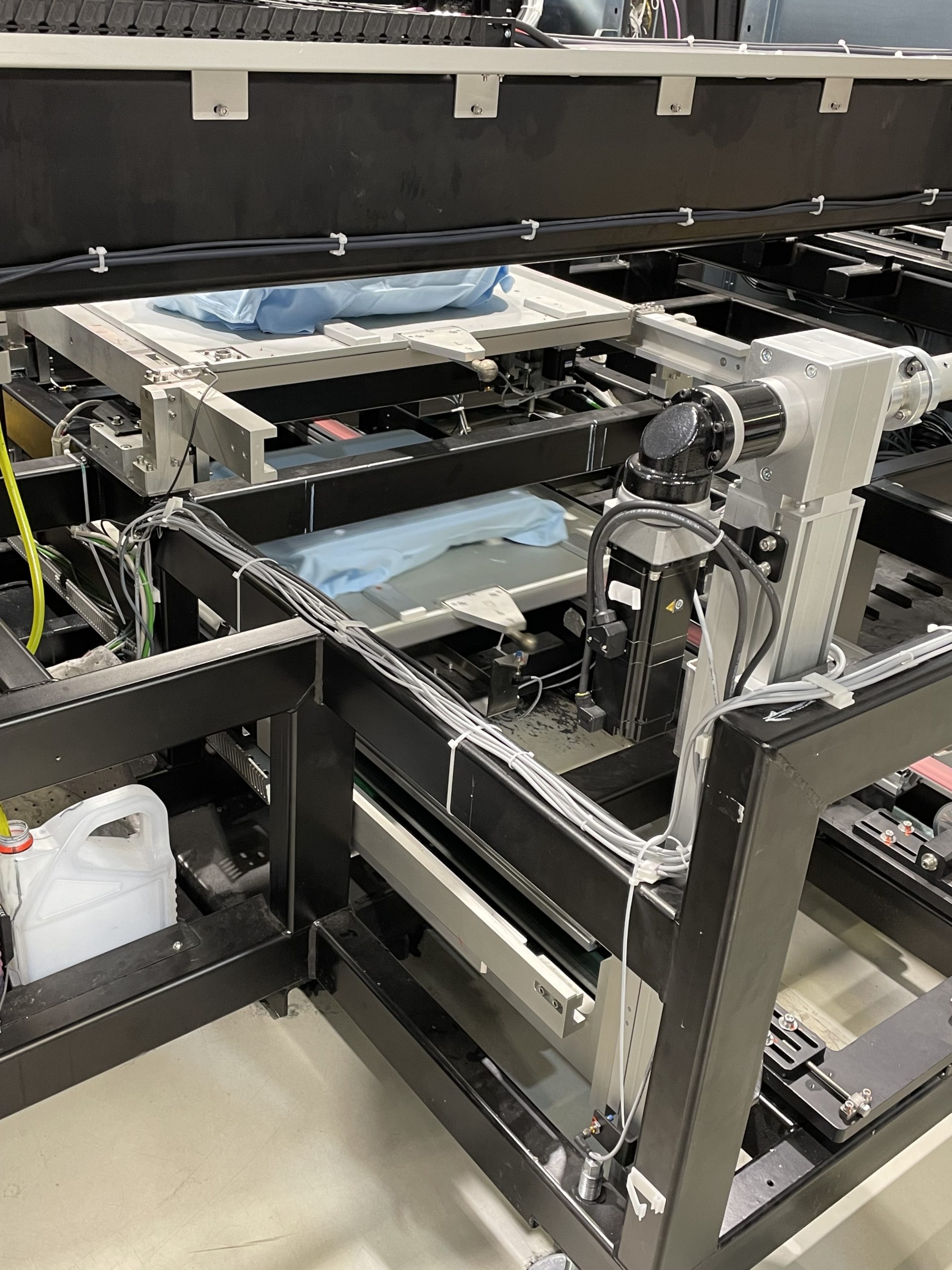 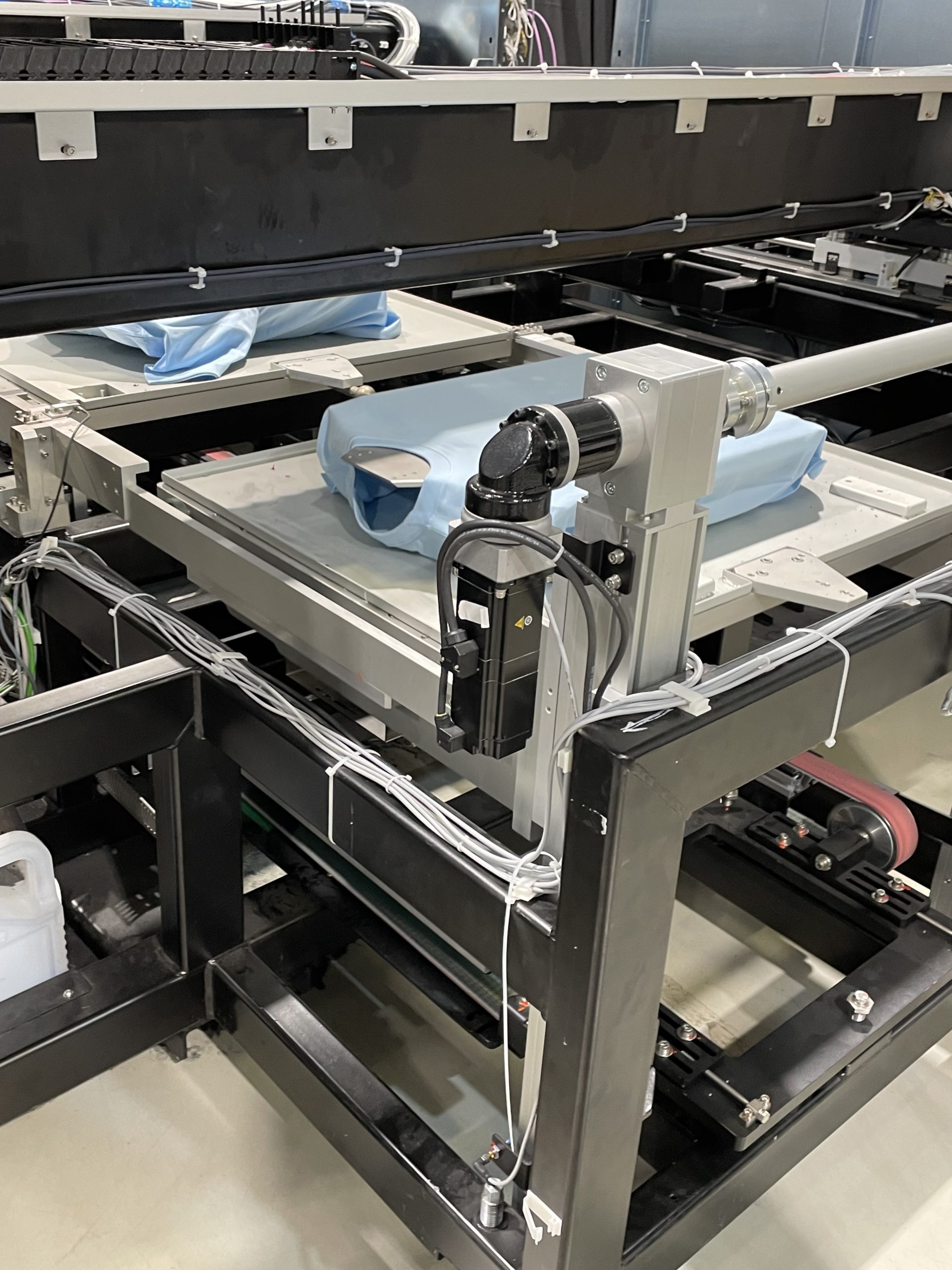 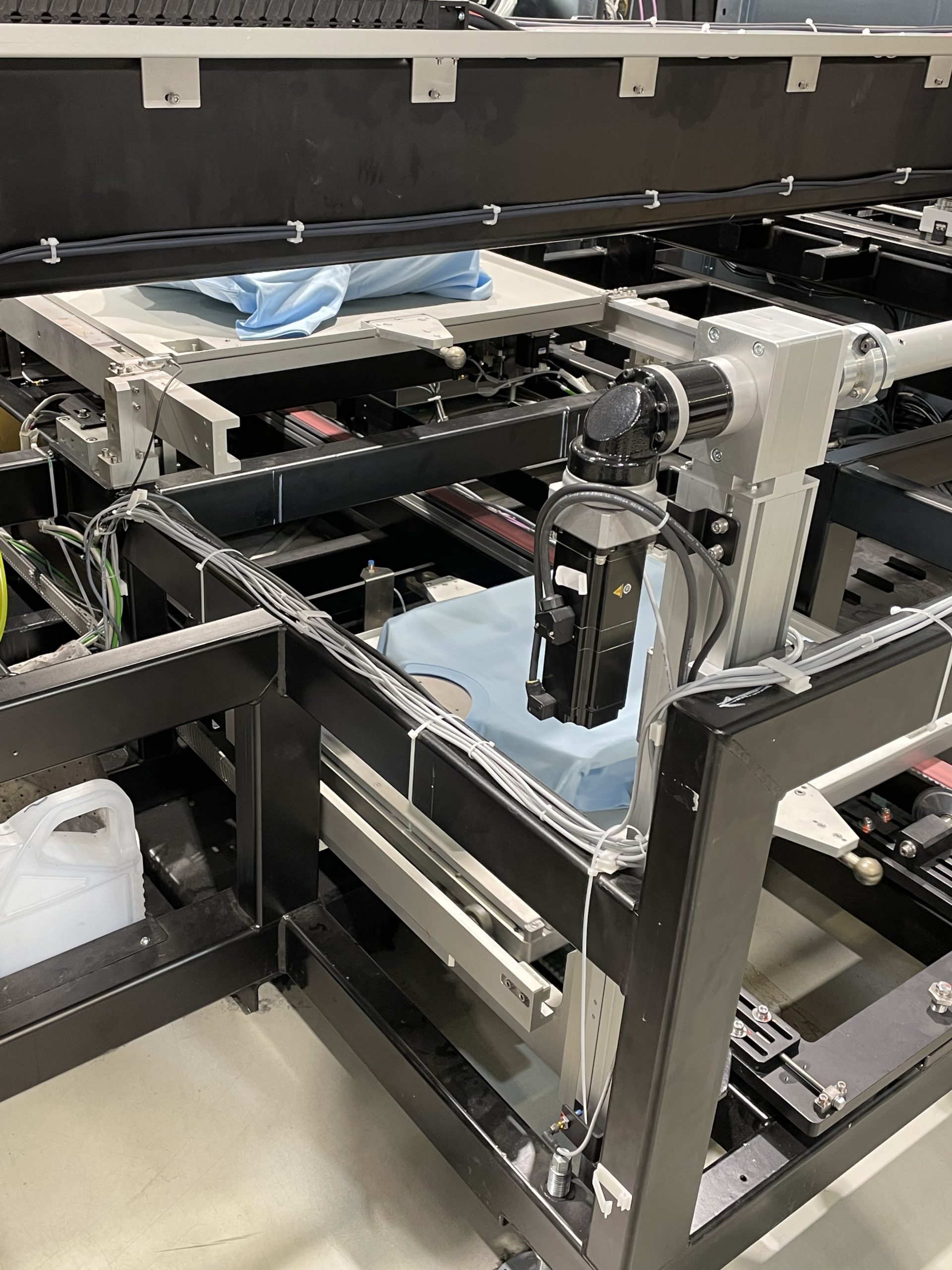 It was interesting to see the automated process of printing on t-shirts, though again, this was more screen printing than 3D printing. The Kornit Atlas MAX was in the same room, and we got to see the new ActiveLoad garment loading and real-time pallet adjustment. The company suggests that this automated, patent-pending robotic solution can increase throughput by up to 20% and deliver repeatable, high-quality output with few errors. The Kornit employee explaining ActiveLoad pointed out that, for most customers, finding skilled labor is a major pain point. That’s why “automation is the key to the future of DTG.” The system is made up of two components: the pallet adjuster, which automatically adjusts based on the size of the shirt placed on it, and the auto-loading mechanism, which pulls the shirt into the machine for printing. A human operator is still needed to place the shirt at the beginning, so the solution isn’t completely automated yet. Regardless, the ActiveLoad enables the Kornit MAX to reach its “full potential” and put out 125 shirts an hour. Touching Additive Textiles 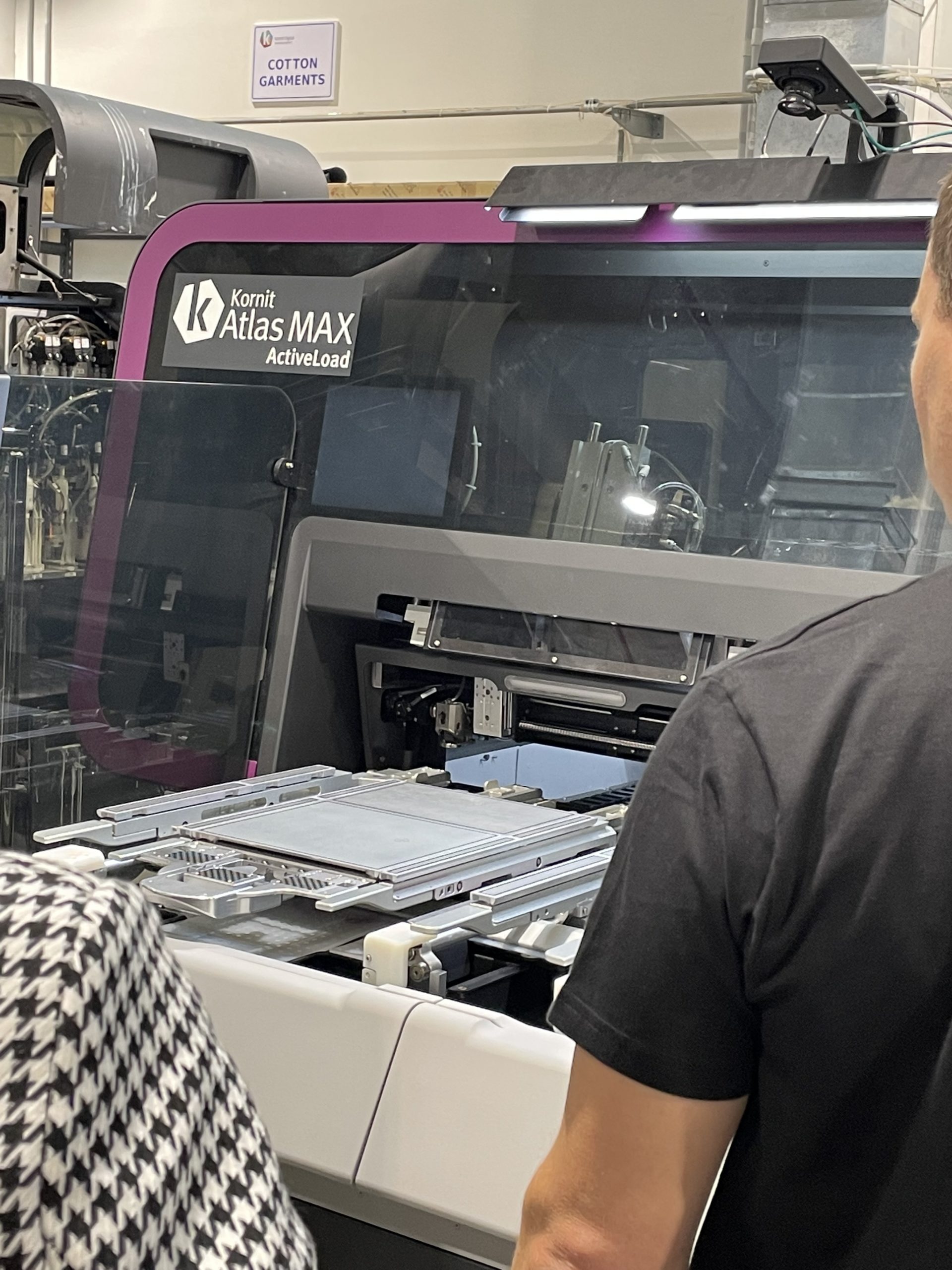  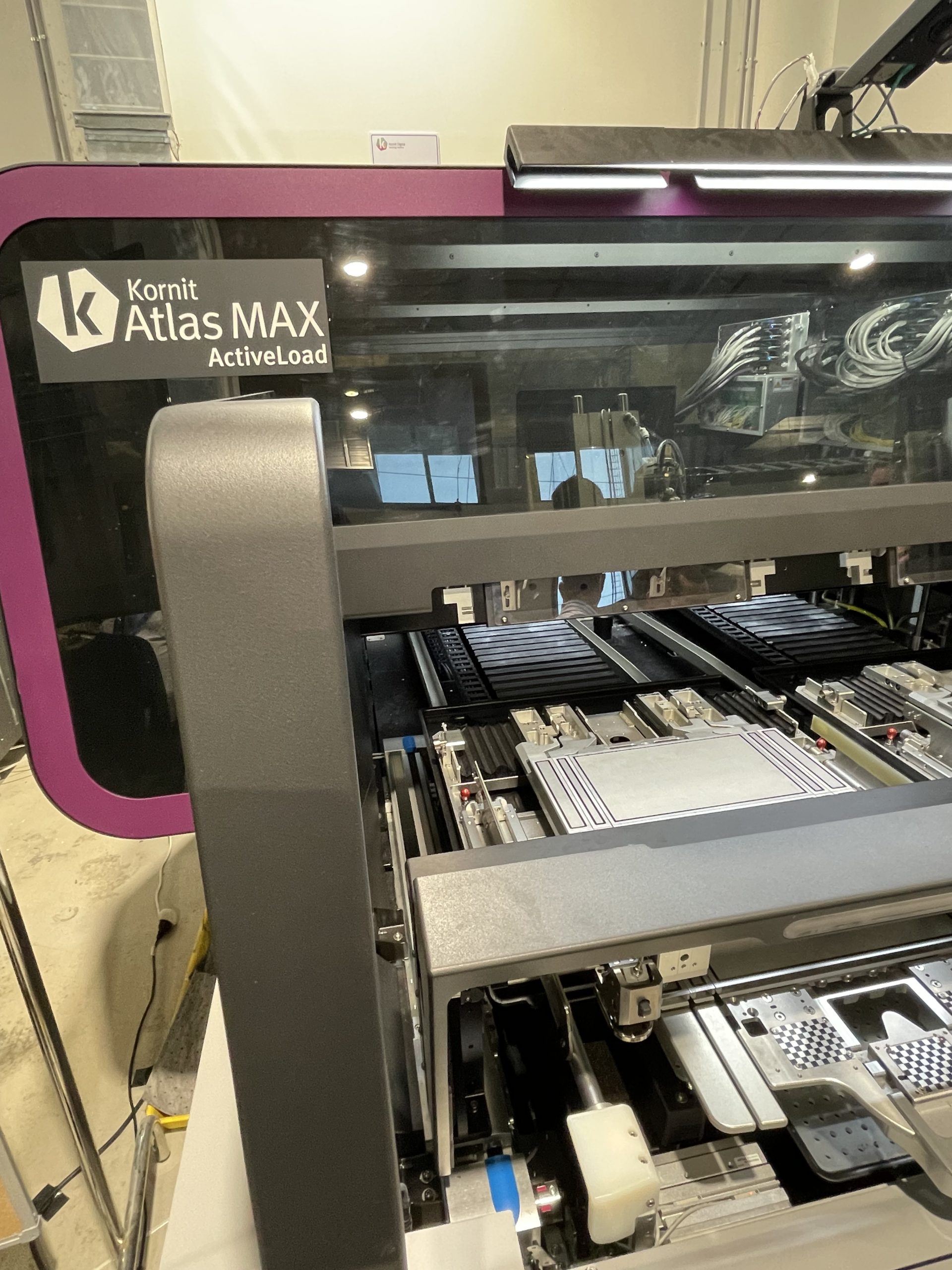 Then, it was time to see the XDi technology up close and personal. Not only can the new high-volume Atlas MAX Poly print photorealistic and semi-gradient images on dark fabric, but it also uses MAX technology to enable smart, autonomous quality control process automation, and high-quality, additive decorative applications. The results were stunning: multiple design effects on polyester are possible, such as screen transfer emulations, high-density vinyl, threadless embroidery, dye sublimation, and 3D effects—available in neon, no less! Using Kornit’s XDi Digitizer tool, users can transform any 2D design into XDi 3D effects and unique textures. 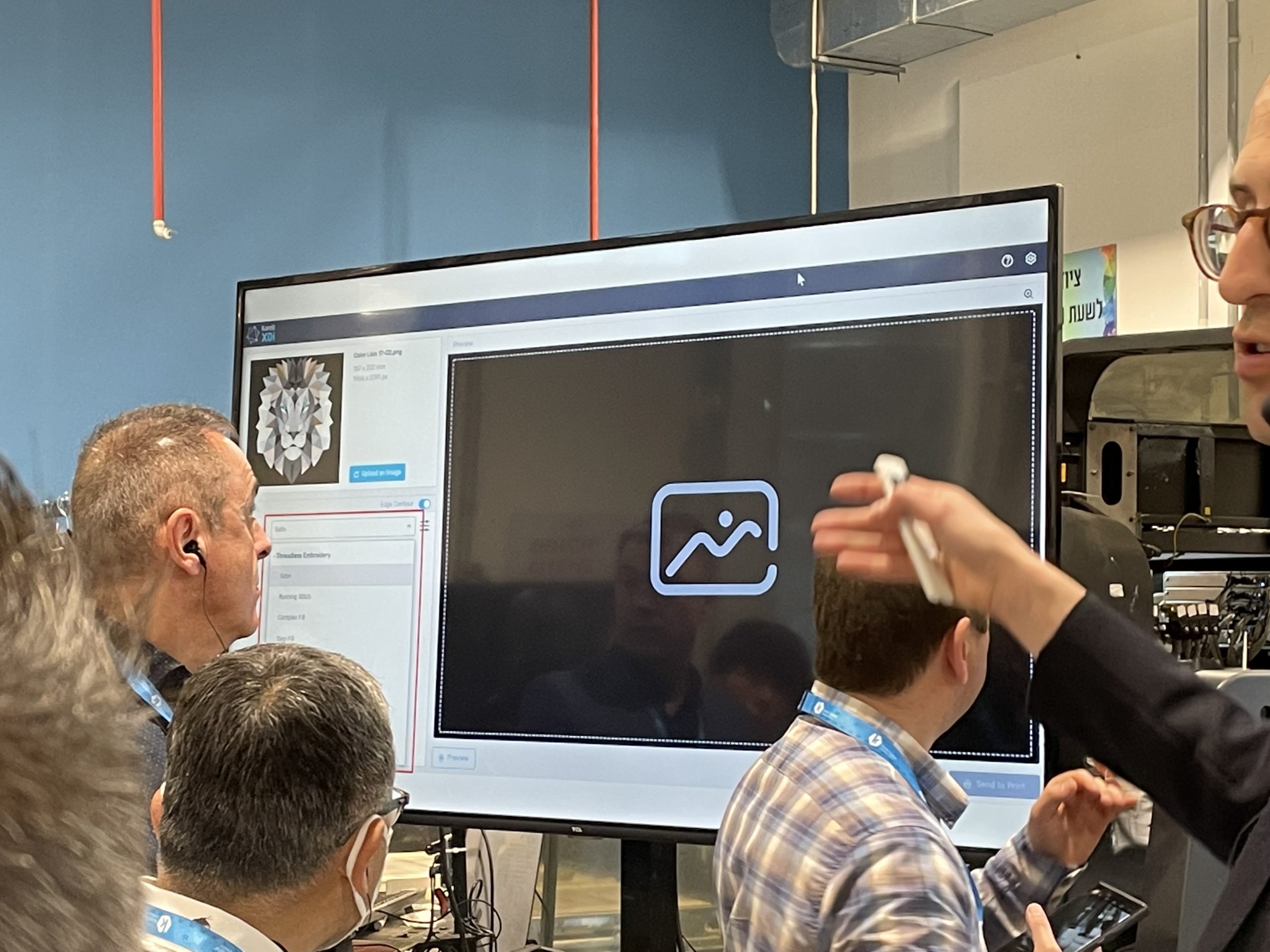 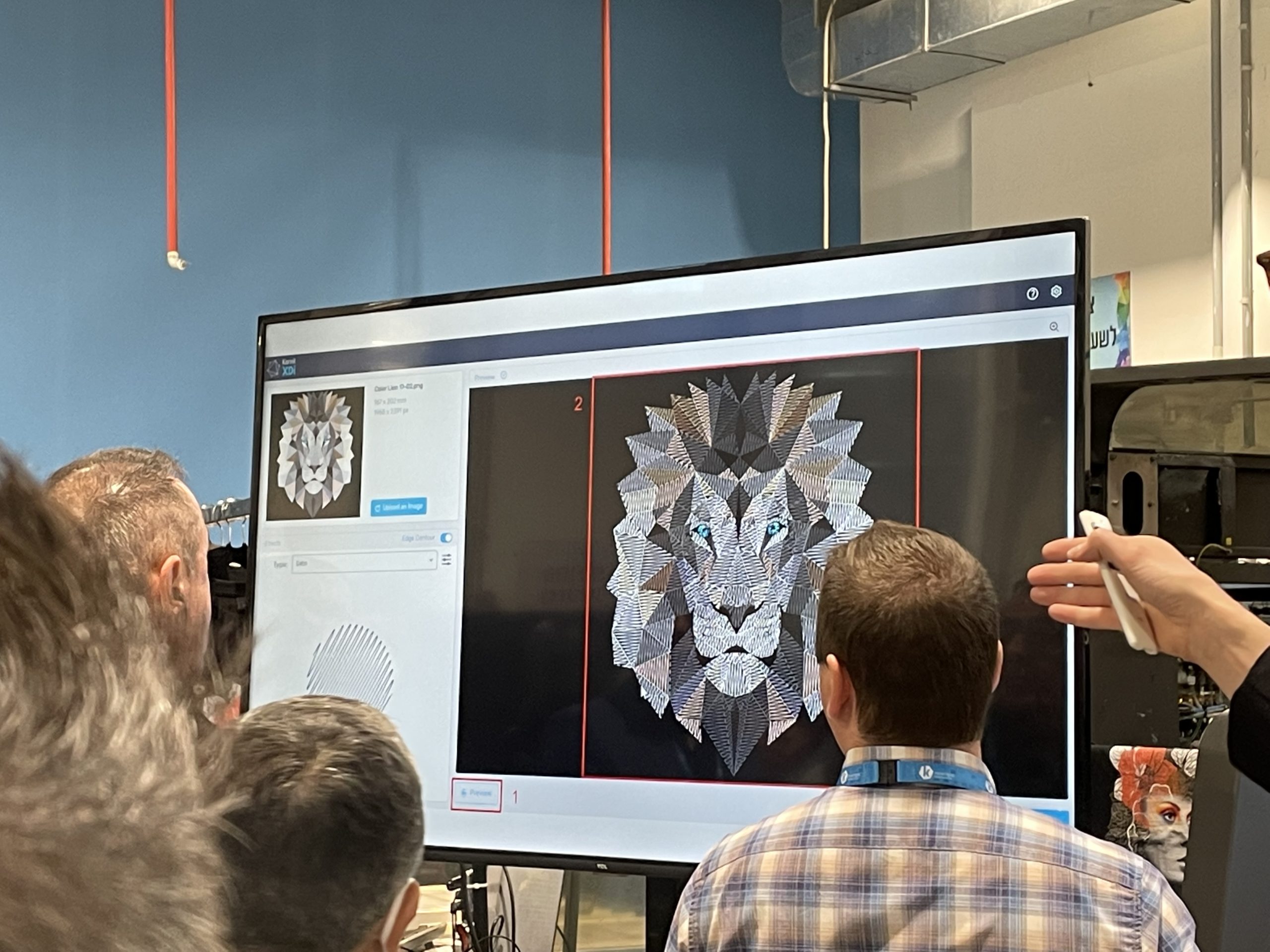
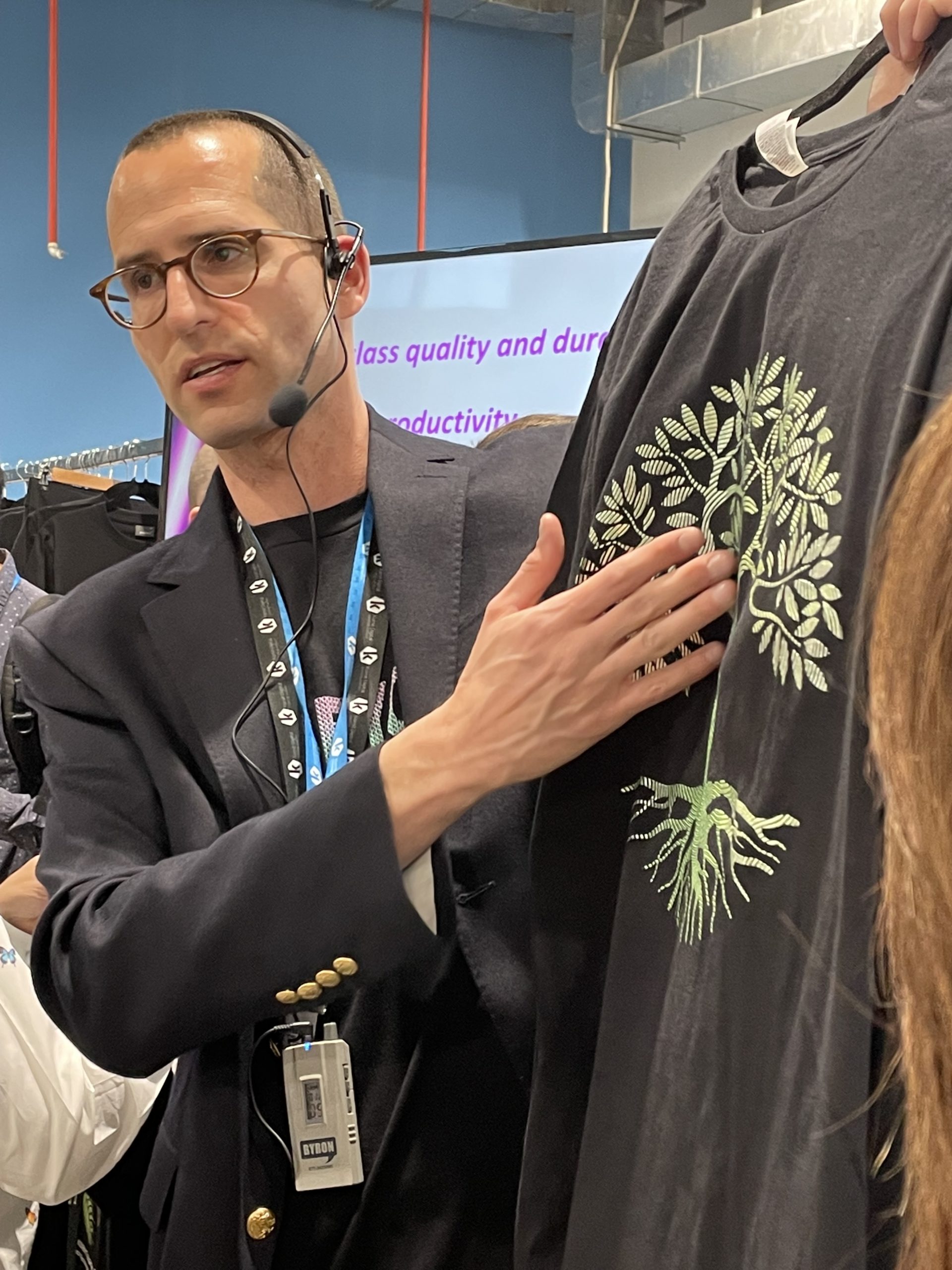 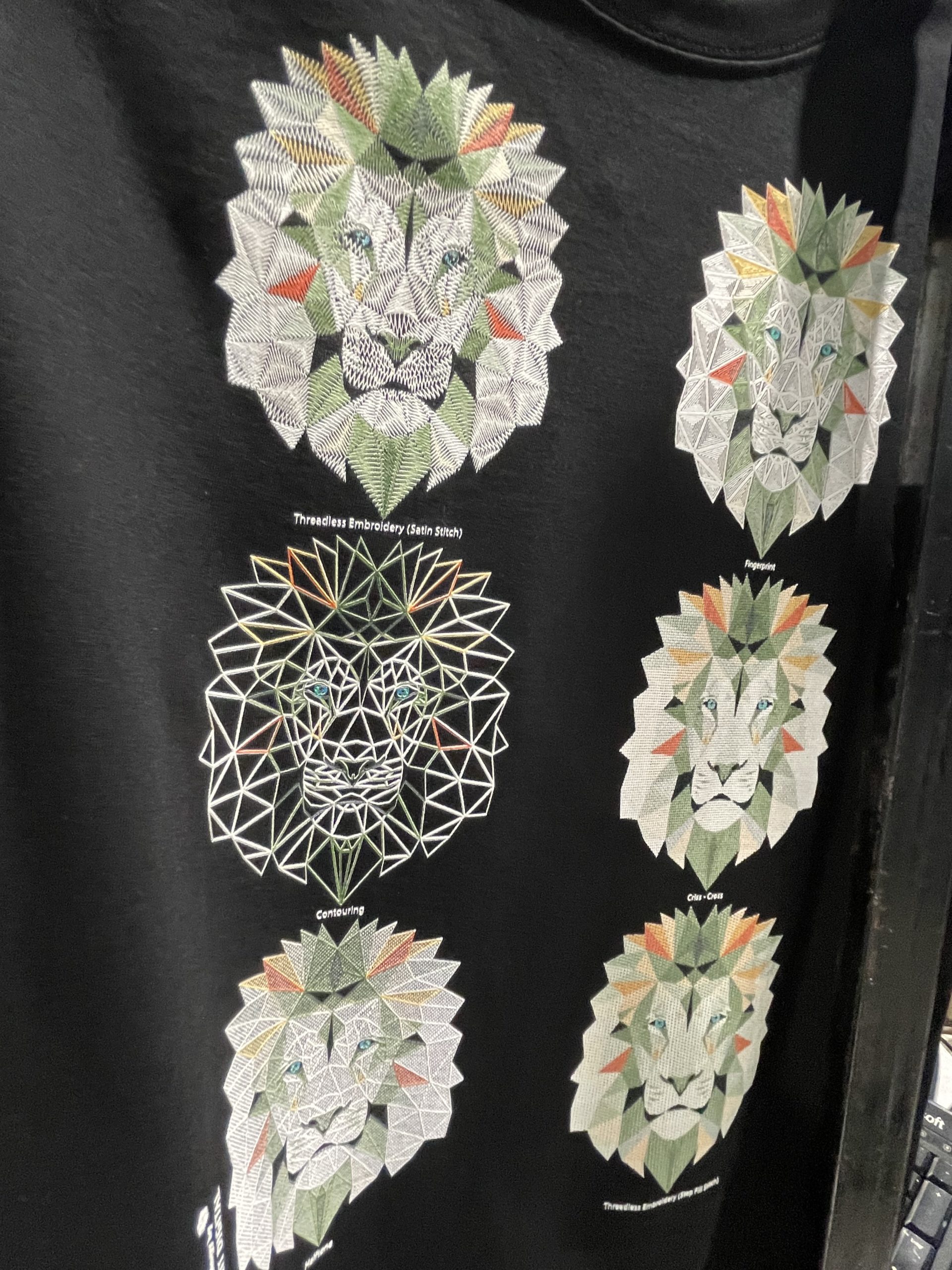 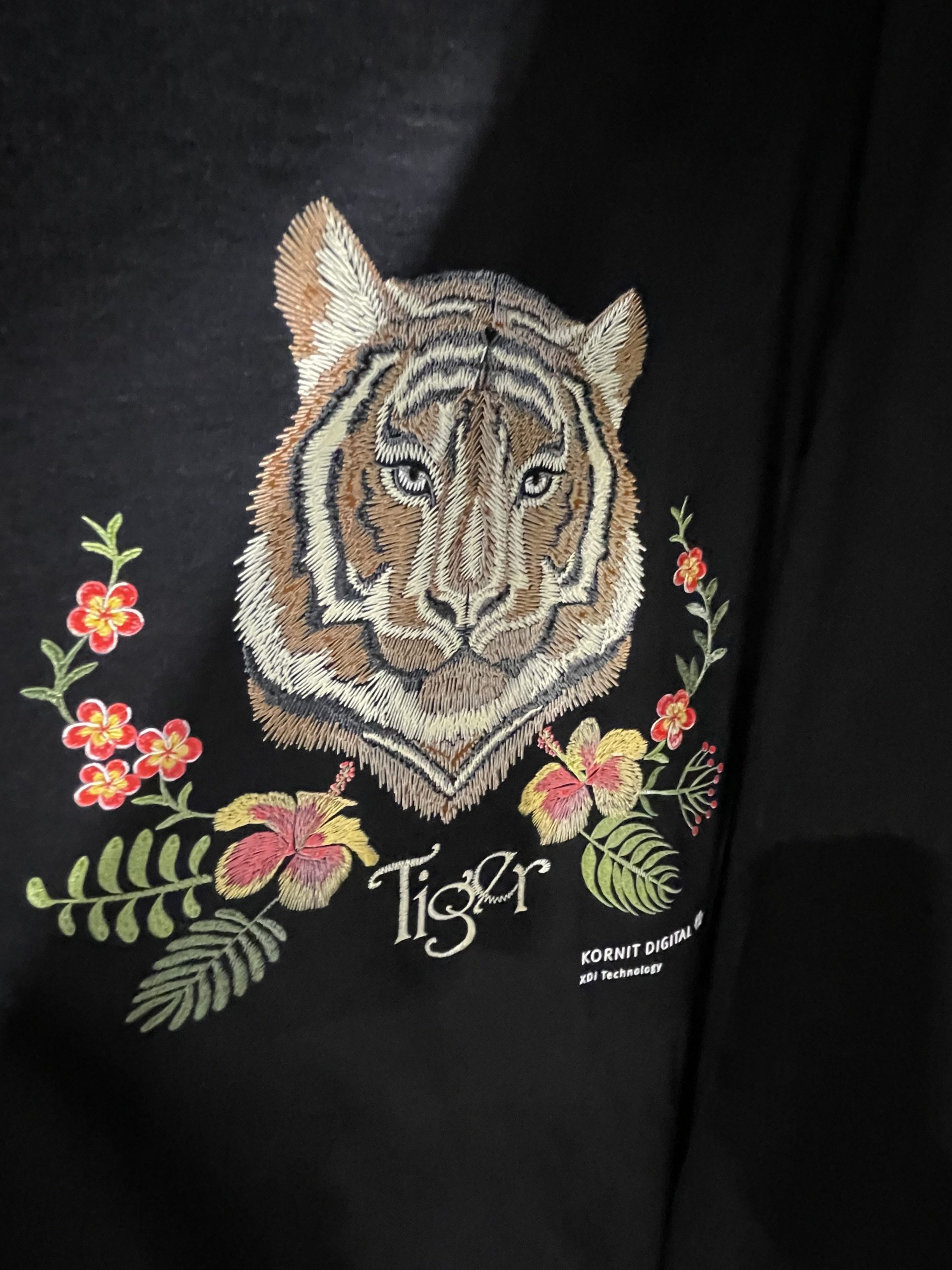 Another visitor asked how many layers one of these XDi effects had, and the operator said the system was able to print the six layers in just 40 seconds. There were plenty of shirts available, so everyone had the chance to touch the material, and I was amazed at how much these additive effects looked and felt like embroidery. With XDi, you can achieve complex shapes, all kinds of colors and gradients, and even multiple effects in one print, all while reducing waste, water usage, and energy consumption. NeoPigment InksOur lab tours at an end, we adjourned for a lunch break before the afternoon sessions, which began with Kobi Mann, Kornit’s CTO. Mann focused on Kornit’s NeoPigment process. He explained that the company’s pigmented ink is a solid particle which is ground up, put into a water-based medium, and then the “floating solid particles” are dispersed. The dispersion process is where the company gets its “unique value proposition,” as it optimizes ink efficiency for color. The company formulates, tests, and produces the NeoPigment inks itself to ensure the highest possible quality, and claims they’re the “safest way to print.” According to Kornit, the water-based inks are 100% toxin-free and non-hazardous, don’t contain any animal by-products, and meet important safety applications. Mann told us that material chemistries are the ‘fundamentals” of the process, and that Kornit is currently focusing on acrylic, silicone, and polyurethane. He also said Kornit is working on physical adhesion, as well as creating a chemical reaction with the fabric. By improving the chemistries, you can control the solution by making them stronger, which takes you into further applications. Adding Layers to Digital FashionKornit’s patented technology revolves around real-time selective fixation and functional amplifiers. As Mann explained, XDi enables the building of layers on top of layers, and while it’s not quite ready to go to market, “the fundamentals are there to take it from 2D to 3D space.” Polyester screen printing is usually pretty heavy, but Kornit’s technology can create more lightweight layers on shirts. Mann said the shirt he was wearing featured 1.4 mm layers—about the same as puffy paint. The applications include screen printing, heat transfer, and the vinyl look.
The solution can also help in pursuing new applications and leveraging business cases. He explained that there are many different types of stitches, but XDi can make the three most commonly used in embroidery, including counter stitch and step stitch. In addition to functional inks, XDi also enables special effect inks, such as glitter and luminescent.
Mann told the room that Kornit is “polluting in a sense,” but still has a goal for the future to decrease its waste and usage of energy and water, and minimize how many harmful chemicals it uses. Specifically, Kornit is looking to lower its VOC usage by 40%. He said Kornit’s hybrid printing solution will “enable reduced curing time by half,” which will also help reduce energy. Additionally, the electricity saving for the company’s next-generation dryers is about 40%. Moving at the Speed of CultureNext, Bobby Sims, a serial founder of companies who works as a strategic advisor to big brands like Coca Cola and H&M, talked about “Moving at the Speed of Culture.” Sims said while we may think we’re “still in the internet era,” post-COVID we’re actually in a culture and creativity era, as everyone is becoming a creator. He said that clothing is now the highest priority for Gen Z teenagers, as opposed to food. This is obviously good news for companies like Kornit. Major takeaways from this presentation include the move from Web 2.0, which Sims called a “flat system” that connected people and platforms, to the spatial Web 3.0, which connects people to digital spaces and assets, like NFTs. For example, he said the first digital dress sold at the end of 2021 for $9,500, and that 108,000 attendees—including Versace—were at the Metaverse Fashion Week by Decentraland, which focuses on skins for avatars. Sims said creators are driving this change to the “digitization of everything,” but that instead of being creator-powered, where influencers help sell products, it’s more creator-led, “where the industry provides access to the supply chain.” Transforming the Supply ChainNext up was Aaron Yanelli, President of KornitX, which gives stakeholders the tools they need to generate more revenue and digitally transform the supply chain. Yanelli said that on-demand manufacturing will “change the world for the better,” and that Kornit is addressing the demand for this by reducing over-production, opening new revenue streams, enabling smart routing to its Global Fulfillment Network (GFN), and leveraging social media with direct purchase links for a better customer experience.
He brought up a couple of case studies, the first of which was with retailer Next. Yanelli explained that Next wanted to move faster, while also creating a better customer experience and saving money, and that Kornit is the retailer’s virtual warehouse. Through its integration, Kornit introduced personalization to Next, so customers can go in and customize what they want. The second case study was with the Hut Group (THG), a British e-commerce retailer that operates over 100 international websites, bringing brands directly to the consumer through its platform. Yanelli said THG found Kornit because it was looking for an end-to-end workflow solution, and “thought ours was better than anything else.” He explained that KornitX is a full-fledged software platform with “hundreds of different solutions and mechanisms.” He called KornitX “an enabler” of true on-demand. As more businesses look for multi-channel options, the flexible platform can “back into anything where an e-commerce transaction can take place and pull this together.” Yanelli said to think of KornitX as a buffet, where you can eat everything, or pick and choose.
The customizable, agnostic platform enables on-demand manufacturing from start to finish, including product development, network services, and shipping and logistics. Users simply pick the product, add the artwork, publish to an eShop, route to a relevant fulfiller, fulfill on a digitized shop floor and ship to the warehouse, store, or consumer, and finally confirm the details and receive the payment. It also offers “simple highlights,” like 3D product display, direct purchase links, smart routing, and more.
Yanelli said by combining software integration with new technology, Kornit is changing brand integrity.
He said the company’s Global Fulfillment Network (GFN) enables distributing and printing, and while not a revolutionary idea, “it's revolutionary how we enable it,” using proximity production, smart routing, integration, and more.
Yanelli explained what’s coming next for KornitX, which is a wider geographical spread to increase the capacity of its GFN. Trends in Fashion’s FutureThe day’s final presentation was by Lior Fisher Shiloni, who owns The Visionary trend forecasting company. She explained that trends “start quietly in the margins” before slowly entering the mainstream, while fads come in fast, get very popular very quickly, and disappear just as quickly. The company does a lot of multidisciplinary research, and in the textiles world, found that a major idea in 2021 was “tension between crisis and breakthrough.” This year began very chaotically, and has remained turbulent, so the company defined “extremum” as a mega trend for the next few years. The first existing key trend Shiloni identified is in meta-textiles, and digital, neon colors, have been all over the runways; we definitely saw this at the Yanky & Nataf fashion show the day before. Meta-prints is a computerized idea, but it can be seen on textiles, along with the glitchcore microtrend. She explained that virtual textiles are “portals between the physical and virtual worlds.” For instance, the textile might react to human touch, but once you’ve wearing VR goggles and your avatar interacts with it, the reaction occurs in both the physical and virtual worlds. The next trends were hypernaturalism and the evolution of sustainability; examples were companies and brands looking for innovative solutions like creating textiles from plant roots, fruit leather, mushrooms, and more. The last major trend she mentioned was space, as we’re seeing “a cultural shift in society of people interested in living outside of Earth.” Fashion design is responding with elements like metallic textiles, tech wear focused on protection and functionality, and colors and patterns influenced by envisioning life in outer space. This session closed out the afternoon for us, and we were taken back to the hotels, before enjoying dinner together in groups at various restaurants around Herzliya. Making Inks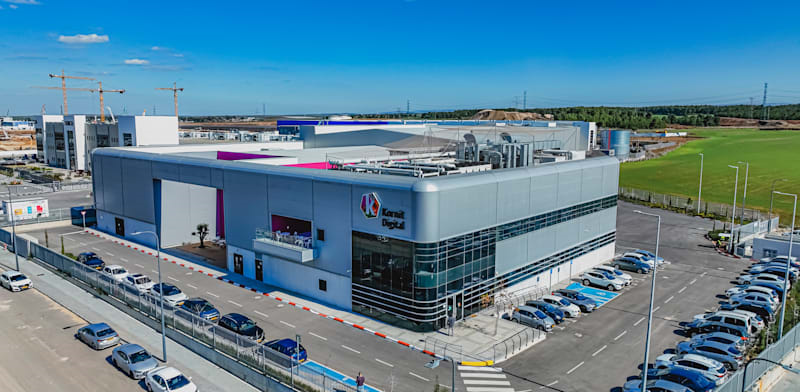 Courtesy of Globes, Israel business news Courtesy of Globes, Israel business newsThe last day began with a trip to Kiryat Gat to see Kornit’s new scalable, state-of-the-art ink manufacturing facility. The groundbreaking of the modern, high-volume production facility took place three years ago, and process qualification was completed in 2021. The factory is in the ramp-up process now, with a “huge potential” for delivering Kornit consumables to customers. The facility includes offices, logistics, ink production, a lab, and a clean room, in addition to the large warehouse. We were told that Kornit has four main warehouses—one each in Chicago, Germany, and Hong Kong, and the main hub in Kiryat Gat. The vertical warehouse is automated, with 60 drawers, and between two or three drawers, there are a couple hundred pallet positions. Each container has up to 40 pallets of ink. In addition, there’s also a temperature-controlled warehouse that stays at 30°C.  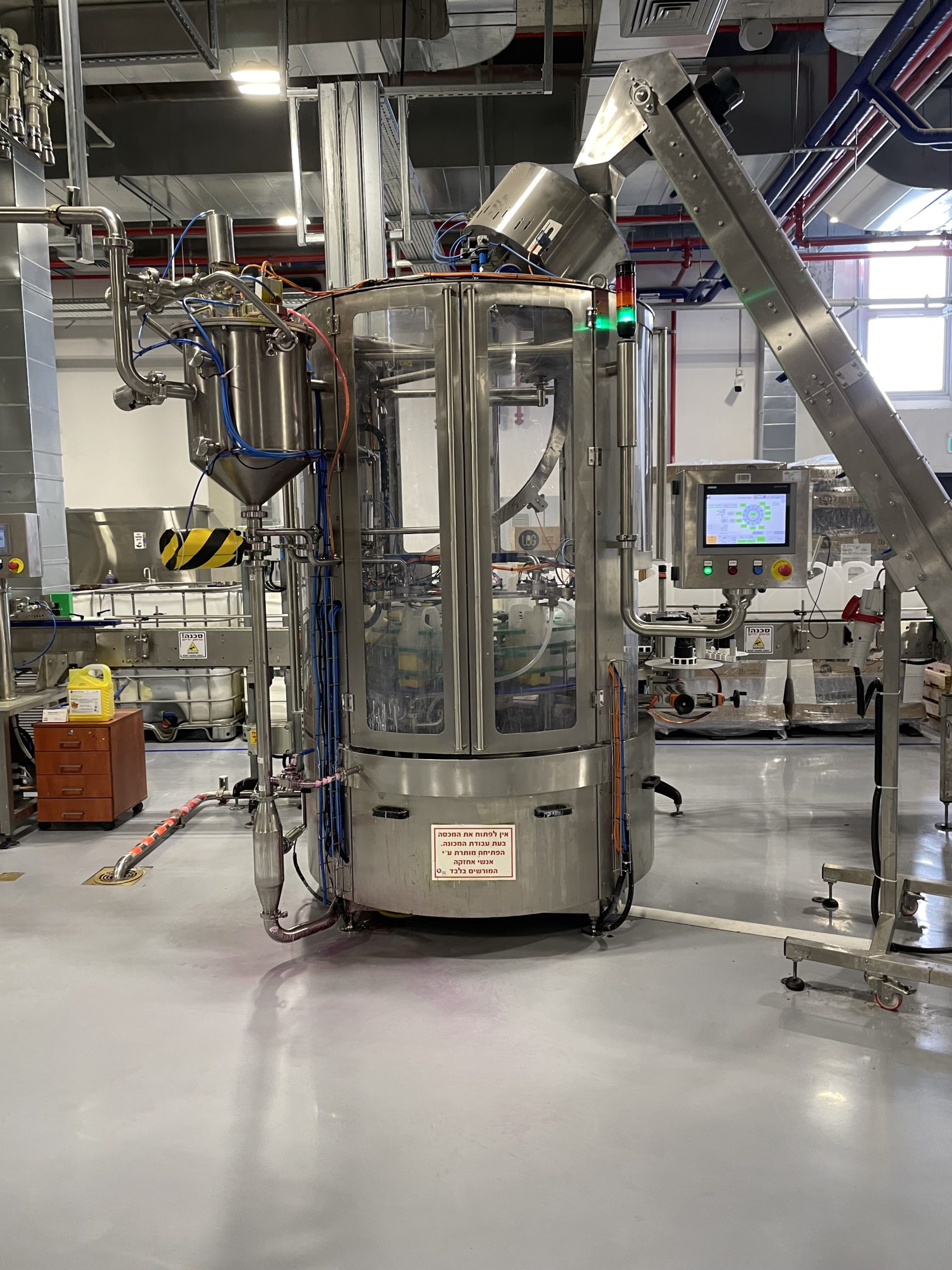 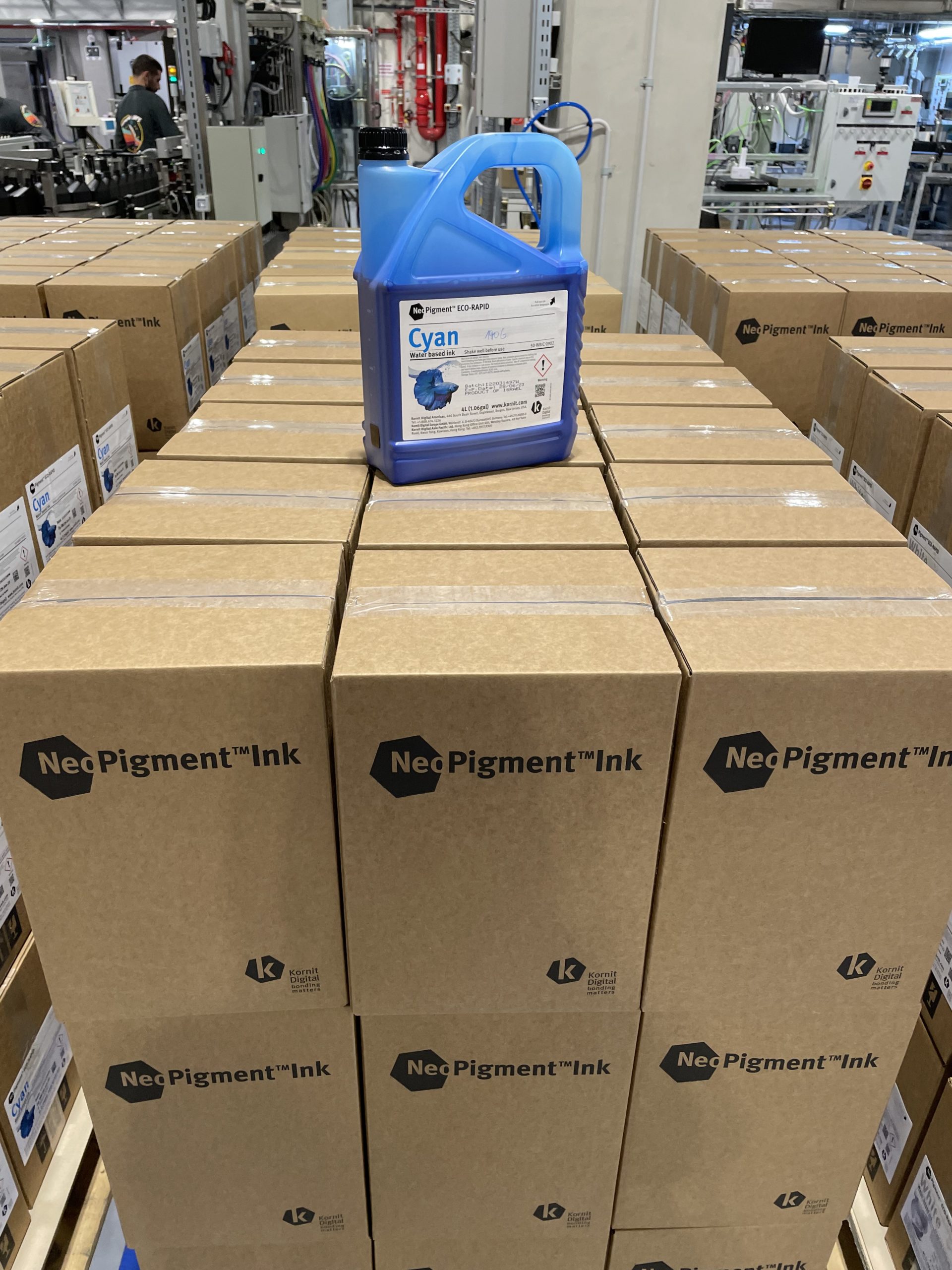 The new production plant for Kornit’s NeoPigment ink has three times the capacity than the previous facility, and in addition to an area for producing colored inks, there’s also a place for making white ink. The HMI system can transfer ink from section to section with just the touch of a button, and thanks to a monitoring system, multiple batches can be produced with the same color. This is a big deal, as the colored inks and white inks have a completely different chemistry and process. As for the container filling process, operators first check for leaks, and then the container is weighed and plugged; after another few necessary steps, it’s packaged up. In the quality control lab, every raw and intermediate material, and all finished products, are tested according to specification, as it’s all batch production. Kornit’s facility received the EccoTec certification earlier this year, and is hoping that it will receive the BlueSign certification for safety in the near future. Additionally, over 40,000 print heads are assembled at the facility each year. On the Road AgainOnce we left the ink manufacturing facility, we hit the road for lunch and sightseeing in Jerusalem, which was amazing. Then all that was left was the gala event that night, with more good food, drink, conversation, and another opportunity to see the amazingly colorful Yanky & Nataf runway show again. Right before I left the event for the night, the K-Band came on to perform, and the crowd was delighted to learn that it was a group made up of Kornit employees. I witnessed many Kornit team members get up to dance and support their colleagues, which made me smile; after all, this was a celebration of the company and all its hard work. All in all, it was a fantastic trip, and I feel like I learned a lot. Screen printing is not my forte, but I overheard a lot of other visitors on my VIP tour excitedly discussing what Kornit’s technology can do for that industry, so that’s pretty exciting. As for 3D printed fashion, a lot of it can be unwearable and pretty far out there, which is why I often say that fashion accessories like handbags, bow ties, and others are a more realistic application for the technology in the fashion world. But I was blown away by Kornit’s MAX digital printing technology and the XDi effects it enables. This solution seems like it might actually have staying power. Additionally, I was happy to hear of Kornit’s ongoing sustainability efforts, especially in the face of an industry as wasteful as fashion. Right now, it seems like the only true competition Kornit has is Stratasys. But, the company’s next Fashion Week is coming to London May 15-17, and I have it on good authority that Kornit will have more news to share, so it will be exciting to learn what else is going on there. Enjoy some more pictures from my trip to Kornit in Israel below: 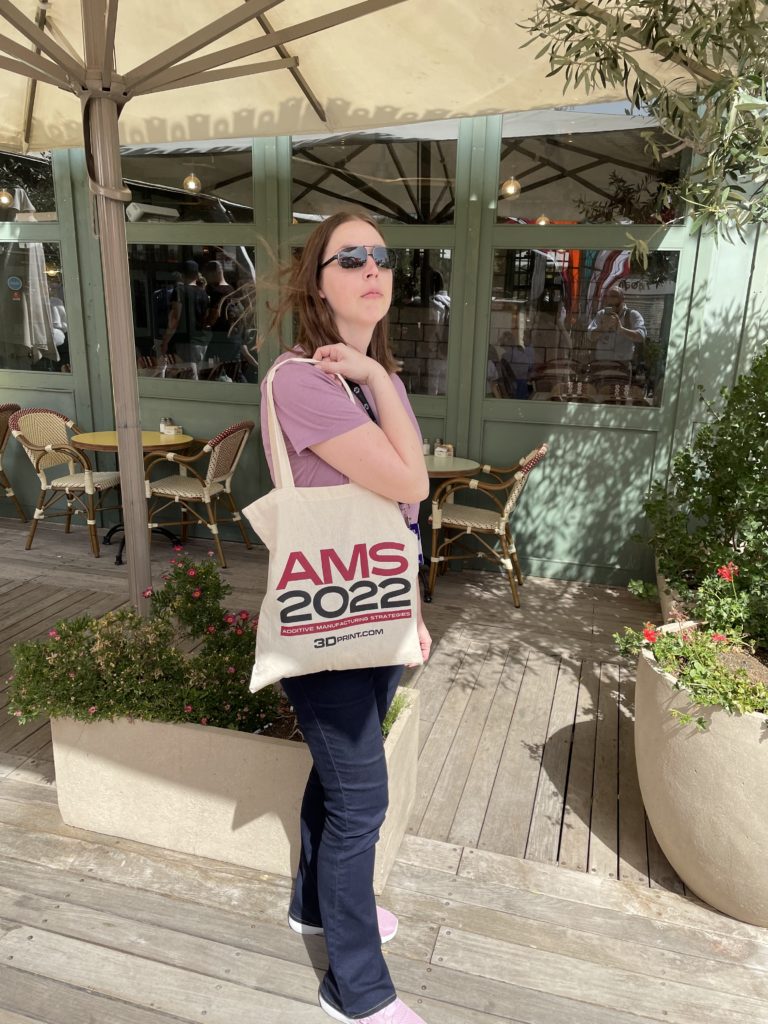 Repping 3DPrint.com in Jerusalem Repping 3DPrint.com in Jerusalem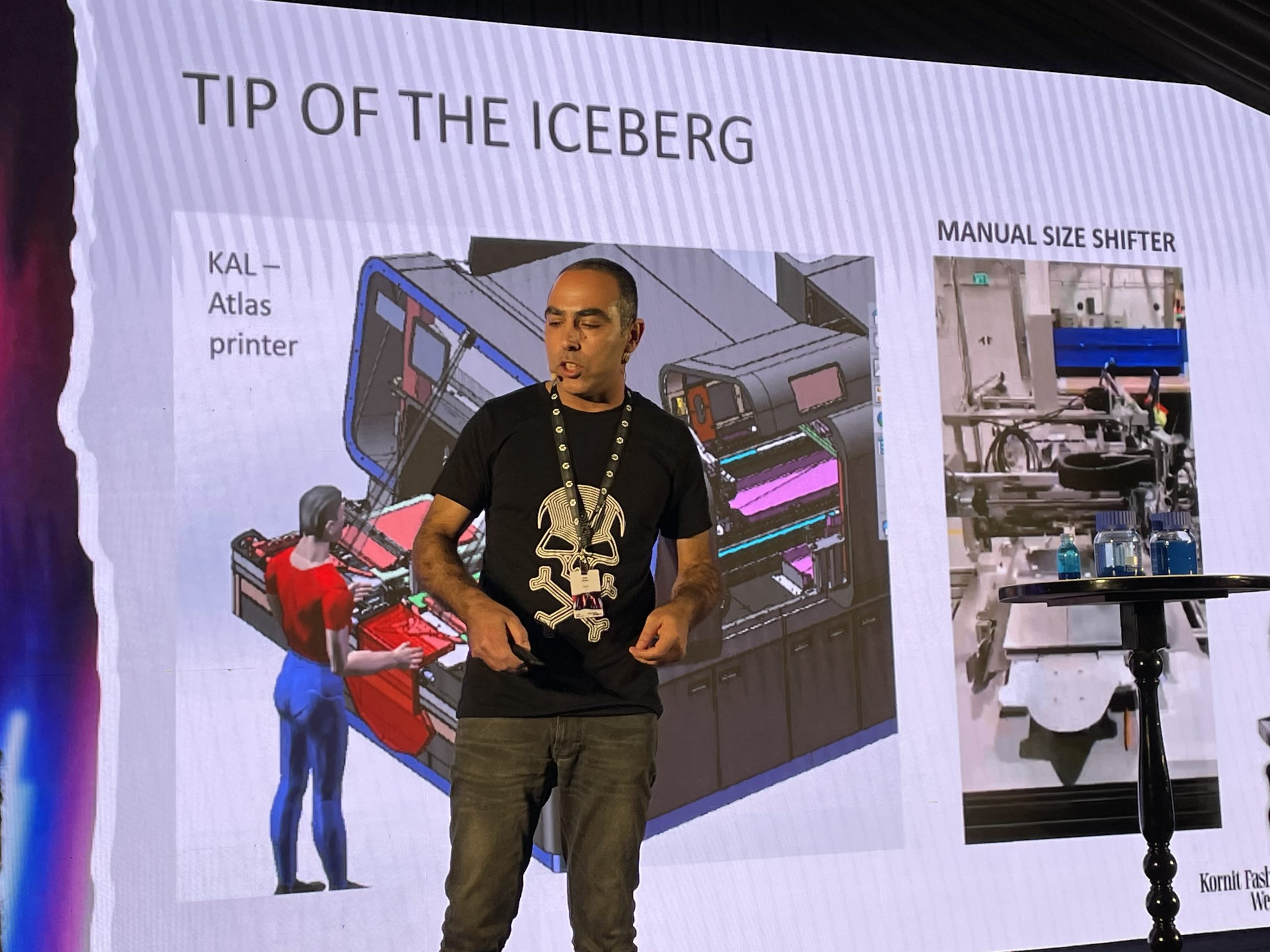 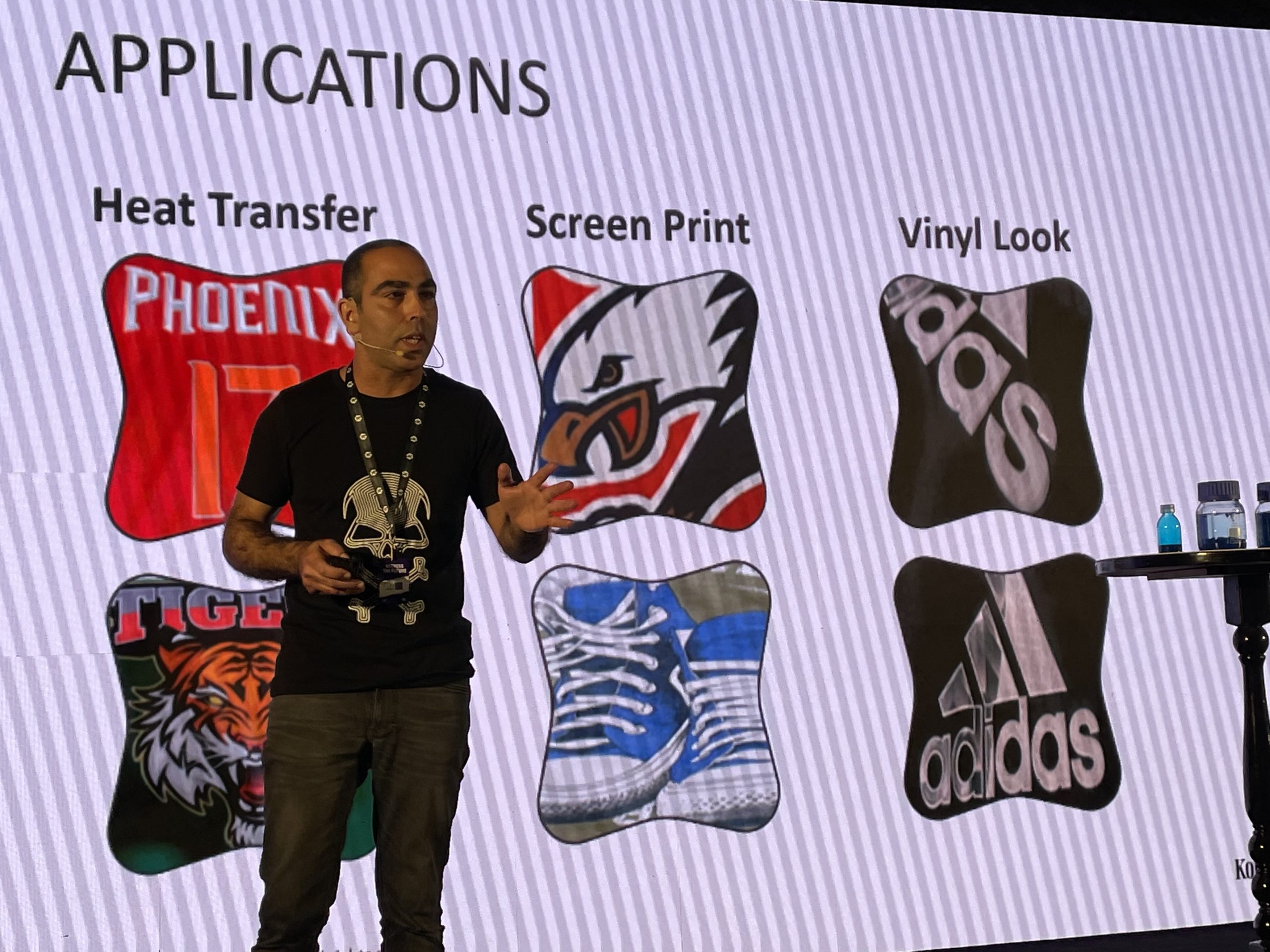
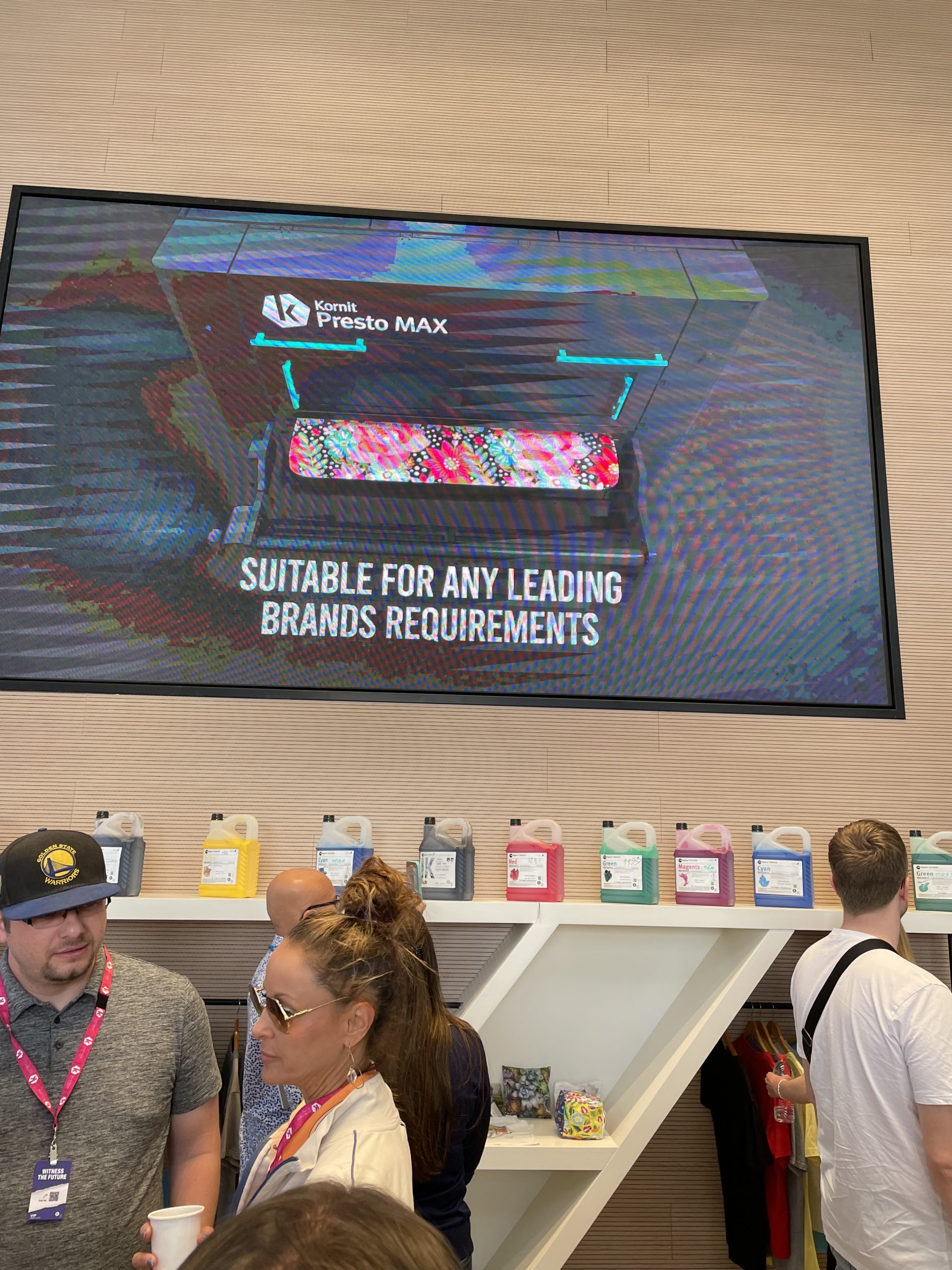 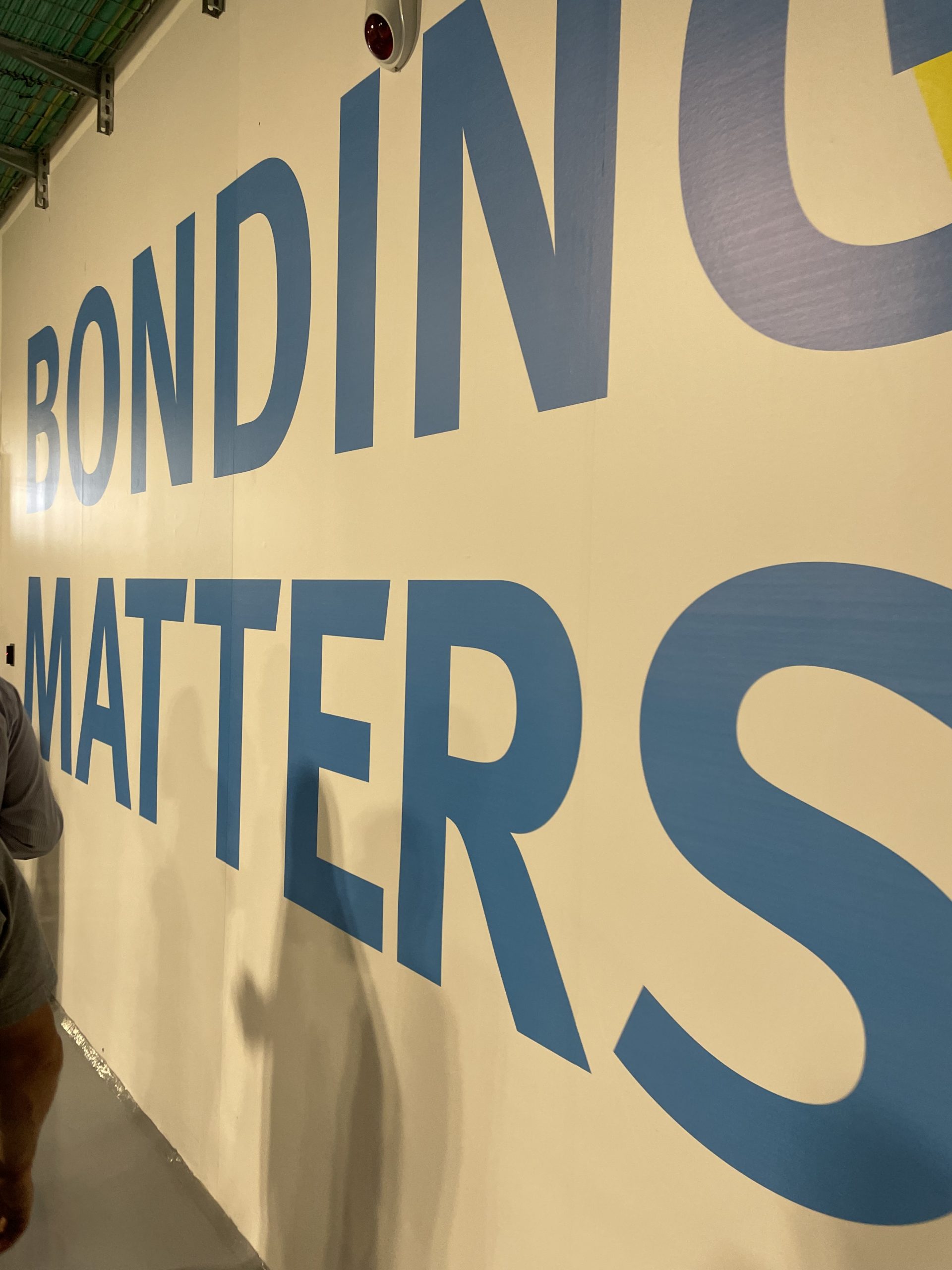 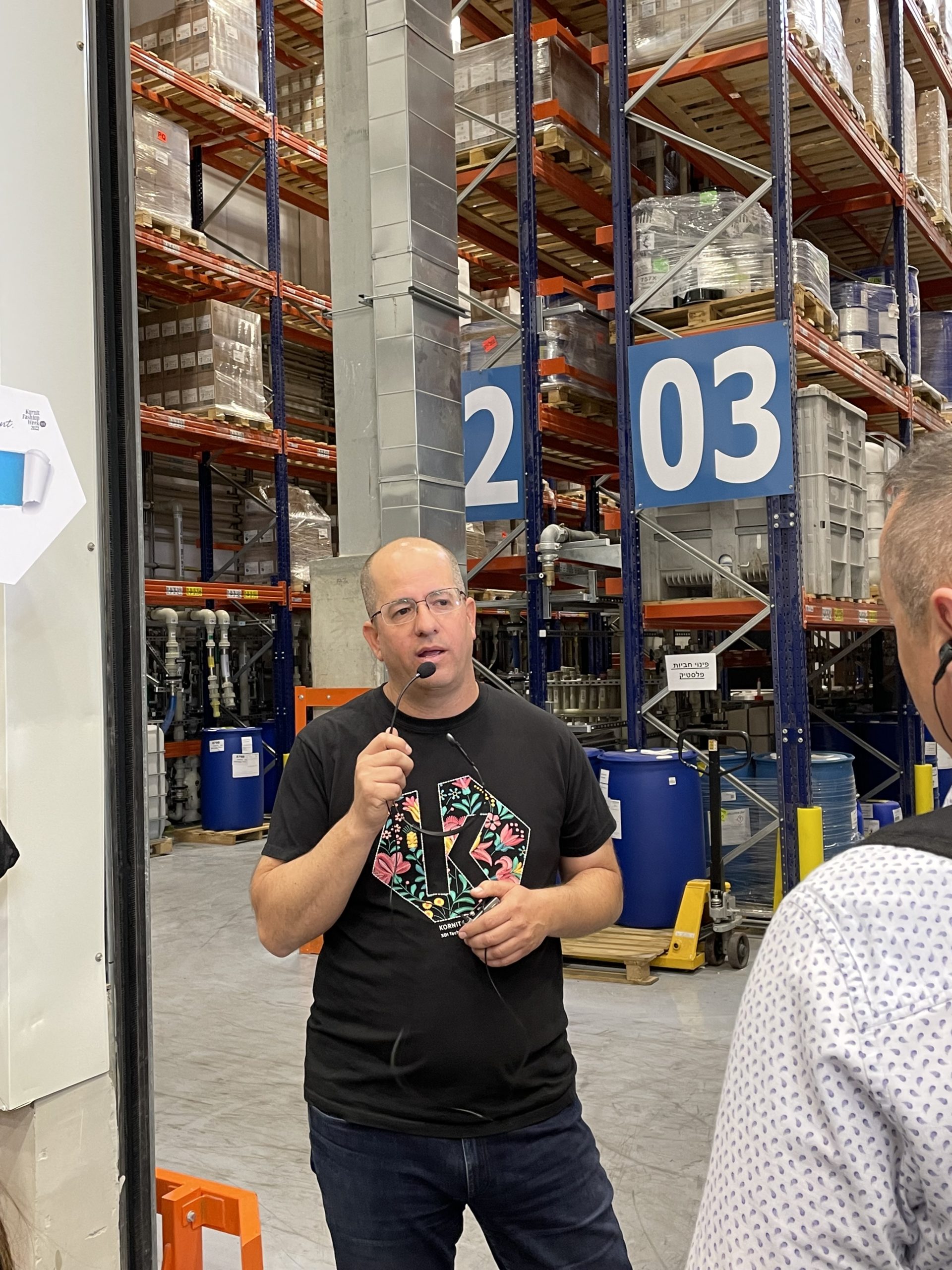 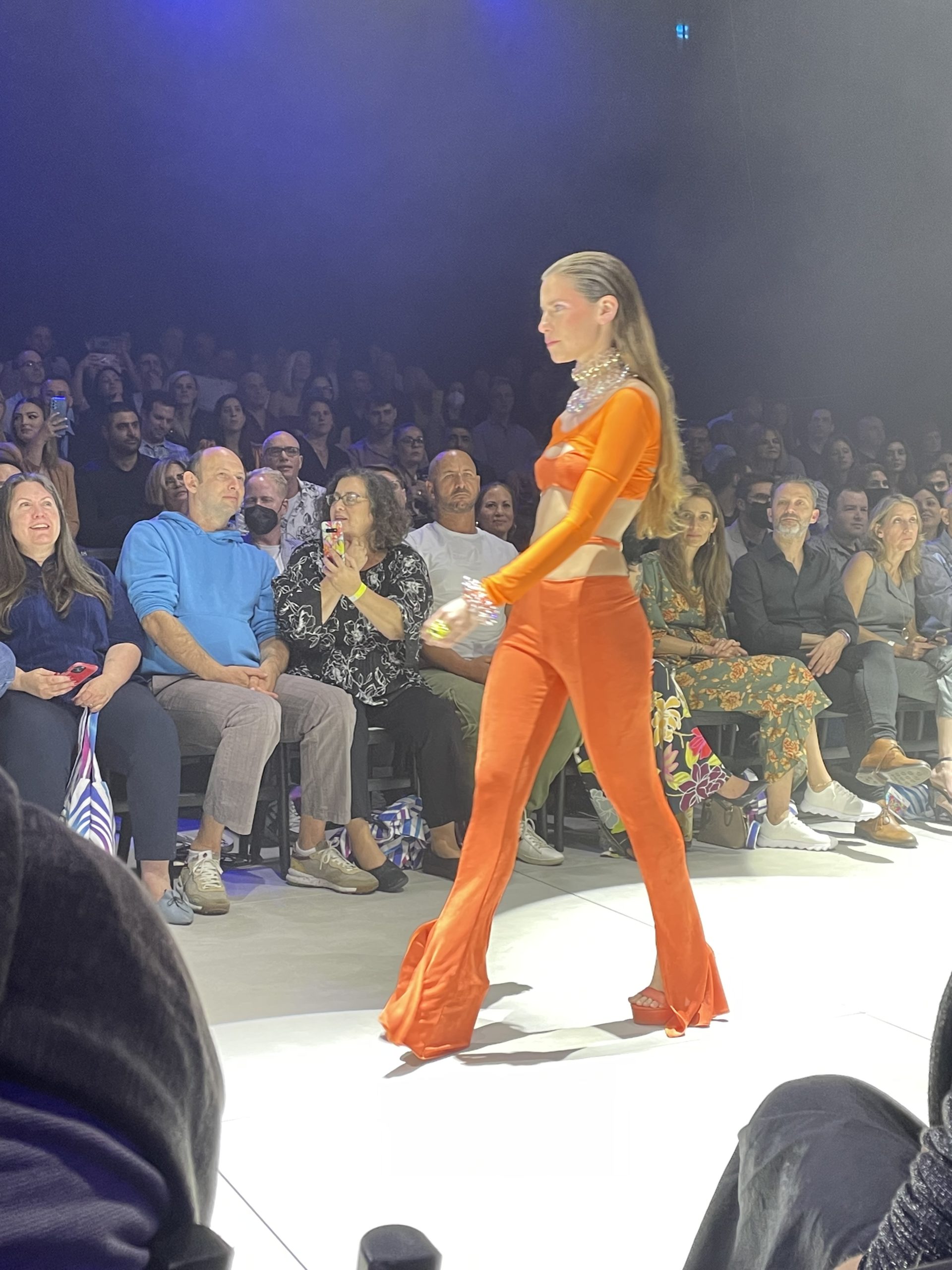 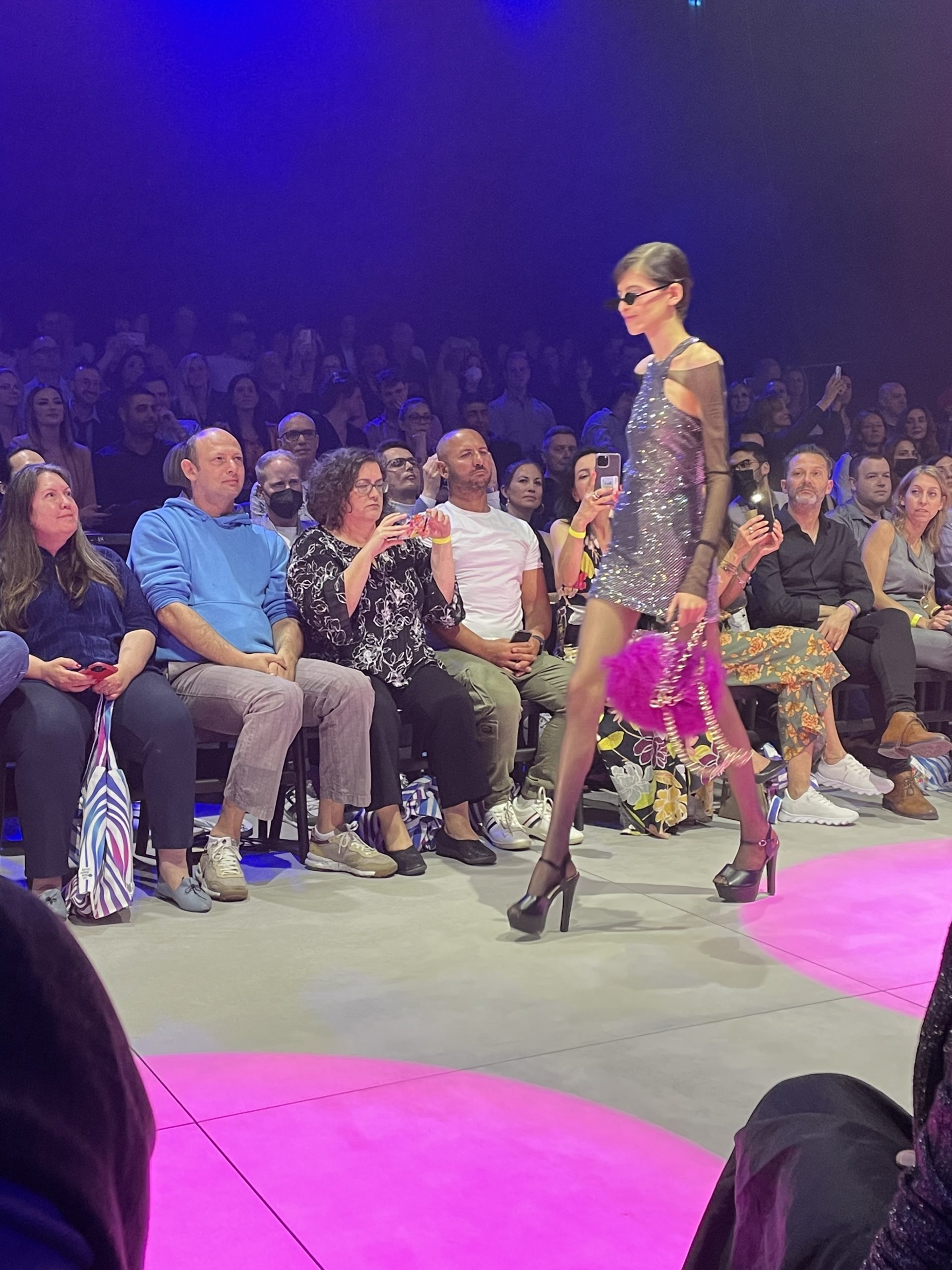 
The post The Digital Textile Tech Behind Kornit’s Sustainable Fashion appeared first on 3DPrint.com | The Voice of 3D Printing / Additive Manufacturing. |
| Ceramic 3D Printing Capabilities Expand with New Admatec Debinding and Sintering Equipment Posted: 05 May 2022 06:00 AM PDT Admatec has steadily been increasing its 3D printing capabilities, taking its slurry-based digital light processing (DLP) process further. First it expanded from resins loaded with ceramic particles to those loaded with metal particles. It then increased the build volume of its Admaflex300 3D printer. Now, the company has introduced a new integrated debinding and sintering furnace with a larger work volume. The majority of ceramic 3D printing processes rely on the use of a photopolymer slurry loaded with ceramic particles. Once printed, these green parts first go through a debinding process, in which the photopolymer material is removed, followed by sintering, causing the part to become fully dense. 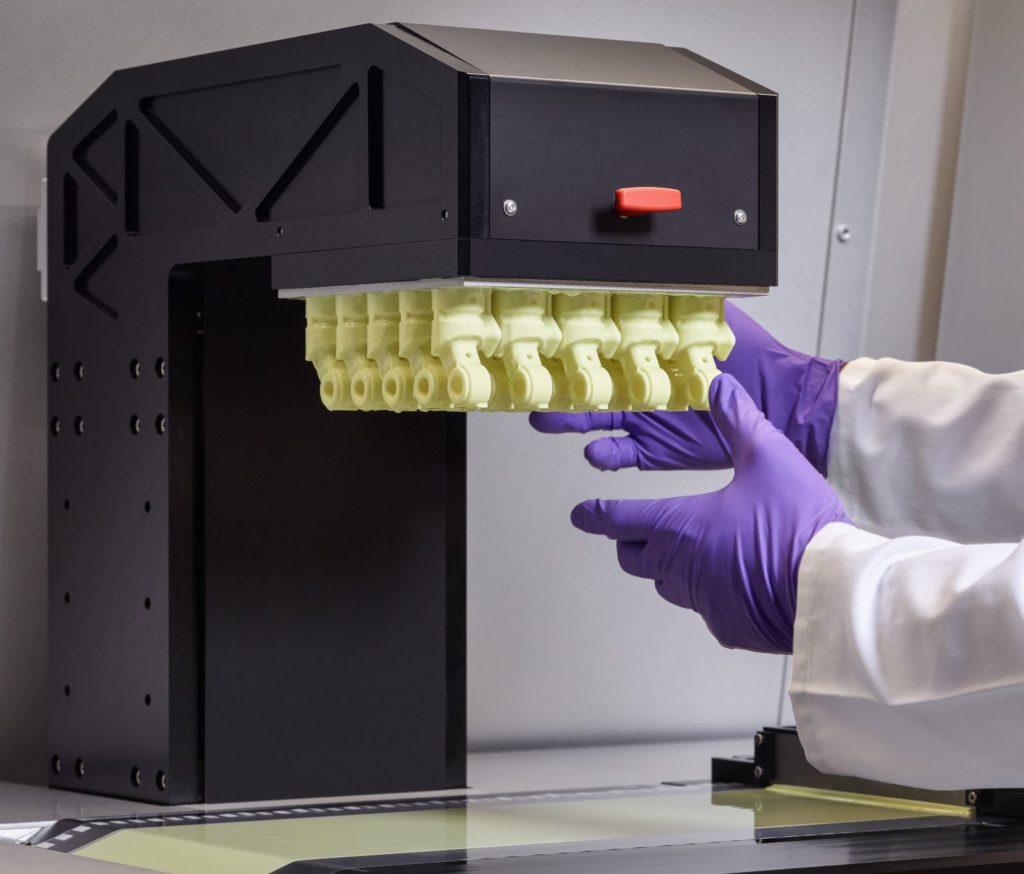 The Admaflex 300 with a full bed of 3D printed ceramic parts. Image courtesy of Admatec. Admatec's process is unique in that, rather than project light below a vat of photopolymer resin, a tape conveyor carries the material over the projector and below a suspended printhead. This makes it possible to 3D print at a rate of up to 300 layers per hour. The firm's latest Admaflex 300 expanded the build volume for this novel technique to 260x220x500 mm. To match the size of the new 3D printer, Admatec has now released a new integrated debinding and sintering furance with an inner volume of 400 x 400 x 400 mmm or 64 liters, and a maximum temperature of 1700°C. 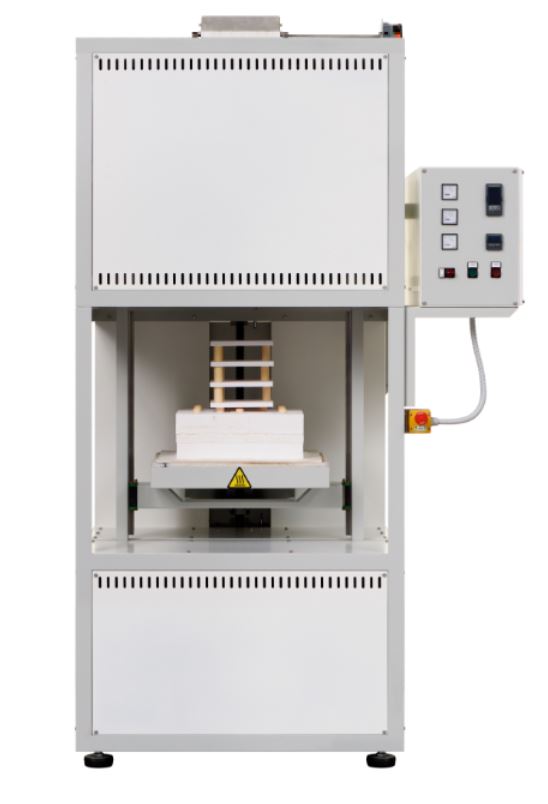 The new 450-CH-400 integrated debinding and furnace system from Admatec. Image courtesy of Admatec. Technical ceramics are still a very niche segment within the additive manufacturing (AM) industry, with only a handful of companies participating, including Lithoz, XJet, 3DCeram, and Prodways. However, these materials have huge potential for their high operating temperature, as well as hardness and corrosion resistance. They can be deployed for such applications as aviation, medical devices, electronics, and more. And, unlike pressing and injection molding, 3D printing is able to produce parts with complex geometries on demand. 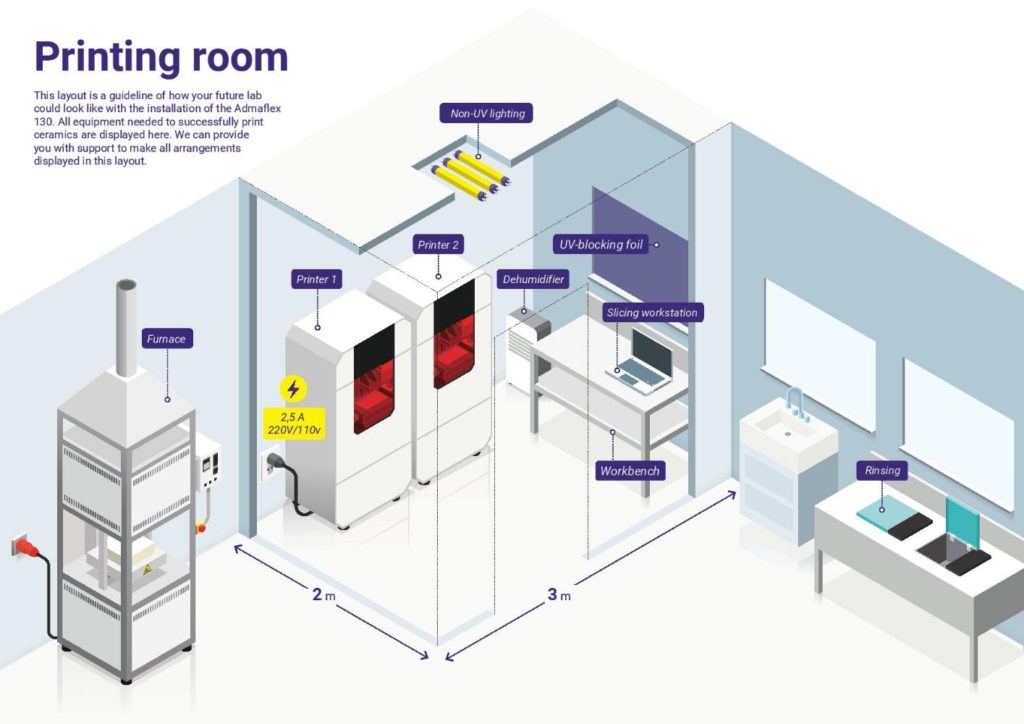 A ceramic 3D printing setup. Image courtesy of Admatec. For all of the above reasons, SmarTech Analysis anticipates that the ceramic 3D printing market will hit $4.8 billion in revenues by 2030, according to its "Ceramics Additive Manufacturing Production Markets: 2019-2030" report. I don’t believe that SmarTech typically includes ancillary tools, like those associated with post-processing, in its numbers. However, it’s worth noting that there have been attempts to improve sintering and debinding in various ways. At one point, Desktop Metal advertised a furnace that relied on microwave heating for more even and controllable sintering. So, auxiliary equipment could become a not insubstantial source of revenues for some companies, even those not currently focused on additive. The post Ceramic 3D Printing Capabilities Expand with New Admatec Debinding and Sintering Equipment appeared first on 3DPrint.com | The Voice of 3D Printing / Additive Manufacturing. |
| Electroninks to Make Particle-Free Metal Inks Available for Electronics Production Posted: 05 May 2022 05:30 AM PDT Austin-based 3D-printing materials company Electroninks has announced that it will be making its proprietary line of metal organic decomposition (MOD) inks available to customers at production scale. The company, which received funding in February from intelligence community venture capital firm In-Q-Tel, specializes in producing inks for printed electronics and semiconductors. 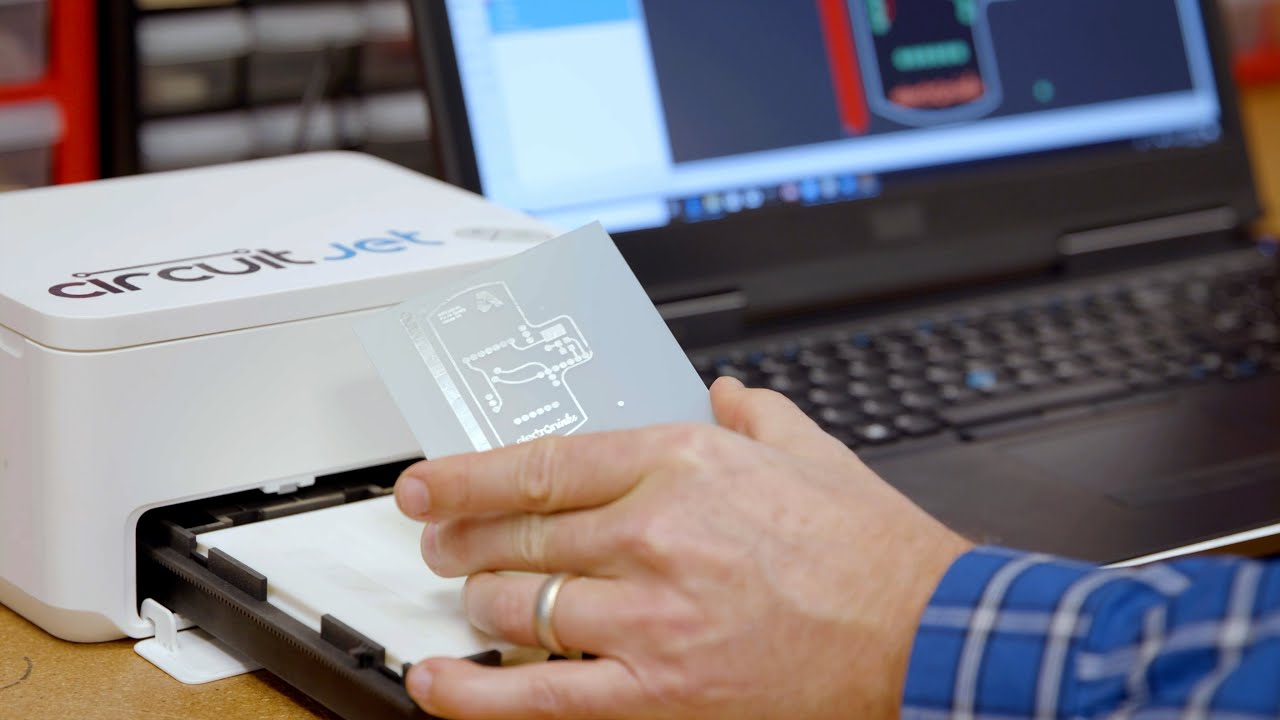 The CircuitJet PCB prototyping printer from Electroninks. Image courtesy of YouTube.
The company also places a strong emphasis on tailoring its silver, gold, and platinum-based inks to customers' specifications. Aside from working directly with key purchasers of Electroninks' products — such as the U.S. Air Force, which last October awarded the company a $1.5 million contract, in large part to develop these same inks — the focus on customization is more generally built into the business model. For one thing, the company has worked to develop its inks so that they can be effectively used with a variety of printing techniques, especially inkjet, aerosol, and screen printing.  Additionally, the inks are categorized into three product lines, optimized for three main types of printed electronics end-products. The CircuitShield is designed for electromagnetic interference (EMI) shielding and back-end semiconductor metallization, and would thus be ideal for printed circuit board (PCB) applications. The CircuitWrap is best for touch screens and LED displays, while the CircuitSeed seems like it can be used for a variety of end-products, but is meant to be used in combination with more conventional electronic plating methods. In turn, the CircuitSeed inks, as the company puts it, can reduce "a 20-plus step process to a few steps", while also using much less energy and water. It's notable that In-Q-Tel also recently made an investment into Fortify, a specialist in composite printing materials, including dialectic resins. Given the old comparison of 3D printing feedstocks to the razor-and-blades model, such an influential entity's cornering of the market in materials could be a signal of a new period of growth for the 3D printing industry. Moreover, common sense indicates that Electroninks wouldn't be making its inks available for production scale unless the company expected there to be a market for production-scale quantities of electronics 3D printing materials. This, along with numerous other recent stories, suggests that the 3D printing of phones and tablets could come sooner than expected. Finally, the possibilities for using Electroninks' technology for repair seem even greater than for production. The potential for 3D-printed chip repair could not only bolster supply chains in the future, but, perhaps even more importantly, would be enormously beneficial to improving the sustainability of the electronics industry. To learn more about the company, check out our recent 3DPOD episode with Eletroninks CEO Brett Walker: 3DPOD Episode 101: 3D Printing Conductive Inks with Brett Walker, CEO of Electoninks Images courtesy of Electroninks. The post Electroninks to Make Particle-Free Metal Inks Available for Electronics Production appeared first on 3DPrint.com | The Voice of 3D Printing / Additive Manufacturing. |
| Copper 3D Printing with Blue Lasers Under Development by Essentium and NUBURU Posted: 05 May 2022 05:00 AM PDT Coming off of a rough patch after the collapse of its merger with special purpose acquisition company (SPAC) Atlantic Coastal Acquisition Corp., Essentium Inc is continuing to pursue innovative 3D printing techniques. The latest involves a partnership with NUBURU, a developer of high-powered blue lasers. Together, the companies will work to create a metal additive manufacturing (AM) process based on NUBURU's blue laser technology. The partnership is described as a "multi-year, multi-million-dollar agreement," in which Essentium could incorporate NUBURU’s blue laser technology into its own High Speed Extrusion (HSE) platform. The first phase of the project would see this applied to 3D printing for product development, followed by a second manufacturing-oriented phase. Essentium will also be licensing NUBURU's 3D printing application patents based on its foundational patent, "Methods and systems for welding copper using blue laser" US10,940,562B2 and JP2019562226A. 3D printing with copper is currently somewhat difficult, particularly with powder bed fusion (PBF). Its high reflectivity reduces the amount of energy absorbed by the material, thus requiring higher power output from the laser, potentially impacting overall part quality. Alternatives include the use of metal binder jetting or bound metal extrusion, which may not result in the same part density as PBF. PBF users have found ways around the reflectivity issue that may involve lower print speeds or supplanting conventional energy sources with green or blue lasers. Therefore, NUBURU's technology could be ideal for 3D printing with copper, as well as other highly reflective metals like stainless steel and aluminum. According to Essentium, NUBURU's blue laser could increase build speeds by ten times while achieving high metal density.
One wonders how this would be integrated into Essentium's HSE platform, which relies on thermoplastic extrusion. Because NUBURU's process is described as a welding technology, we can imagine that HSE could perform a form of directed energy deposition (DED) with metal wire feedstock. After all, DED manufacturer Formalloy already uses NUBURU’s blue laser technology for its systems. Or Essentium could perform bound metal extrusion that might be sintered during the printing process, rather than in a furnace once the print is complete. Because Essentium's acquisition of Collider fell through, due to what seemed to be a lack of anticipated capital from the SPAC IPO, it's difficult to see how the company could have the funds for a multi-million-dollar licensing deal. Essentium did hint at the development of a metal 3D printing technology when it made its initial SPAC announcement. So, this NUBURU deal could have already been in the works and may not have been as significant of a financial investment as the Collider acquisition. My own concern for the company as it approached its IPO was that it was still too young and unestablished to make the public leap. Its HSE platform is promising, but I worried that Essentium was attempting to grow too quickly. I continue to have that concern, not just for this firm, but for a number of businesses in the industry, like BICO. However, I'm just the writer here and not a manufacturing executive, so I'll leave it to the professionals to decide how to run their businesses. The post Copper 3D Printing with Blue Lasers Under Development by Essentium and NUBURU appeared first on 3DPrint.com | The Voice of 3D Printing / Additive Manufacturing. |
| 3D Printing News Briefs, May 4, 2022: Construction, Research, & More Posted: 04 May 2022 07:00 AM PDT We’re going to tell you about a 3D printed pavilion and a 3D printed set of stairs first in today’s 3D Printing News Briefs. Moving on, Triastek has received FDA clearance to begin clinical studies for its Investigational New Drug (IND) application for a 3D printed drug product. A team of researchers from Singapore developed a new method for 3D printing functional, complex components for soft robotics, and 3D printed tortoise shells could help save an endangered species. Finally, a YouTube inventor used 3D printing to create a LEGO-sorting vacuum prototype. 3D Printed Concrete Shell PavilionIn 2018, the Huizenprinters consortium of construction firm Heilijgers BV, concrete supplier Van der Kamp BV, innovation specialists Blueways, the De WAR innovation community, and concrete 3D printing spinoff Vertico BV, was working to 3D print a concrete structure with a robotic AM system. With financial support from the Province of Utrecht and additional assistance from Aectual CTO Jelle Feringa and Summum Engineering founder Diederik Veenendaal, the consortium got to work. Now, its 3D printed concrete shell structure pavilion, which didn’t need custom framework or rebar, has been completed. The team published its findings and shared what they learned at several knowledge-sharing events, and things started to come together. They created many iterations of software and hardware, and developed a process that could speed up the hardening of concrete by adding an accelerant at the printhead. Using a non-planar printing strategy, the whole structure was segmented in eight long, thin parts, which, while solving the issue of printing the roof, created several new issues, such as risk of shrinkage cracking and the potential for buckling. But the team fixed every problem one by one. Parametric design was used to create multiple iterations of the pavilion in quick succession, and this technique also connected to the object’s slicing into robot code. The pavilion has improved sustainability, as its temporary support structure was removed and can be reused for another project, and because it’s made of only one material, the structure is easier to recycle. 3D Printed Stairs in the NetherlandsSteff Vleugels, Operations Manager, 3D Concrete Printing, at Saint-Gobain Weber Beamix, recently posted on LinkedIn about an interesting concrete 3D printing project. In the northern part of the Netherlands, sustainable construction company BAM Infra Nederland installed a 20 meter long set of 3D printed concrete stairs into the side of what appears to be a very tall hill. Engineering and consultancy firm Witteveen+Bos completed the engineering for the stairs, and Vleugels said the project—from creating the 3D model and 3D printing the stairs all the way to placing the final product—only took five weeks. The actual 3D printing of the concrete steps only took about ten hours. Vleugels also clarified that no reinforcement was used in the stairs, meaning they are pure 3D printed concrete. One 3 meter long, 1 meter wide 3D printed step weighs about 650-700 kg. Additionally, this set of 3D printed concrete steps is the first project that used the company’s Slopestairs configurator tool:
Triastek Granted FDA IND Clearance for 3D Printed DrugMoving on, Triastek, Inc., a novel 3D printing pharmaceutical technology platform company, announced that the FDA has granted it permission to start clinical studies of its Investigational New Drug (IND) 505(b)(2) application for a 3D printed drug product. The product, T20, is given daily to treat cardiovascular and clotting disorders, and is anticipated to improve adherence while maintaining efficacy and adverse effect profile. The company is using its proprietary digital formulation development process, unique programmed drug release technology, and 3D printing formulation by design (3DFbD®) method to create the novel extended release PK formulation. An in vivo gastrointestinal tract (GIT) dissolution-time/location profile is predicted through the use of a physiologically-based biopharmaceutical model (PBBM) of GIT absorption. Then, Triastek uses its Melt Extrusion Deposition (MED®) 3D printing solution to create the tablet’s internal geometry in order to get the desired release profile and drug pharmacokinetics.
Researchers 3D Printing Complex Components for Soft Robotics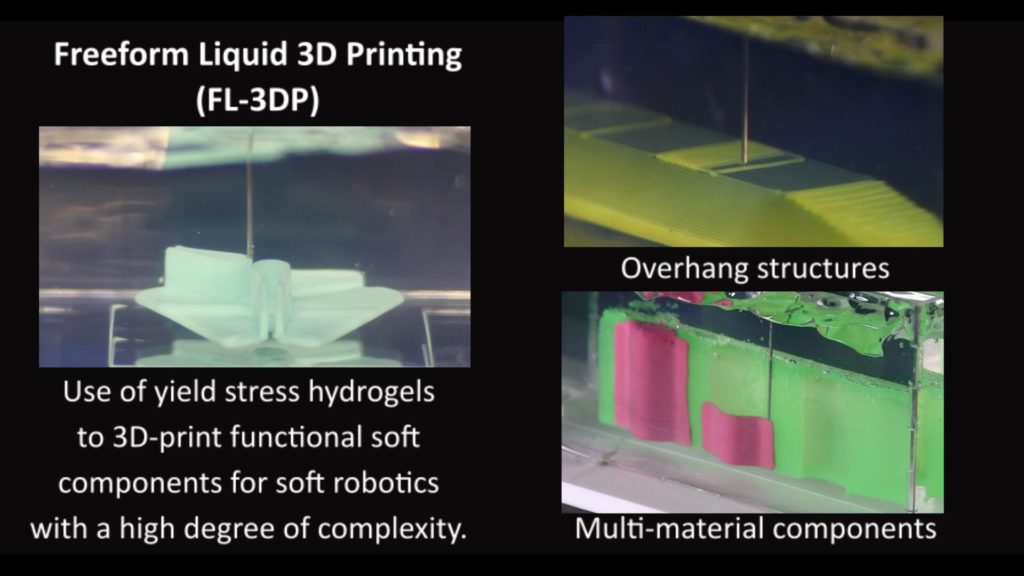 Use of yield stress hydrogels to 3D-print functional soft components for soft robotics with a high degree of complexity. Credit: SUTD A research team from the Singapore University of Technology and Design (SUTD) published a study about their work developing a new method for 3D printing complex, robust, functional components for soft robotics. The team adapted the emerging multimaterial Freeform Liquid 3D Printing (FL-3DP) technology, which uses gel as a temporary suspension media; inks are extruded and held in place in the gel, which is washed off after the inks solidify. The approach makes it possible to print materials that take a long time to solidify once extruded, and also enables advanced geometries, like overhangs with high-aspect ratios, and multiple materials. Early versions of this process could only fabricate simple shapes and mono-material structures, but the researchers studied the interfacial stabilities and rheological properties between inks and support gels and found a way to better predict the filament shape—leading to better fidelity and resolution. To demonstrate the method’s advantages, they designed and 3D printed advanced pneumatic components for soft robotic gripper applications, and by combining functional, stiff, and soft elastomers, they were able to control shape deformation, increase the lifespan, and tune the functionalities of the components.
Saving Threatened Desert Tortoise with 3D Printed Decoy ShellsRavens, a native invasive species, have invaded the deserts of the western U.S. and are majorly threatening the existence of the desert tortoise, one of their favorite snacks. In order to strengthen their shells, young juveniles have to eat, and when they surface to do so, ravens poke their beaks through the still-soft shells. Since the 1980s, desert tortoise populations have decreased by at least 90% thanks to raven attacks, but Hardshell Labs, which uses technology to conserve indigenous wildlife, has been working for a number of years on a concept to save them. The “techno tort” is a 3D printed, counterfeit tortoise shell that not only gathers data on raven strikes, but also fights back with a sprayed non-toxic irritant called methyl anthranilate to discourage the birds from feasting on tortoises. The techno tort’s internal cameras and sensors record when, where, and how ravens are attacking, and the severity of the threat. Autodesk’s Fusion 360 was used to improve the design, and the lifelike shells were 3D printed out of hard plastic resin, featuring electronic accelerators and canister of liquid inside that were installed by Cornerstone Research Group. Hardshell is currently testing how the weaponized prototype tortoise shells hold up under raven attacks, and will next focus on making the 3D printed decoys even more deceptive.
3D Printed Brackets for LEGO-Sorting Vacuum AttachmentFinally, Matty Benedetto of the YouTube channel Unnecessary Inventions also turned to Fusion 360 and 3D printing for an interesting project, though I think parents of young children might actually call it necessary. The LEGO Suck It—inspired by an episode of The Office—is a prototype vacuum attachment that sorts LEGO pieces by size into four sections of an 8″ diameter tube. Benedetto designed and 3D printed five brackets with no top or bottom layers to allow more airflow to pass through, and the one with the largest holes separates the bottom of the first section. The holes in the brackets get progressively smaller as the LEGO pieces go down through the sections, so they’re easily organized. Each section is held together magnetically, and the bottom bracket hooks into the shop vac. On its first go, the LEGO Suck It easily picked up one yellow LEGO brick and sent it to the middle section where it belonged.
He had nothing to worry about, as the LEGO Suck It did exactly what it was supposed to! You can see for yourself in the video below: The post 3D Printing News Briefs, May 4, 2022: Construction, Research, & More appeared first on 3DPrint.com | The Voice of 3D Printing / Additive Manufacturing. |
| EOS North American Expands to LA with New 3D Printing Center Posted: 04 May 2022 06:30 AM PDT EOS North America has announced that the company will be opening an additive manufacturing (AM) innovation center in southern California's Los Angeles/Long Beach area. EOS plans to open the facility early in the fall of 2022. The company will use the facility to fulfill a comprehensive list of functions, serving as a general purpose west coast hub for EOS customers. EOS North America’s parent company, of course, is one of the AM sector’s oldest and most influential firms. Founded in Germany in 1989, the company's North American headquarters were established in Michigan in 2001. EOS North America's subsidiary, Advanced Laser Materials (ALM), has a production facility in Texas. EOS also opened a technical center in Texas in 2016.
In addition to customer support, EOS will provide customer education and training at the Los Angeles facility, as well as "application development, benchmark builds, and production strategy.” The innovation center is one of the results of $15 million in recent investment that EOS is devoting to four of its key growth sectors: aerospace, space, medical, and consumer goods. 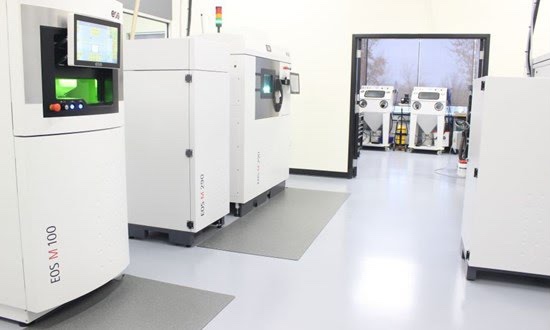 EOS' facility in Novi, Michigan As the company's president noted, the Los Angeles/Long Beach area is an ideal location for EOS to make an expansion. Long Beach itself is home to significant manufacturing operations for aerospace giant Boeing, as well as the headquarters to space industry startup Relativity Space. Both companies are strong adopters of AM techniques. There are also important regional medical facilities in the area, including the Veterans Administration (VA) Long Beach Healthcare System. Outside of Long Beach, only 22 miles away in El Segundo, CA, many of the world's largest defense contractors — with focuses on aerospace and space — maintain weighty presences. Additionally, beyond the corporate world, many universities in the area, including UCLA and USC, have research programs devoted to AM. The port of Long Beach, CA is of course also one of the nation's (and the world's) busiest ports. The expansion to this particular location, by the American branch of what is one of the world's most prominent AM firms, is a strong indicator that AM will be an indispensable part of alleviating some of the area's supply-chain pressure in the long-term. Finally, EOS North America's willingness to make such an expansion is positive evidence that the company is starting to rebound from its pandemic-induced downturn over the last couple of years. As such, the company's customers can likely also be seen as sectors that will have strong performances in the near future. Images courtesy of EOS. The post EOS North American Expands to LA with New 3D Printing Center appeared first on 3DPrint.com | The Voice of 3D Printing / Additive Manufacturing. |
| F1 Champ Fernando Alonso Debuts 3D Printed E-Bike by Arevo Posted: 04 May 2022 06:00 AM PDT Carbon fiber 3D printing firm Arevo continues to drive its presence in the cycling world, this time taking on two-time Formula 1 champion Fernando Alonso. Alonso's lifestyle brand Kimoa has launched its first e-bike during the week of the FORMULA ONE CRYPTO.COM MIAMI GRAND PRIX 2022. And, thanks to Arevo's technology, the bike is 3D printed to create a true unibody vehicle. Like Arevo's previous products, the Kimoa E-Bike is made-to-measure for every rider, 3D printed in a single pass of continuous carbon fiber thermoplastic composite. This means that customers can tailor the frame to match their heights, weights, arm and leg lengths, riding positions and even stiffness levels. In addition to riding styles (racing, street, gravel, or touring), cyclists can additionally choose between wheel material (metal or carbon fiber), and colorways (turquoise, fluorescent yellow, black, or white). Altogether, there are over half a million combinations possible with the Kimoa E-Bike. Because the bikes are 3D printed in a single pass, they don't suffer from the potential weakness found in joints of traditional carbon fiber bikes that are welded or glued together. This results in a stronger vehicle that is impact resistant, yet lightweight. The two-wheeler reaches a full charge in two hours, allowing for 55 miles of power. Footage of Arevo’s system 3D printing a bike frame similar to that of the Kimoa can be seen below. "At the heart of Kimoa's DNA is our drive to create a more sustainable lifestyle," said Kimoa founder and global ambassador, Fernando Alonso. "The Kimoa E-Bike powered by Arevo gives people a curated step towards that active and sustainable lifestyle, tailored specifically for each rider." The Kimoa E-Bike was launched during race week in Miami at SimplyEV's flagship store in Wynwood, where visitors can test out F1 car simulators and obtain an autograph with Alonso. It will retail starting at $3,999 at the Kimoa website online and at SimpleyEV and Simply Mac shops across the U.S. At any of these venues, the bike can be customized before shipping just several days later. $3,999 actually isn't a bad price for a higher end e-bike. Entry level models typically range from $700 to the low thousands. More costly e-bikes approach $3,000. For a custom, 3D printed electric two-wheeler, $3,999 is only a small premium for someone who's already purchasing a luxury item. 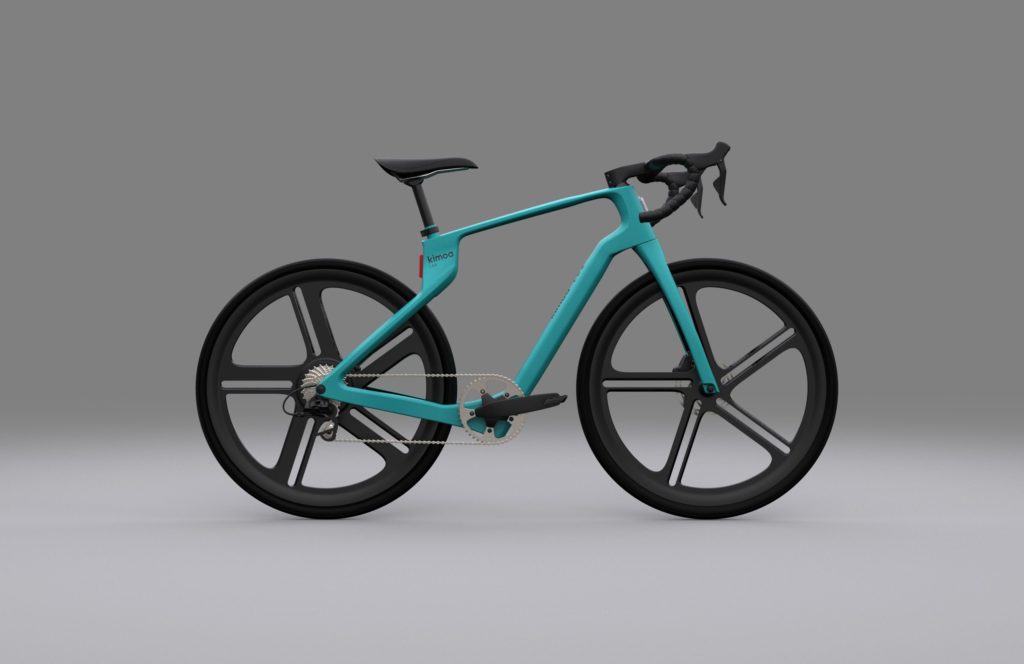 A rendering of the Kimoa E-Bike. Image courtesy of Arevo. With e-bikes, Arevo has found a niche that takes advantage of its continuous carbon fiber 3D printing technology, capable of producing large objects, without an excessive cost. It's a very interesting route for the startup to take, as other continuous carbon fiber businesses tackle smaller items. This has enabled Arevo to find commercial applications quickly, while other large-format carbon fiber 3D printing firms like Continuous Composites and Impossible Objects take other paths. At the same time, I can't help but wonder what Arevo is up to with its collaboration with In-Q-Tel. I imagine that its public operations must complement its work with the intelligence community's investment firm in some way. What parallels e-bikes might have with military technologies is difficult to determine, but we can picture objects of similar sizes and requirements being produced with Arevo technology: small drones, quadruped robots, or even exoskeletons are all possibilities. Meanwhile, Arevo's involvement in the production of bikes, e-bikes, and other electric vehicles allows it to continue developing its own 3D printing technology. It can then sell these to the market in the form of its Aqua series of 3D printers, which will further expand its operations globally, from Japan to France. It's enough to make you think Arevo could be our next unicorn, or a Soonicorn, as 3DPrint.com's Vanesa Listek calls them. The post F1 Champ Fernando Alonso Debuts 3D Printed E-Bike by Arevo appeared first on 3DPrint.com | The Voice of 3D Printing / Additive Manufacturing. |
| 3D Printed Air Filter from AddCat Eliminates 95% of Contaminants Posted: 04 May 2022 05:30 AM PDT Dutch company AddCat is on its way to commercializing a 3D printed metal catalytic . For the past year or so, I’ve been very bullish on being able to 3D print mass-customized meshes, screens and filters. By optimizing structures and flow, these kinds of filters could out perform conventional counterparts. And, if the performance is sufficient, then the higher costs usually associated with additive may melt away. AddCat is combining 3D printing and the effects of catalytic oxidation to develop air purifying filters specifically those for volatile organic compounds (VOCs). VOCs are easily spread and concentrate indoors air, potentially resulting in long lasting and detrimental health effects. There has been some worry over the years that 3D printers can release too many VOCs. Although enough air circulation per hour may be sufficient to ensure occupant safety, its nice to see that now we can use 3D printers to clean the air as well.
AddCat´s technology works similarly to a car’s catalytic converter. However, crucially, the company notes:
When we think of products with flow and how we can use flow to improve industrial components, we should realize that, for manifolds and sprockets, we usually want flow to be as efficient as possible. Sometimes, as in this case, the least efficient paths may give the best benefits. On top of this winding path, low pressure drop and the large internal volume of the part actually make it more efficient. If AddCat is successful, then a lot of other catalytic processes could very well be improved with 3D printing. For now, the firm wants to focus on removing methane and ammonia related VOCs in industrial and agricultural markets, specifically applications like asphalt manufacturing. To develop its filters, the company worked with K3D, a service bureau in Eindhoven, as well as with 3D printing cabinet and filtration firm AMPC Solutions. The current 3D printed AddCat filter can process one thousand cubic meters of air per hour. The company aims to go to fifty thousand cubic meters per hour. What’s more, the current system would “recover 95 percent of the heat that the system uses.” This additional energy recovery would make the system very efficient and play well into environmental initiatives.
The company hopes to outperform existing technologies with its current offering, aiming to release its first commercial product this year. I think that this is a very exciting solution area in which to deploy 3D printing. A lot of additive initiatives replace conventional components with more expensive printed counterparts. In this case, we can have a new part that outperforms existing systems. What’s more, this could lead to a completely new way of mitigating odors, VOCs, and other harmful contaminants. Rather than chase the same few aerospace and automotive firms, many 3D printing businesses would do well to follow AddCat’s example and use 3D printing for new geometries that tackle new challenges. Here, 3D printing is used as a solution in which good geometry and better flow properties translate into a disruptive market entry. I believe that there are many areas where we could unlock the same potential left unexplored. The post 3D Printed Air Filter from AddCat Eliminates 95% of Contaminants appeared first on 3DPrint.com | The Voice of 3D Printing / Additive Manufacturing. |
| SuperMeat: the Future Intel of Cultured 3D Printed Chicken? Posted: 04 May 2022 05:00 AM PDT Commercializing cell-cultured meat is turning into a sought-after undertaking for food entrepreneurs. After Singapore became the first nation to approve the sale of cultivated meat in December 2020, the Israeli Innovation Authority granted final approval for the world’s largest cultivated meat consortium. Meanwhile, Japan is on the verge of promulgating a new regulatory framework for cell-based meat. Moreover, now that European cultivated meat companies are gearing up for approval from the European Food Safety Authority (EFSA), soon, we could all try lab-grown meats, free of slaughtering ethical concerns. It seems everywhere we turn, cultured cutlets are among the big bets of the decade. Billionaires Bill Gates and Richard Branson publicly announced investing in lab-grown meats. Elon Musk's SpaceX is launching cultured animal proteins to the International Space Station as it dabbles into space-manufactured meats for long-term exploration missions to the Moon, Mars, and beyond. SuperMeatIn the meantime, right here on Earth, Israel is home to one of the world's first restaurants dedicated to cultured poultry, SuperMeat's The Chicken. The startup offers chicken meat grown directly from the animal’s cells in its own "test kitchen," located in the city of Ness Ziona, near Tel Aviv. Described as a "farm-to-fork" facility, the dining experience lets guests observe the production plant and process as they sit at the heart of a seasonally-inspired menu of locally grown, freshly-sourced dishes made by a team of chefs in an open kitchen. Since SuperMeat is at the development stage and is not yet commercial, consumers need to apply to be selected for the experience, and they don't pay for their meal but instead give detailed feedback on the product. Since 2015, SuperMeat has aspired to create clean meat grown in a controlled, sterile environment without using any antibiotics. Although the meat itself might require significantly fewer resources than traditionally obtained meat cuts, the process demands more technology. Still, it has a long way to go in the quest to replace animal meat. To learn more about this revolutionary process, 3DPrint.com reached out to SuperMeat CEO Ido Savir, who believes that for the first time in history, they will recreate meat as it is. Savir says SuperMeat is the first B2B (business-to-business) company that wants to feed the world through its complete cultured meat production. "The Intel of meat chicken," as he described it. The company also wants to allow food firms to be at the forefront of the emerging cell-based meat industry and manufacture a wide range of products: first chicken, then turkey and pork. The ultimate goal is to serve as a co-brand that can provide technology to the food service industry. Therefore, the brand is not just looking to sell its lab-grown meat at The Chicken but to work with other brands and facilitate "mass meat as a service." For Savir, who comes from the software tech sector, this will be a lot like the software as a service (SAAS) licensing and delivery model in which software is offered on a subscription basis and is centrally hosted. Savir began his professional career in the Israel Defense Forces (IDF), working on the transition of legacy systems through the Y2K Bug crisis. Later, he architected the development of IDF's data warehouse, forming a consolidated system converging data into decision-based knowledge, drastically reducing cost and improving efficiency. Leading the design of one of the world's first cross-platform infrastructures for the mobile smartphone revolution, and helping large corporations develop and distribute mobile-based services and applications, would enable him to arrive at this point, driving SuperMeat's path from lab-scale culturing of cells to large scale meat production and commercialization. Can cultivated chicken make the cut?Even though companies like SuperMeat are usually categorized as alternative meats, Savir says this is far from true. "We are not an alternative protein company because we produce animal protein," he points out. The only difference with traditional meat is the production process.
SuperMeat recently secured a strategic partnership with Japanese food giant Ajinomoto to improve and progress the commercialization of cultivated meat products. In addition, the startup has raised a total of $4.2 million in funding over five rounds, the latest being a Series A round completed in February 2021. On a quest to transform the cultivated meat industry, SuperMeat even hosted an industry-first blind tasting of cultivated versus traditionally-grown chicken. Hosted at The Chicken, leading culinary figures, including MasterChef judge Michal Ansky gathered to judge the side-by-side tasting and received ground cultivated and traditional chicken without seasoning, processing, or flavor overlay. The chefs found it generally challenging to distinguish the two chickens. But, Ansky, who got her answer wrong, said, "this kind of breakthrough has been a long time coming," and "it’s inspiring to see a more sustainable future can be achieved; via cultivated meat.” The Chicken or the Egg?An ethical principle at the foundation of SuperMeat's production process is that the startup won't let the animal die. As the name suggests, cultured meat is created by cultivating animal cells from cows, pigs, or chickens in a lab. Theoretically, lab-grown proteins lead to less pollution than raising animals and leaves the slaughter factor out of the equation. We say theoretically because a lot of questions about the product still remain. For example, experts have questioned whether cultured meats require fetal bovine serums (FBS), which would still demand animals to be slaughtered. Other cell-based meat companies might not need to kill an entire animal but may require a small biopsy from muscle tissue. According to Savir, in the case of SuperMeat, the process starts with an egg.
Whenever the team of engineers at SuperMeat wants to create a "batch of meat," they will take cells from their cell bank and multiply them through a fermentation process (similar to yeast). Then once mass is reached, the cells are transferred to a sequential bioreactor to grow into muscle, fat, or connective tissue. For now, the chef at The Chicken will use different types of processing mechanisms to structure the meat in alternative ways. But Savir says the next stage is "obviously 3D printing."
Although the kitchen at The Chicken is in full view for anyone who visits, the 3D printing technology SuperMeat is working on is not being exposed yet. But the team has already developed bioinks at scale, which soon will allow 3D printing of any specific meat composition. So far, the startup is working on the 3D printing technology internally to gain knowledge of its potential and have a feedback loop through its development team, which tailors and tweaks the technology to benefit meat production. However, since its inception, collaboration has been one of the cornerstones at SuperMeat, which is why Savir is not dismissing the idea of working with one of the 3D printing powerhouses in Israel. Although the team doesn't talk about limitations, they have faced challenges as the possibilities of what they can do open up.
SuperMeat is not producing just muscle or fat, but a platform of multiple ingredients, where any meat tissue can be built. This system that uses early development stem cells opens up an incredible number of possibilities in the entire meat category, including chicken and other meats. Savir looks forward to leveraging its bioinks and 3D printing technology so that customers can create new meats. Even more so, now that SuperMeat has proven its pilot industrial production plant works, the next step is to scale up its technology as it gets ready to launch its first commercial plant and roll out its product line in mid-2023. The post SuperMeat: the Future Intel of Cultured 3D Printed Chicken? appeared first on 3DPrint.com | The Voice of 3D Printing / Additive Manufacturing. |
| Injection Molding Firm Oechsler Doubles Down on 3D Printing with HP and AMT Expansion Posted: 03 May 2022 06:30 AM PDT Oechsler AG is a Germany-based, leading global supplier of polymer solutions that has been operating for over a hundred and fifty years. The company was also an early adopter of additive manufacturing (AM), and has had a strategic partnership with HP (NYSE: HP) since 2020. The collaboration is devoted to developing AM applications for a wide variety of industries that Oechsler already has a larger foot in with conventional manufacturing methods. Oechsler is now announcing that, rather than just one of many offshoots of its main division — injection molding — the company plans on AM being its "second major business area,” and is taking a few key steps to make those plans a reality. First off, Oechsler will be ramping up its AM operations to include serial production, using its arsenal of HP Multi Jet Fusion (MJF) printers.  To that same end, the company has consolidated its AM operations at its location in Ansbach-Brodswinden, and has made a multimillion-dollar investment into expanding the AM facilities there. The expansion will increase the space devoted to AM production by over 8000 square feet; two additional areas of over 1600 square feet each, one for measurement and another for quality assurance, will also be part of the expansion. Finally, Oechsler will also be making an investment exceeding a million dollars into Additive Manufacturing Technologies (AMT), so that the latter can develop automated post-processing solutions for the former over the next year and a half.
This is a significant announcement for multiple reasons. That a company with such a lengthy history is planning to make AM its second most important area of focus indicates how far the industry in general has come. Moreover, because Oechsler has such a weighty track record, similar companies will be less hesitant to scale up their AM divisions to series production in the near future. This should be true, especially, in sectors where Oechsler is strong, like automotive and sporting goods. We also see reiterated here how crucial post-processing is for the leap of using AM for mass production. And, presumably, mass production is the ultimate place a development like this is headed in the long run. The timeline of a year-and-a-half for AMT's post-processing solution suggests that once Oechsler starts with serial production, it will scale that production up further from there. It will be interesting to see how announcements like this one play out ahead of the deadlines for previous announcements coming to pass — such as the announcement by Volkswagen from about a year ago, that it wants to 3D print 100,000 car parts a year by 2025. Images courtesy of Oechsler. We also see reiterated here how crucial post-processing is for the leap of using AM for mass production. And, presumably, mass production is the ultimate place a development like this is headed in the long run. The timeline of a year-and-a-half for AMT's post-processing solution suggests that once Oechsler starts with serial production, it will scale that production up further from there. It will be interesting to see how announcements like this one play out ahead of the deadlines for previous announcements coming to pass — such as the announcement by Volkswagen from about a year ago, that it wants to 3D print 100,000 car parts a year by 2025. Images courtesy of Oechsler. The post Injection Molding Firm Oechsler Doubles Down on 3D Printing with HP and AMT Expansion appeared first on 3DPrint.com | The Voice of 3D Printing / Additive Manufacturing. |
| You are subscribed to email updates from 3DPrint.com | The Voice of 3D Printing / Additive Manufacturing. To stop receiving these emails, you may unsubscribe now. | Email delivery powered by Google |
| Google, 1600 Amphitheatre Parkway, Mountain View, CA 94043, United States | |
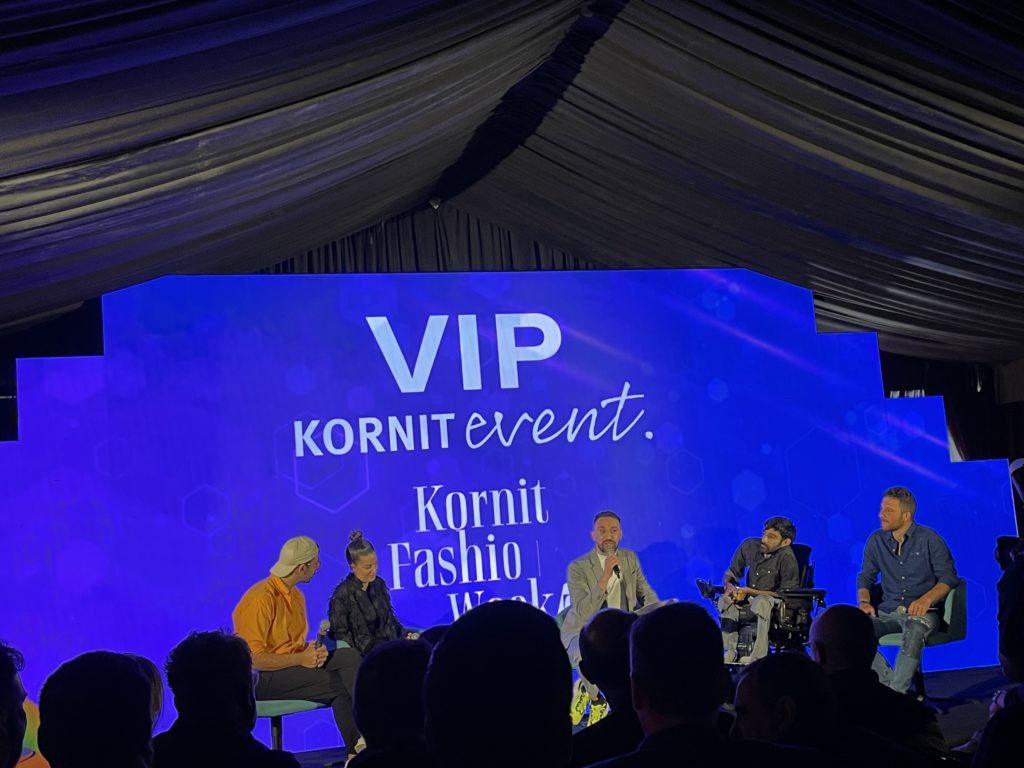
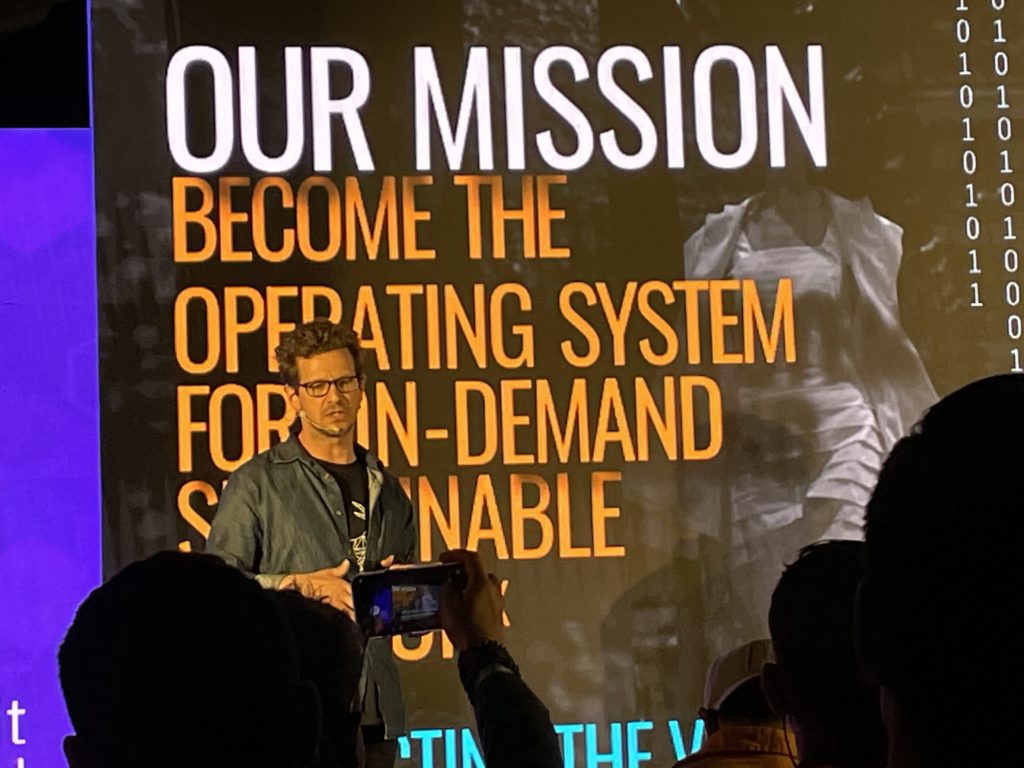
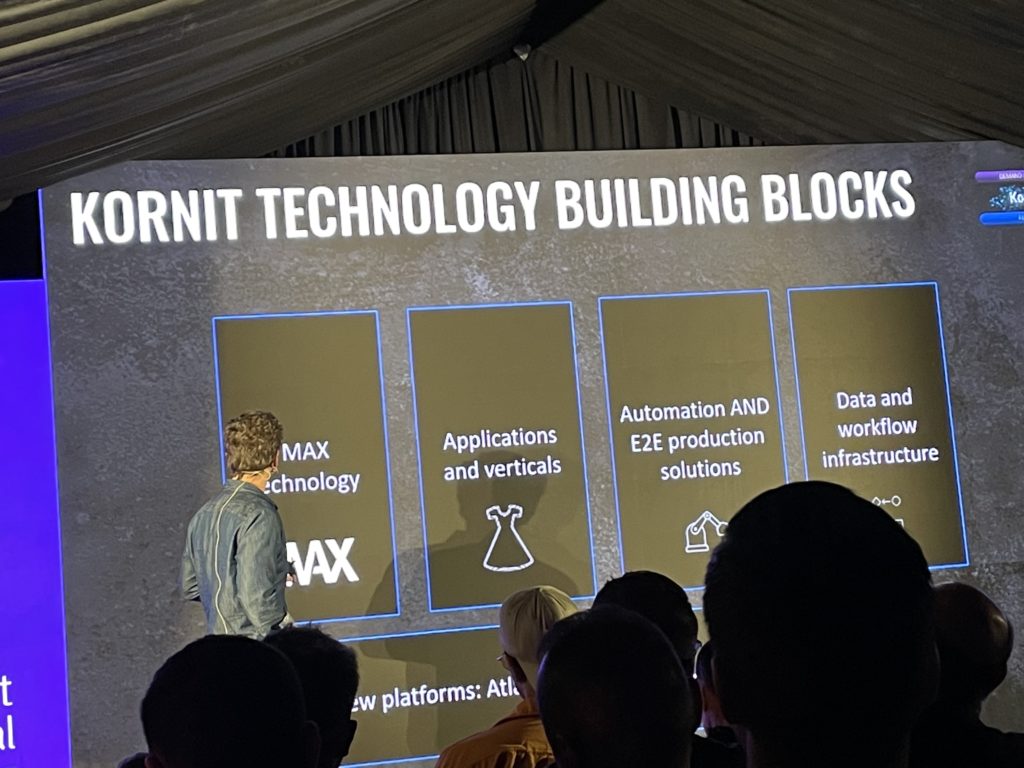
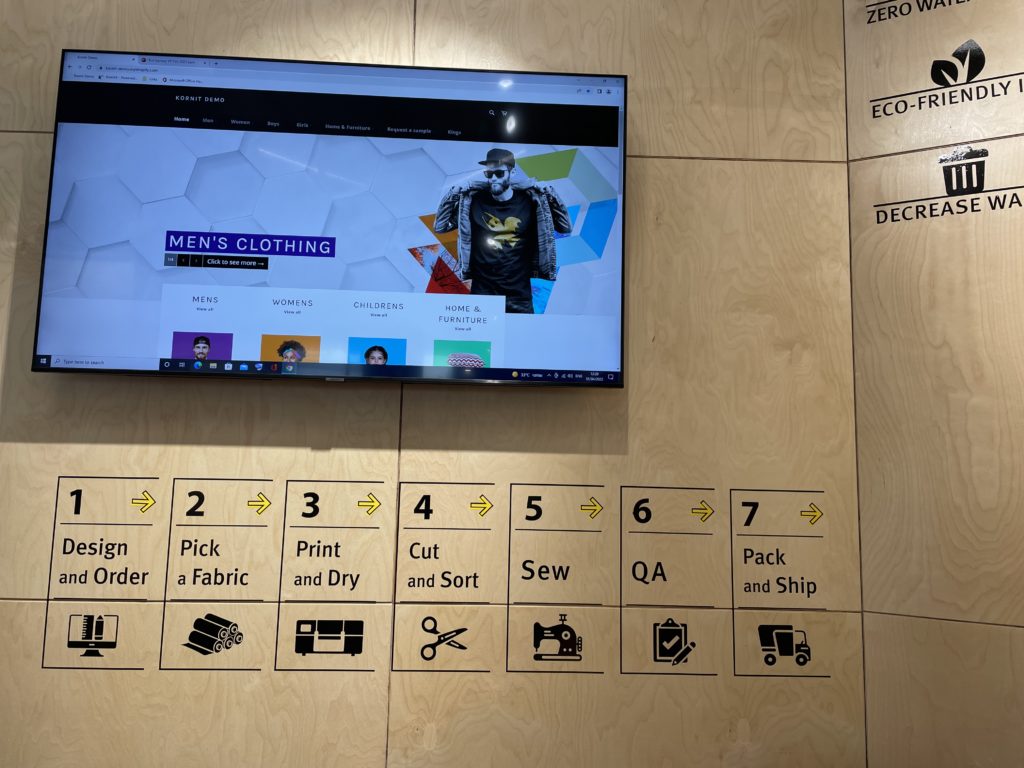
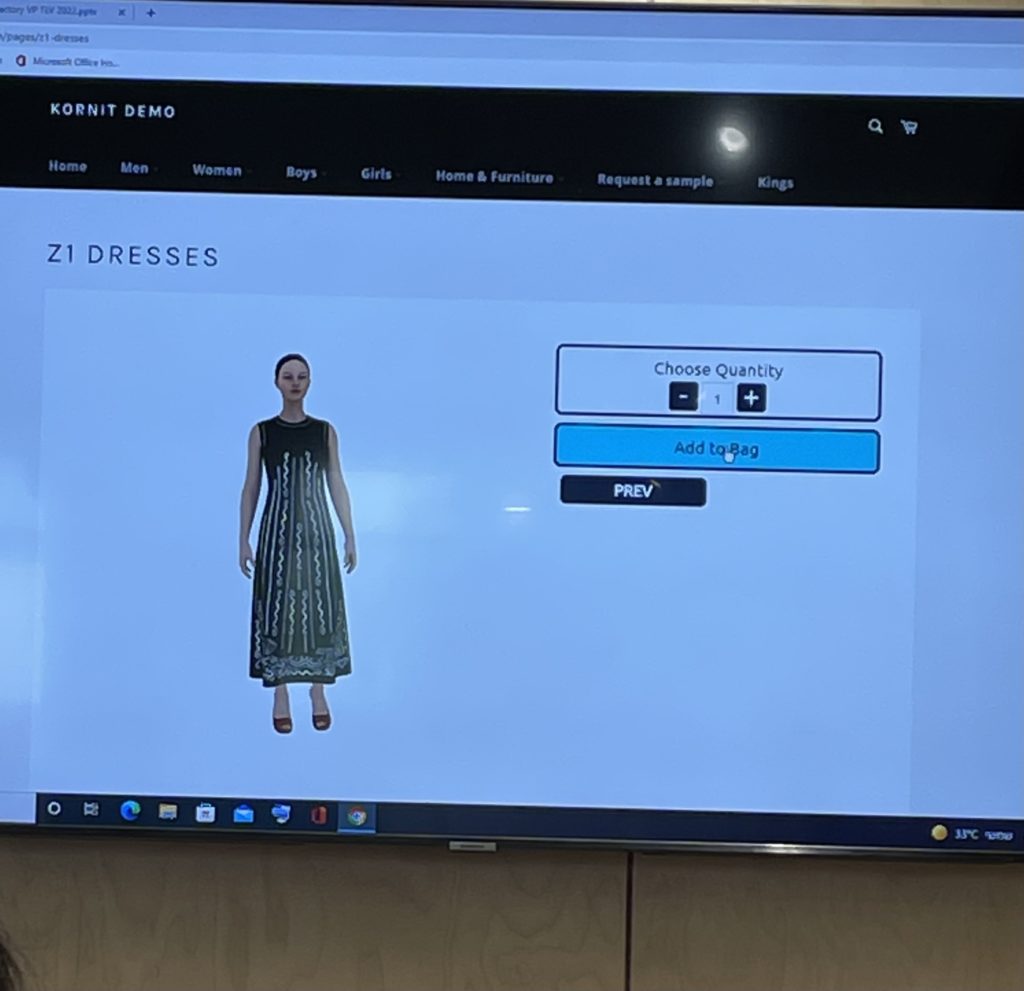
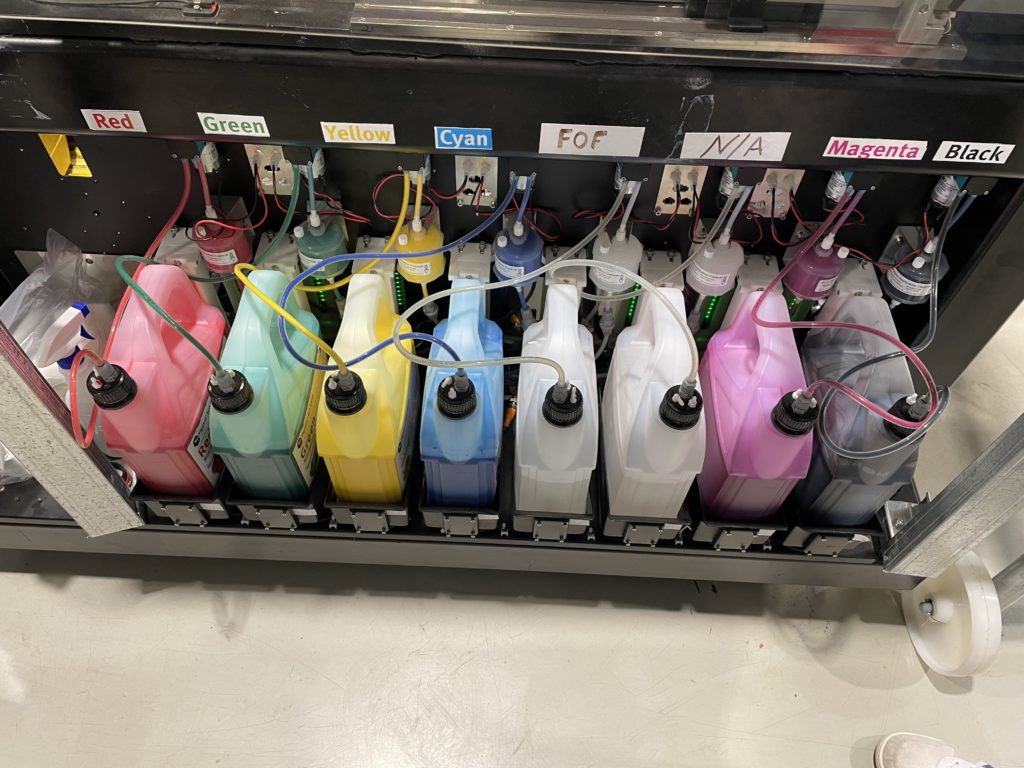
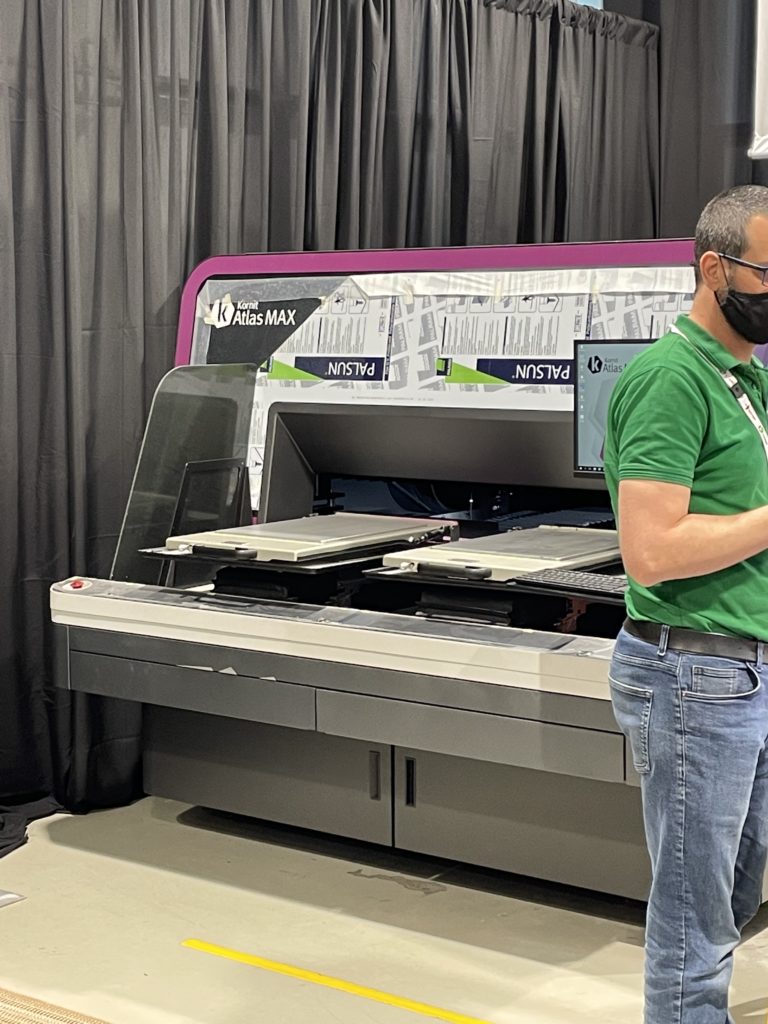
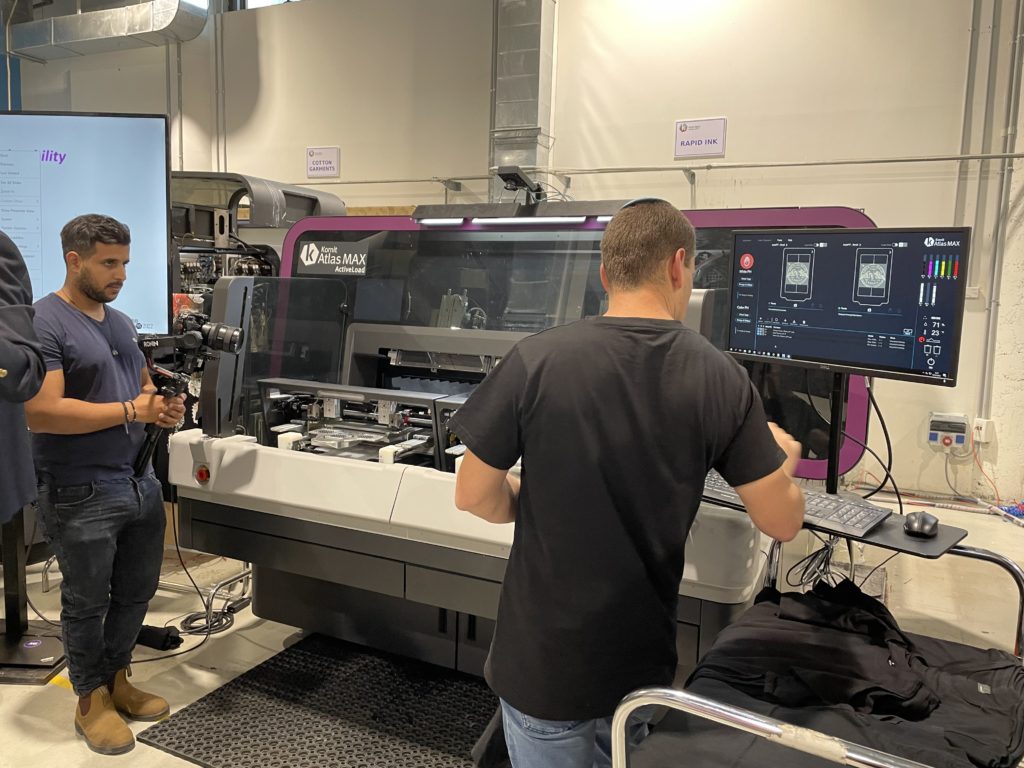
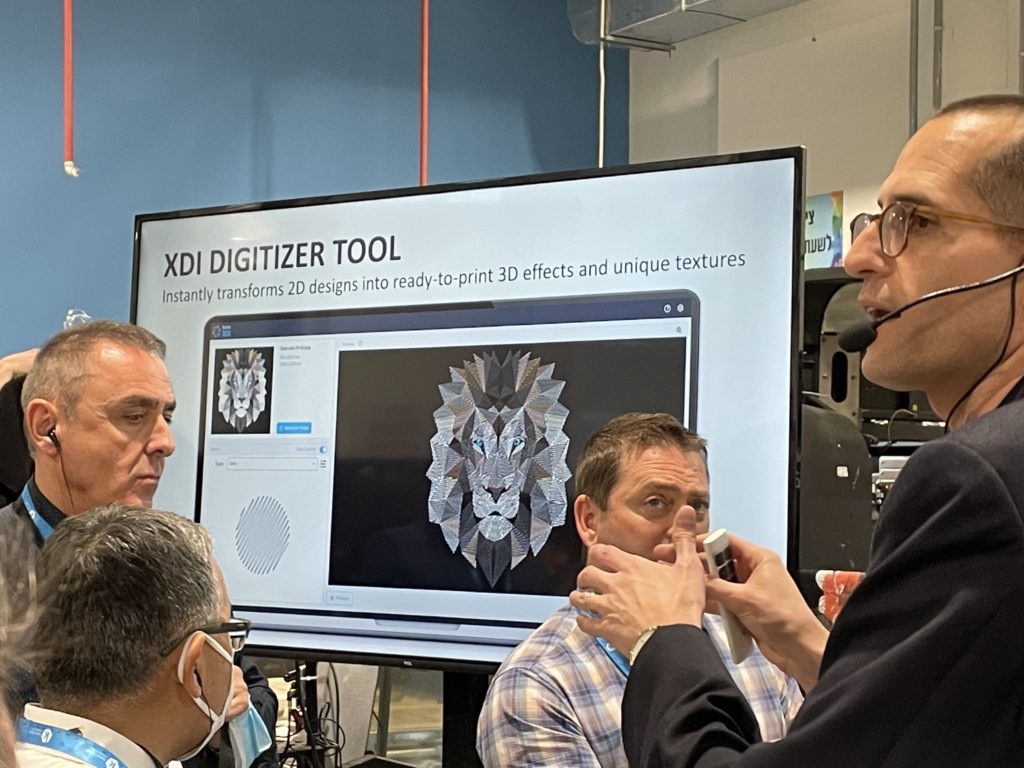
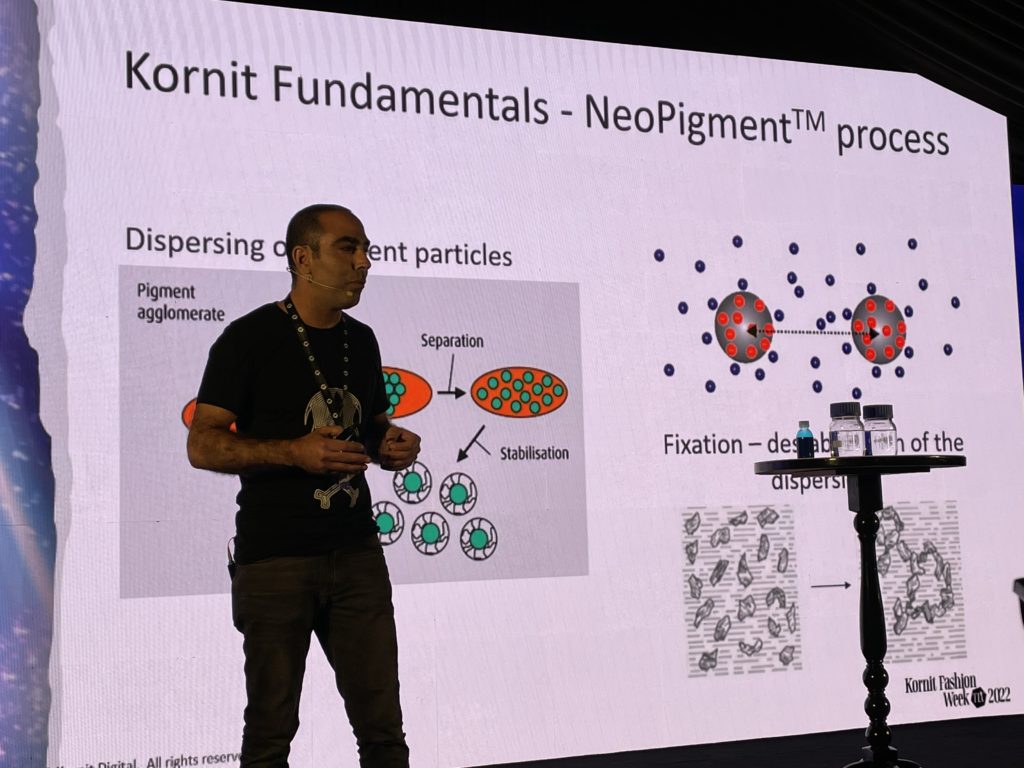
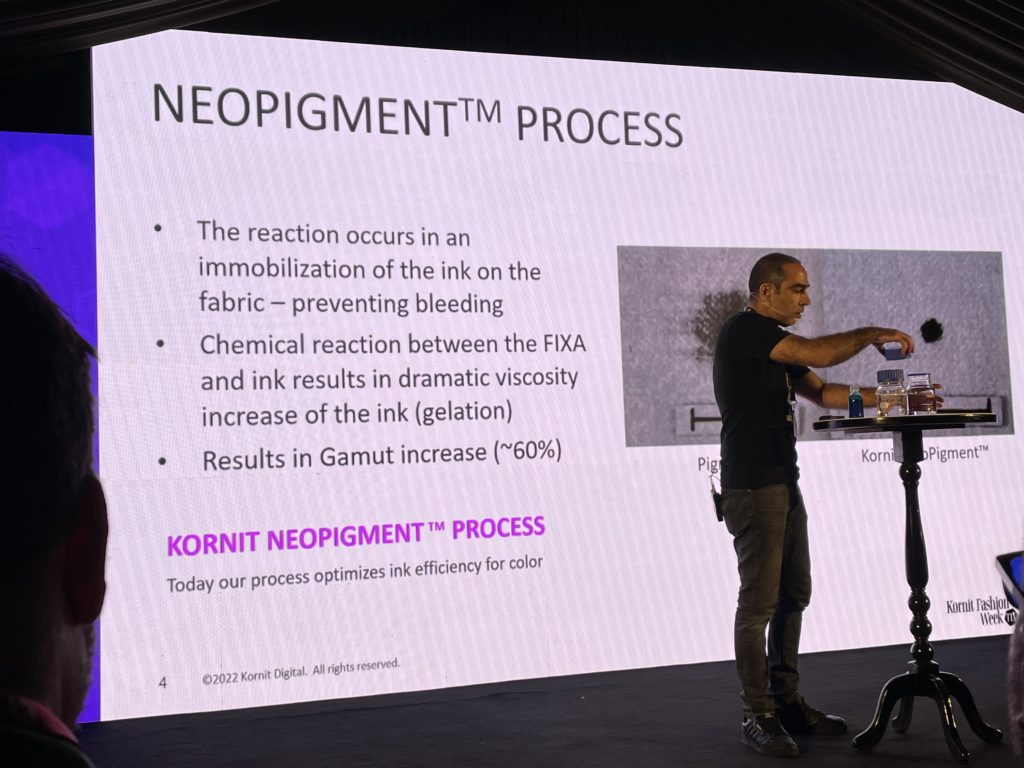
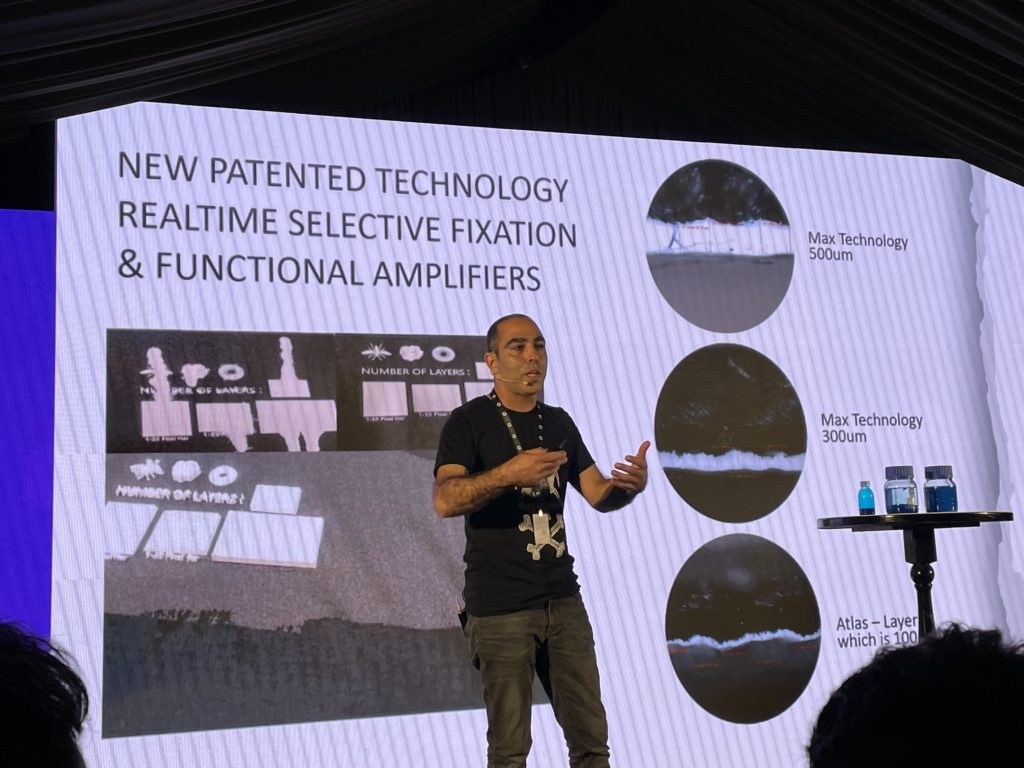
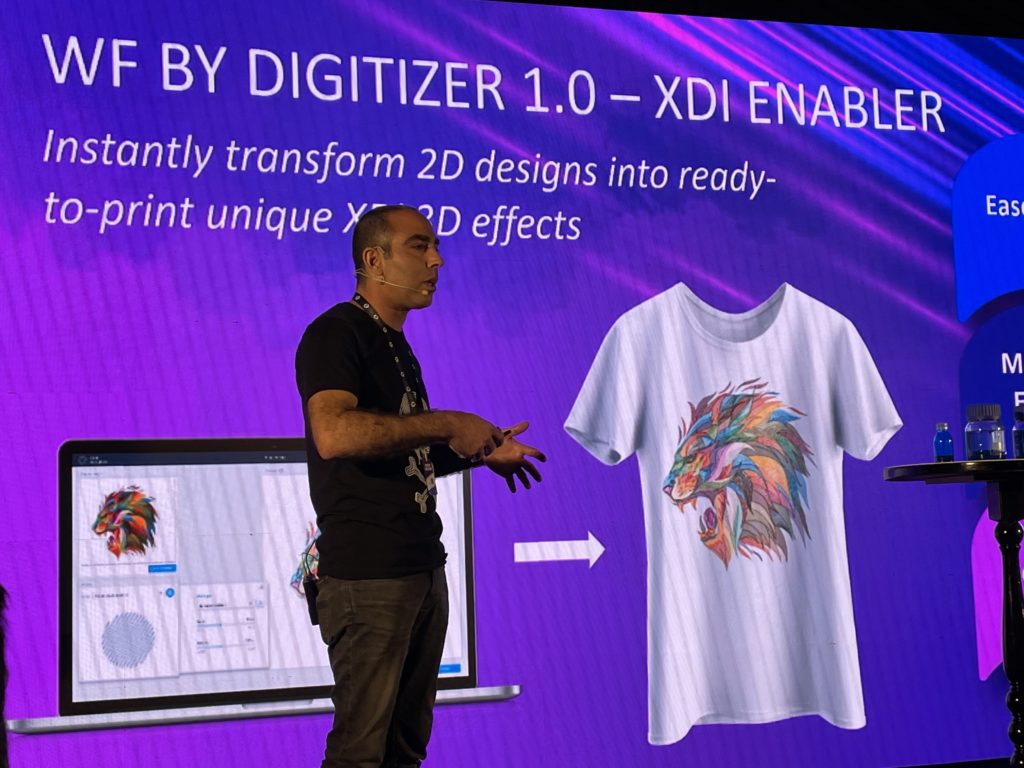
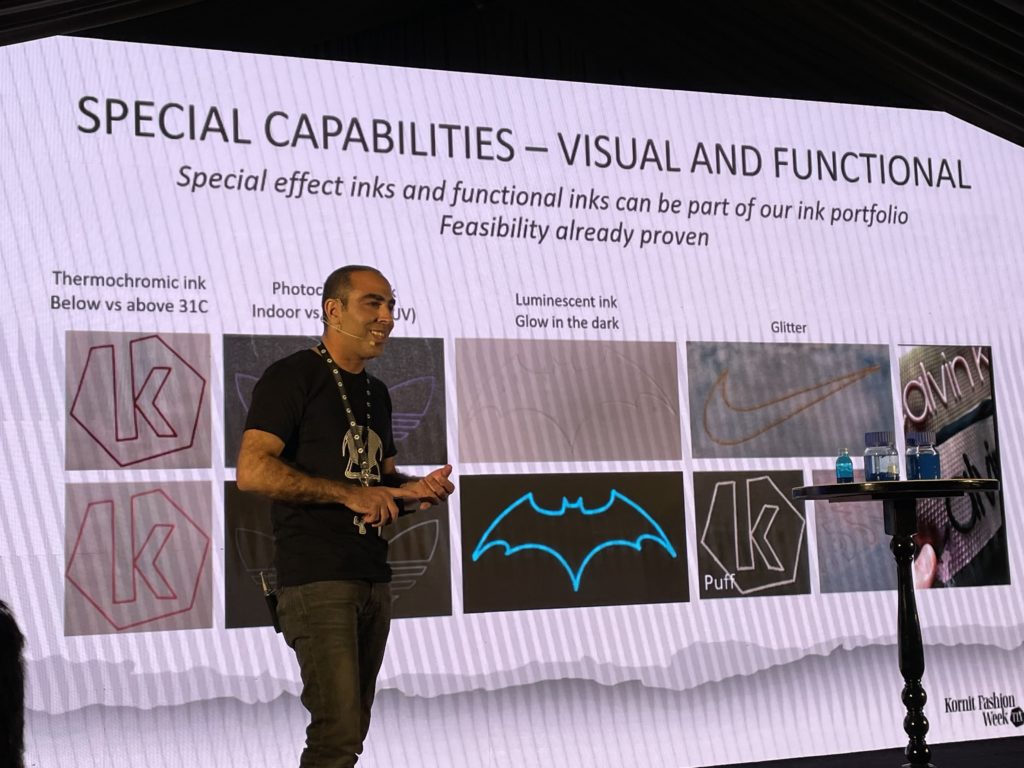
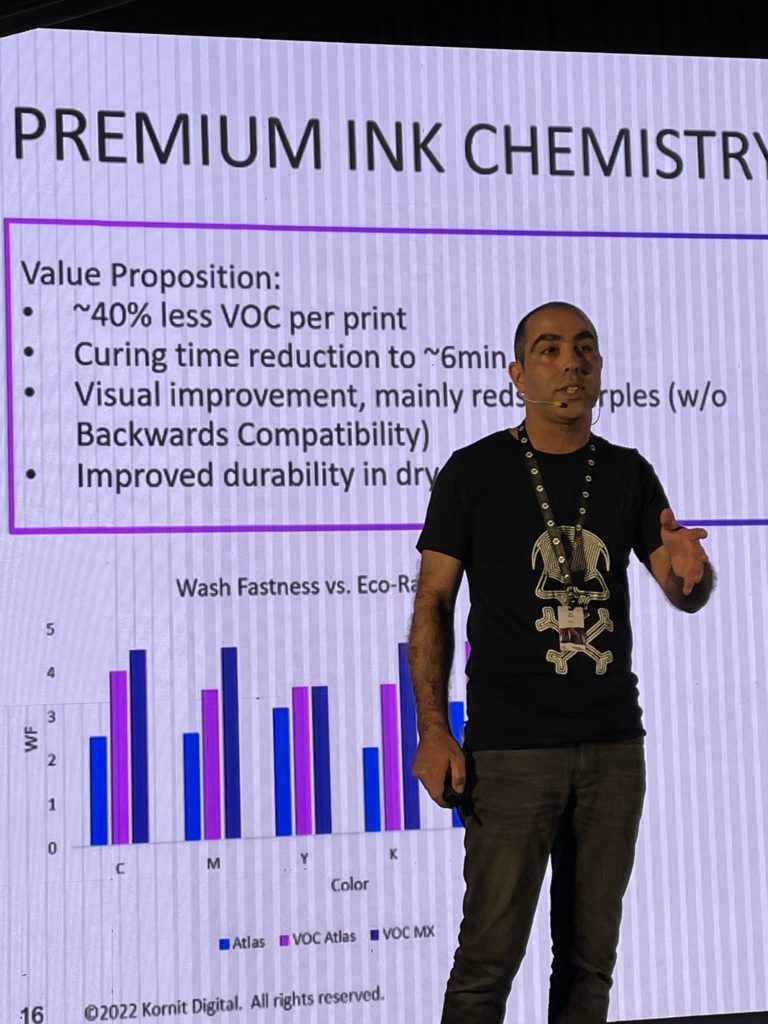
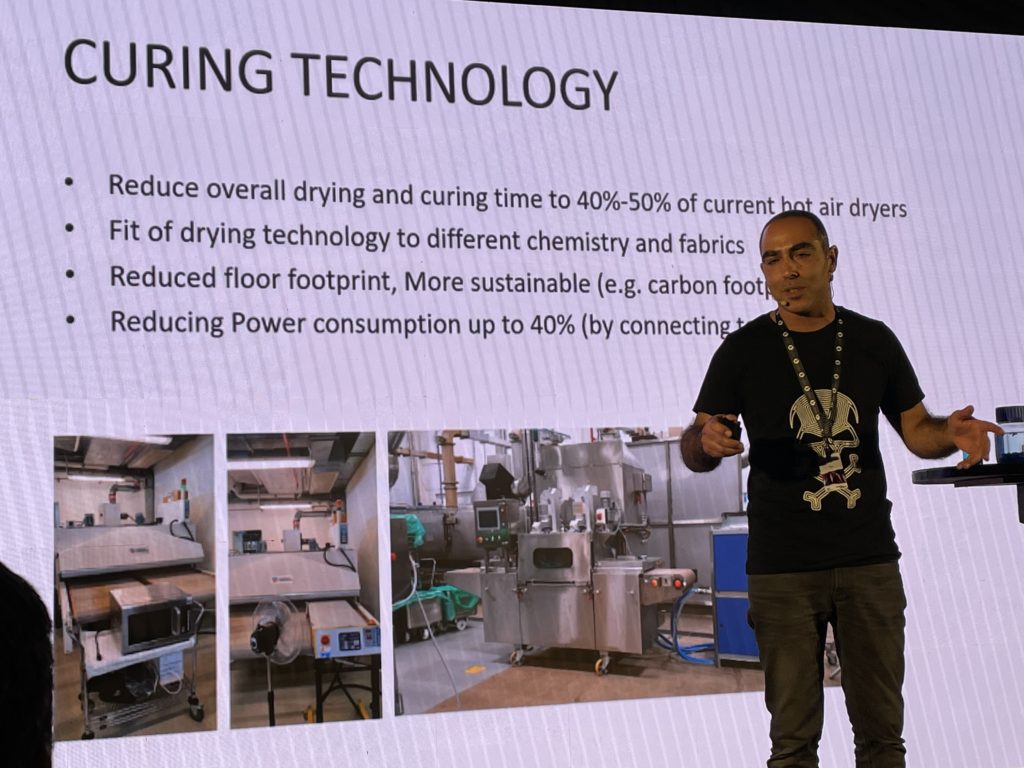

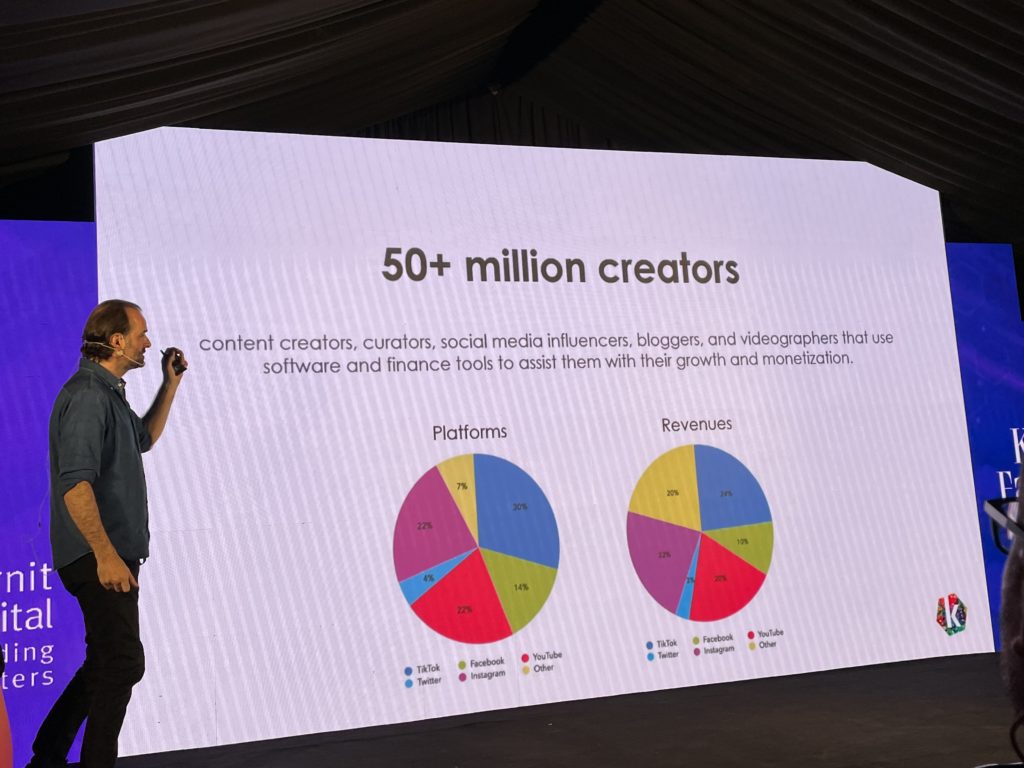
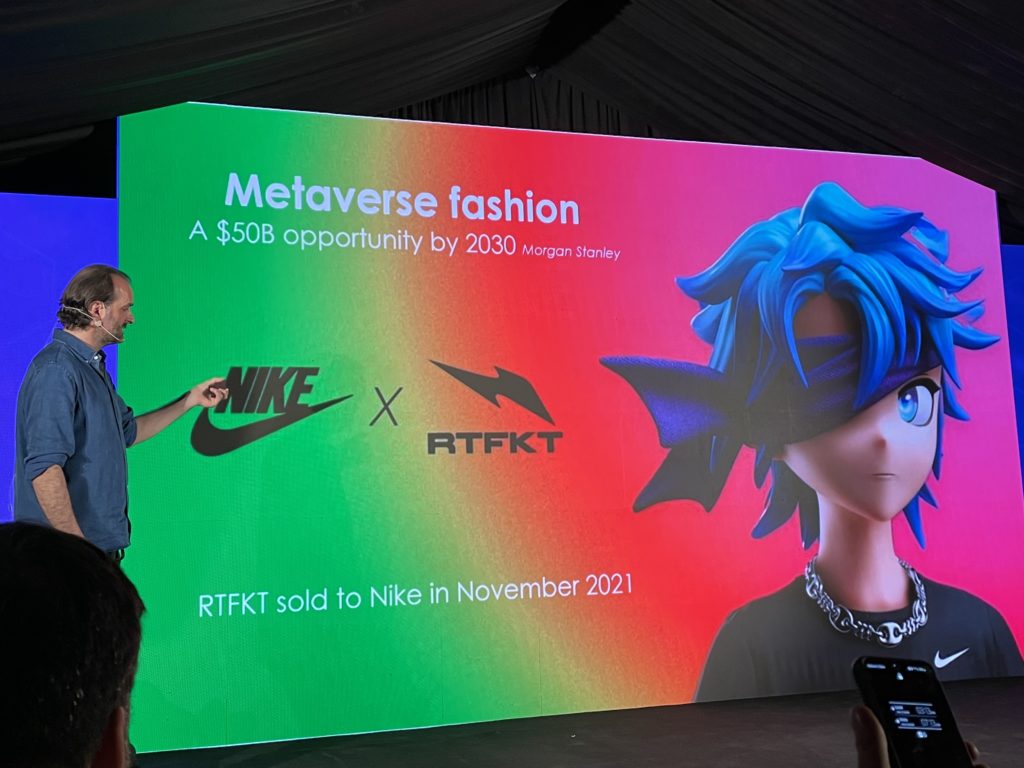
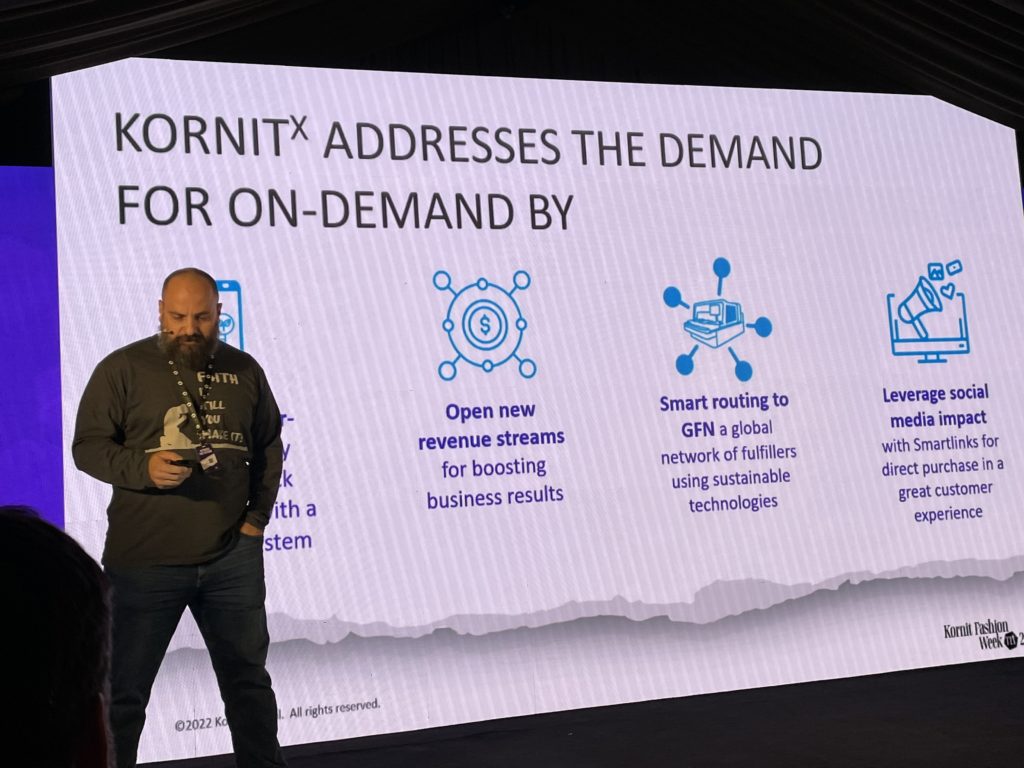
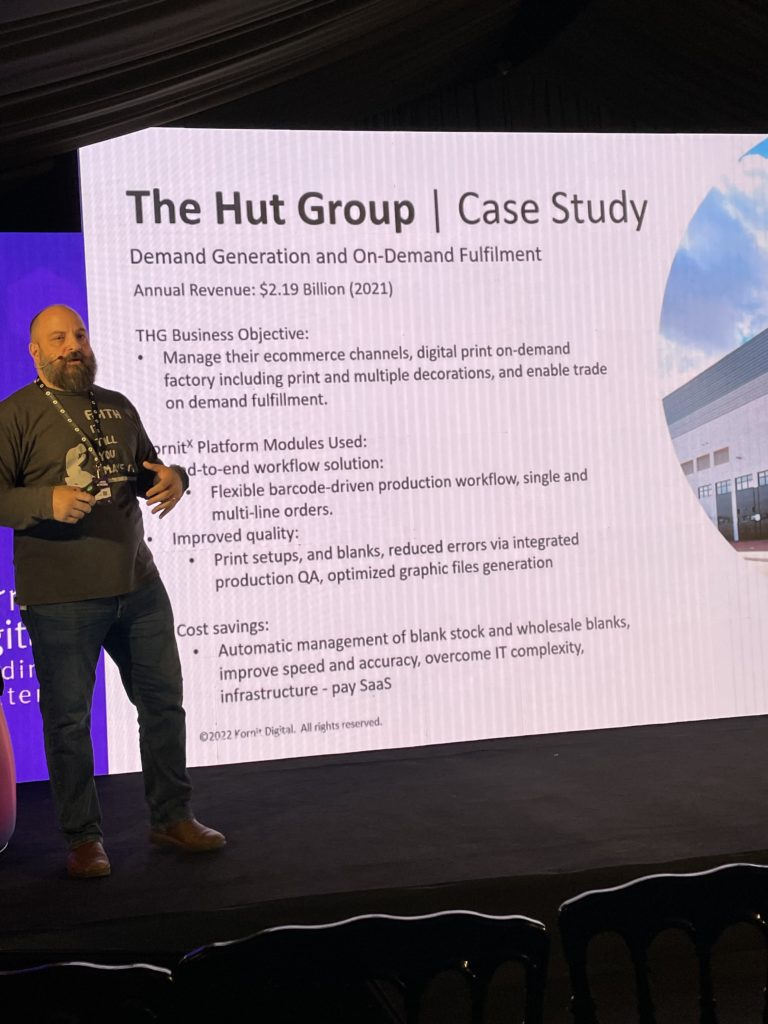
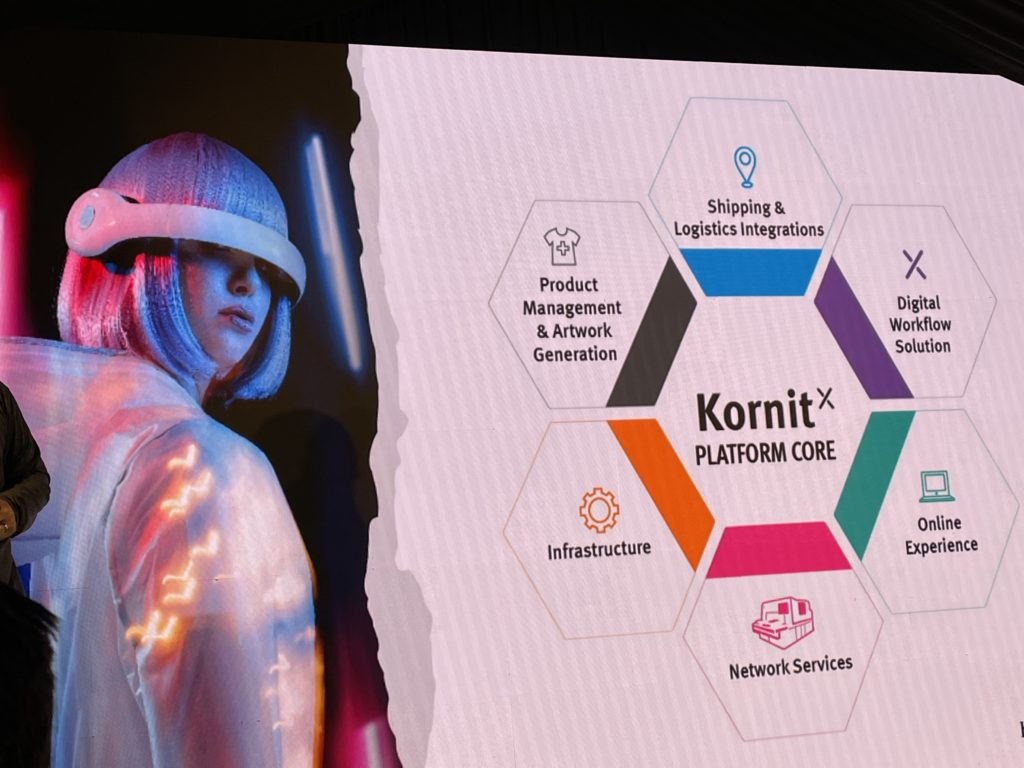

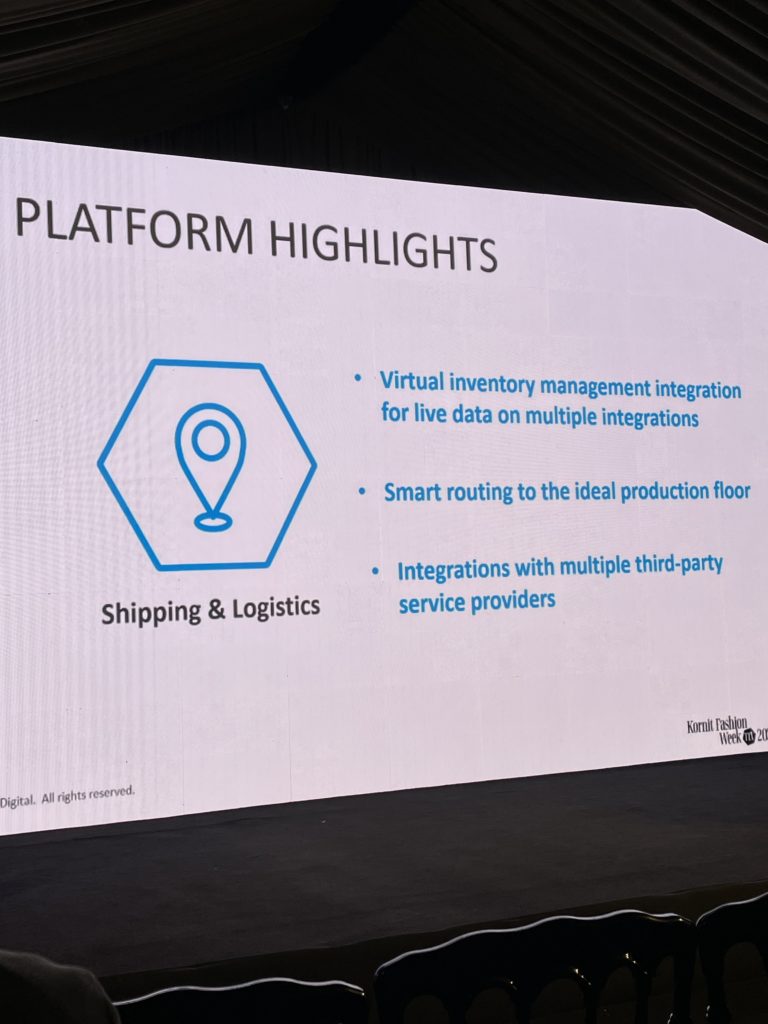
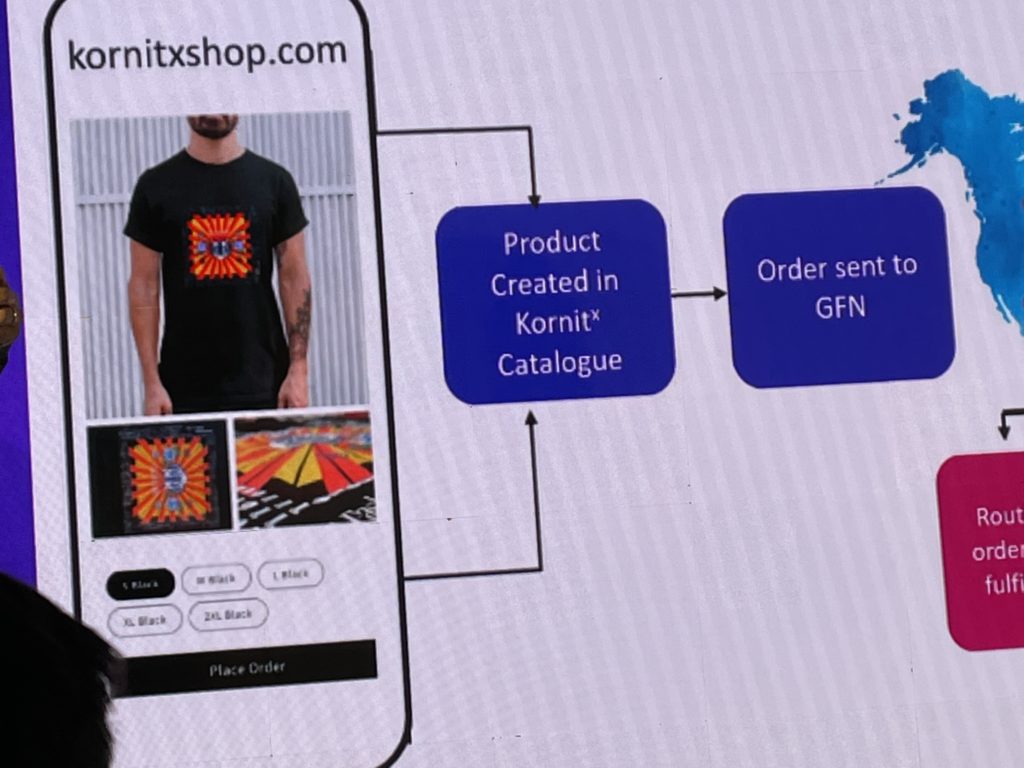
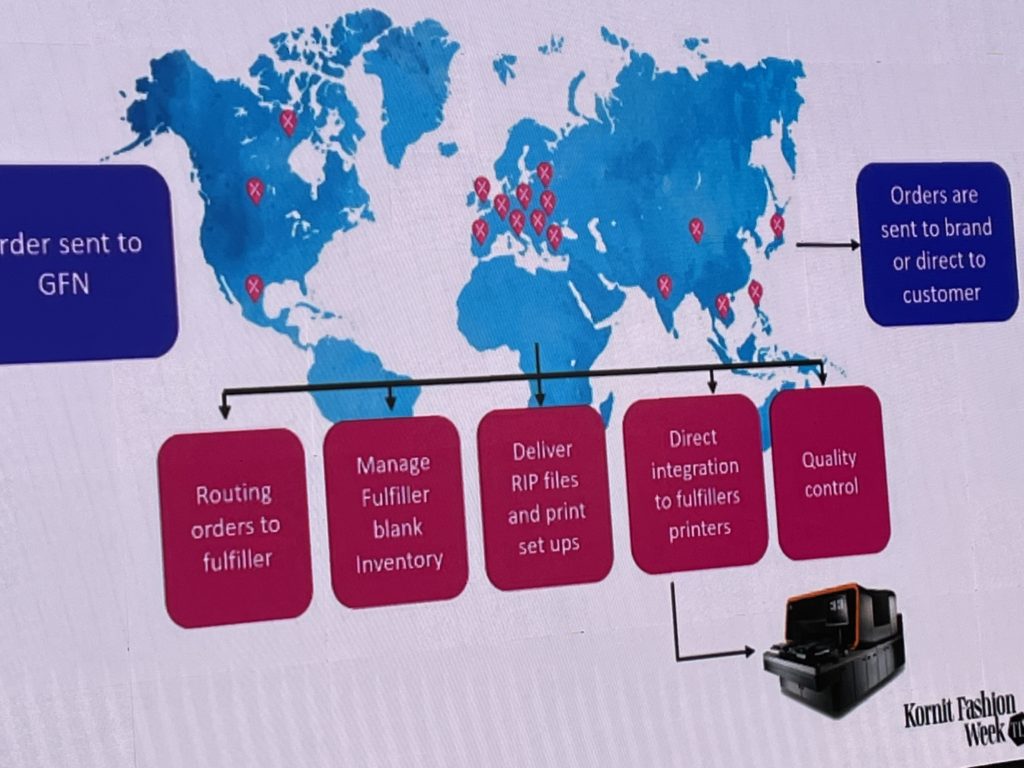
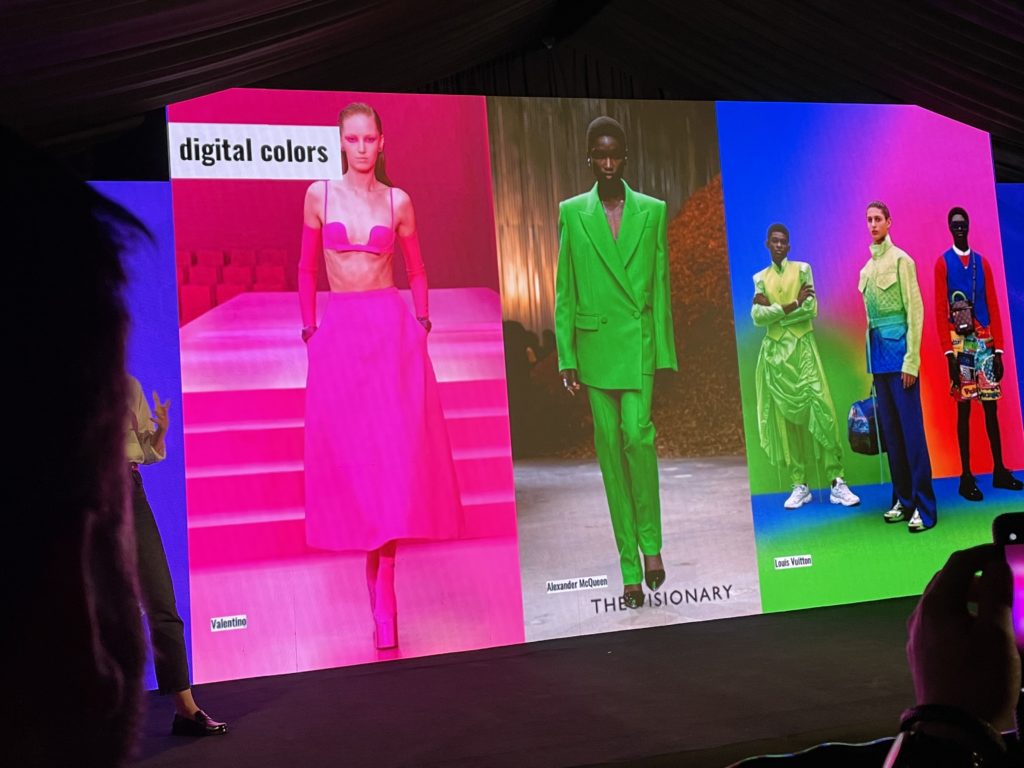
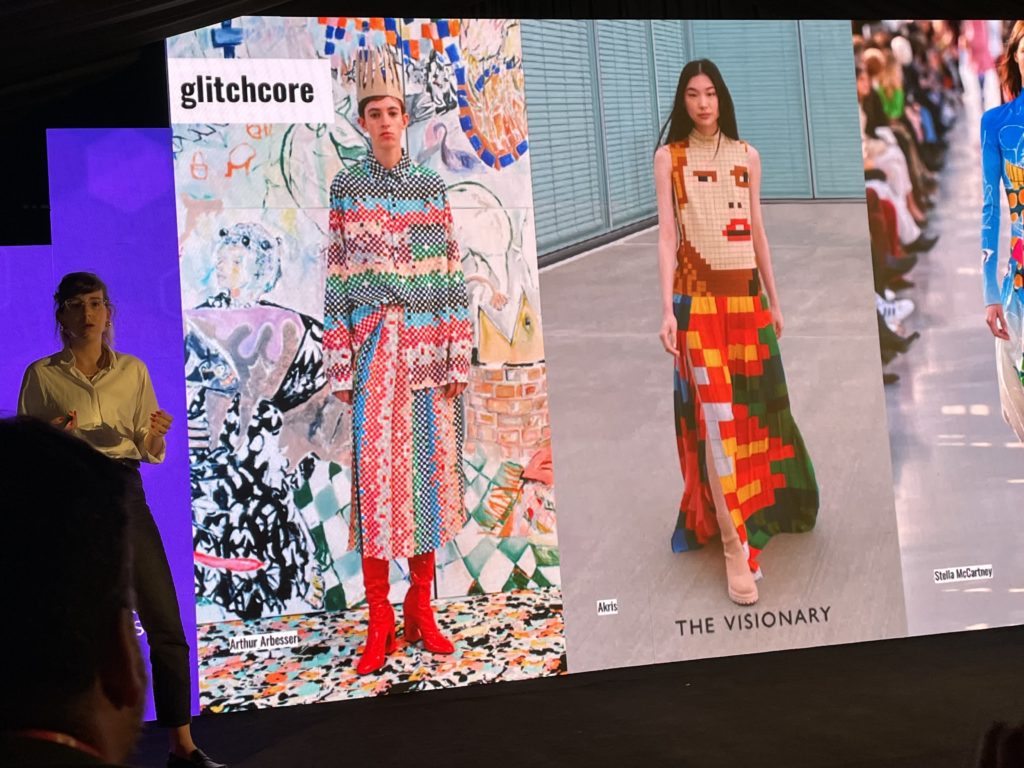
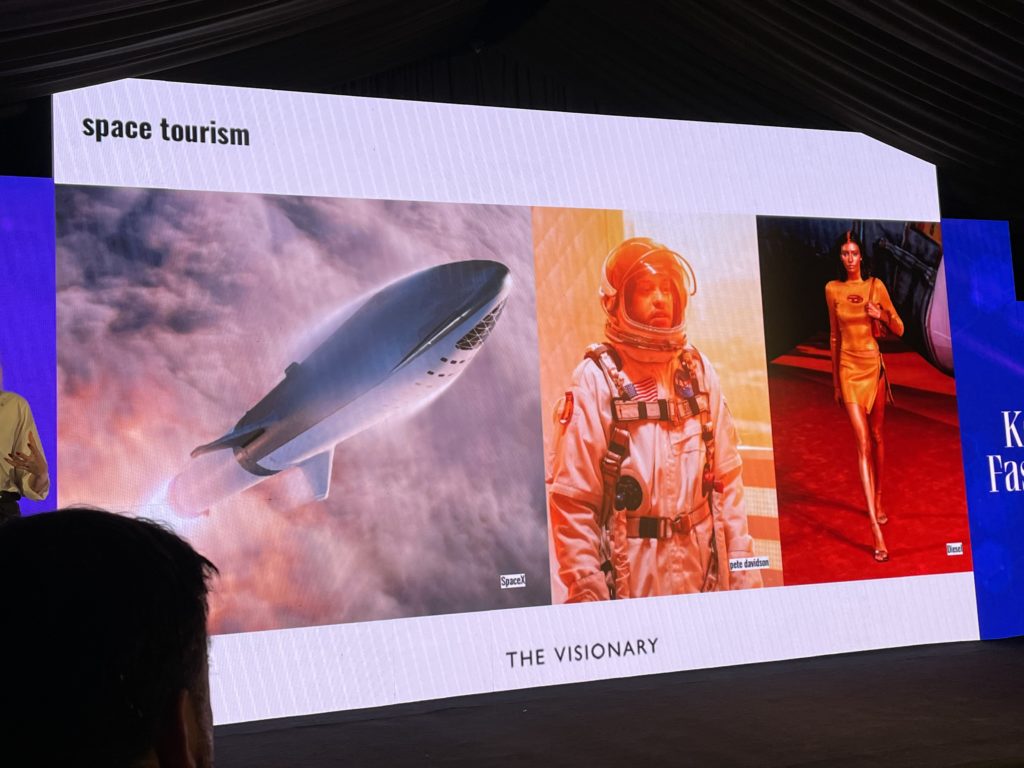
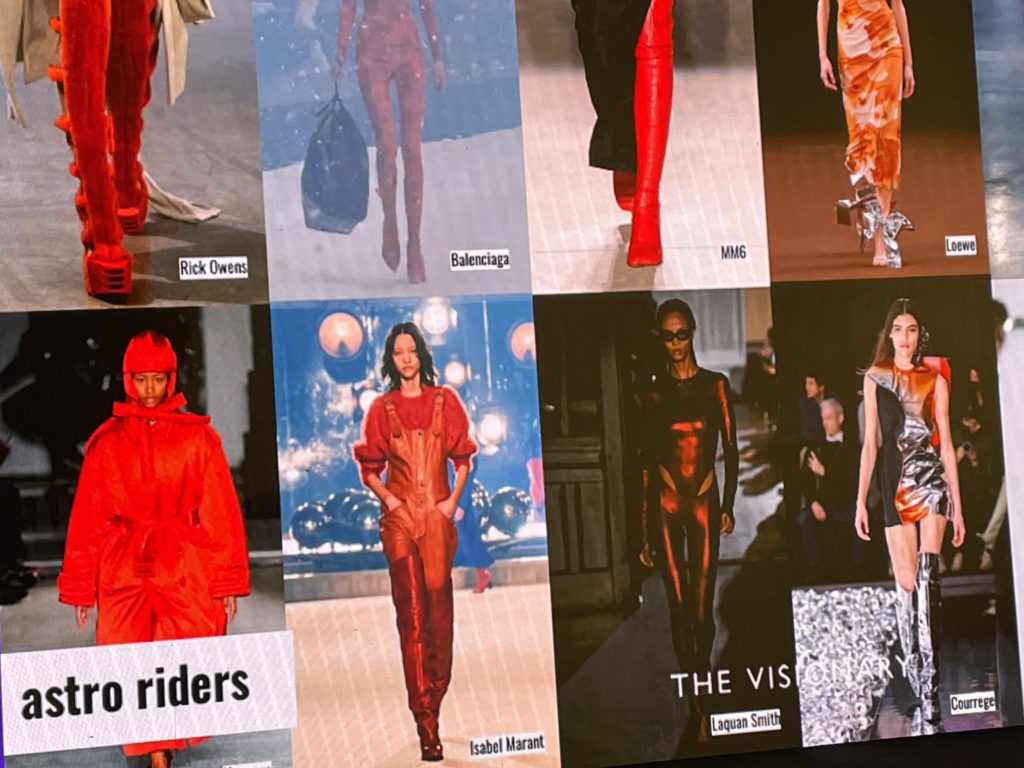
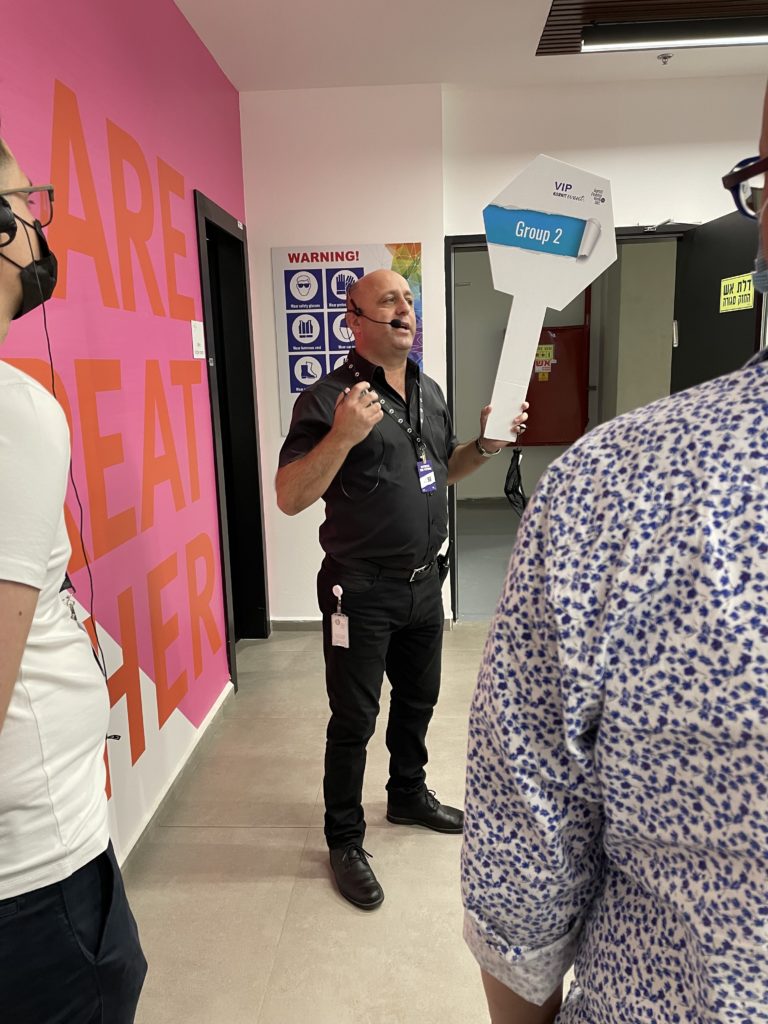
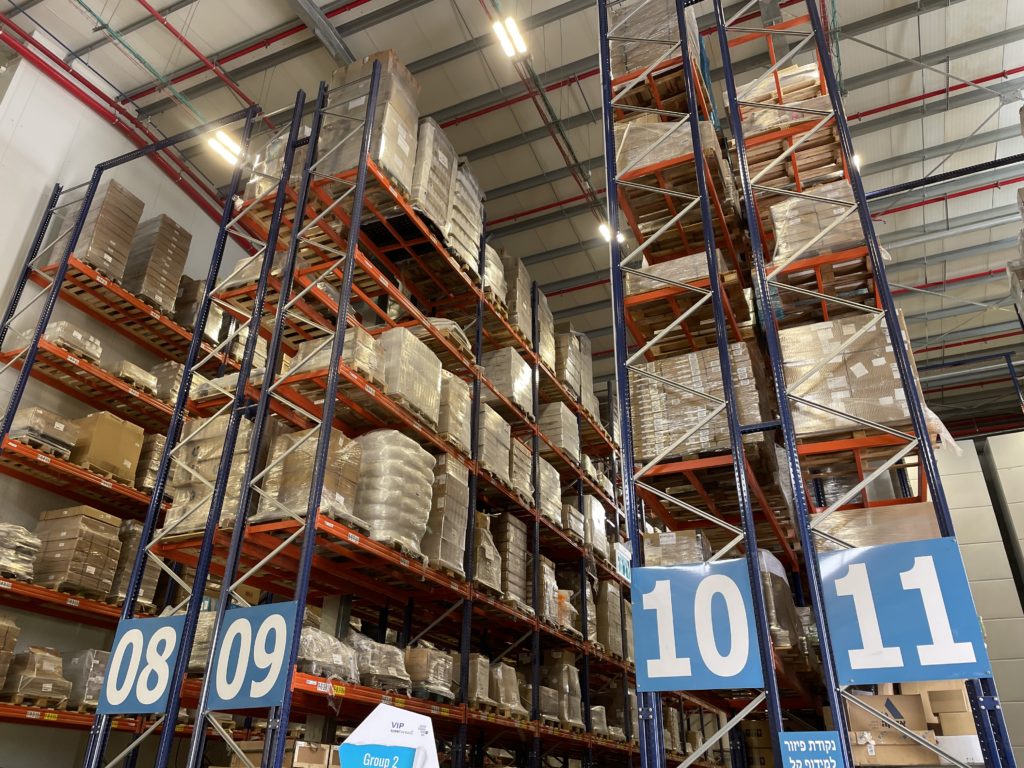

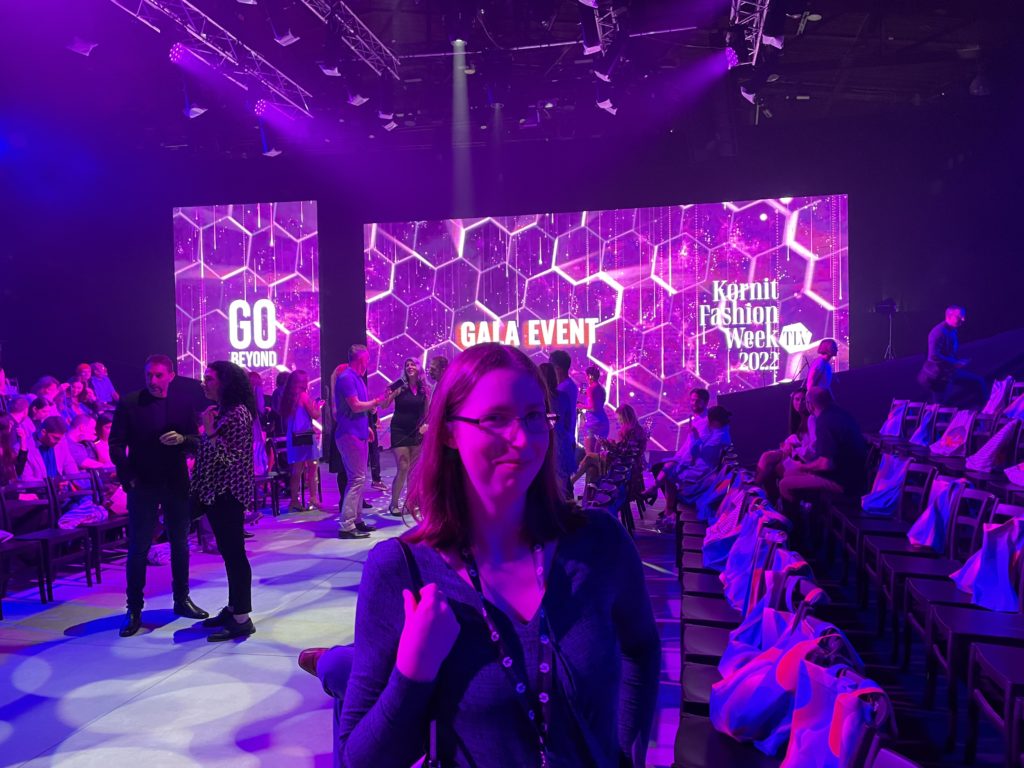

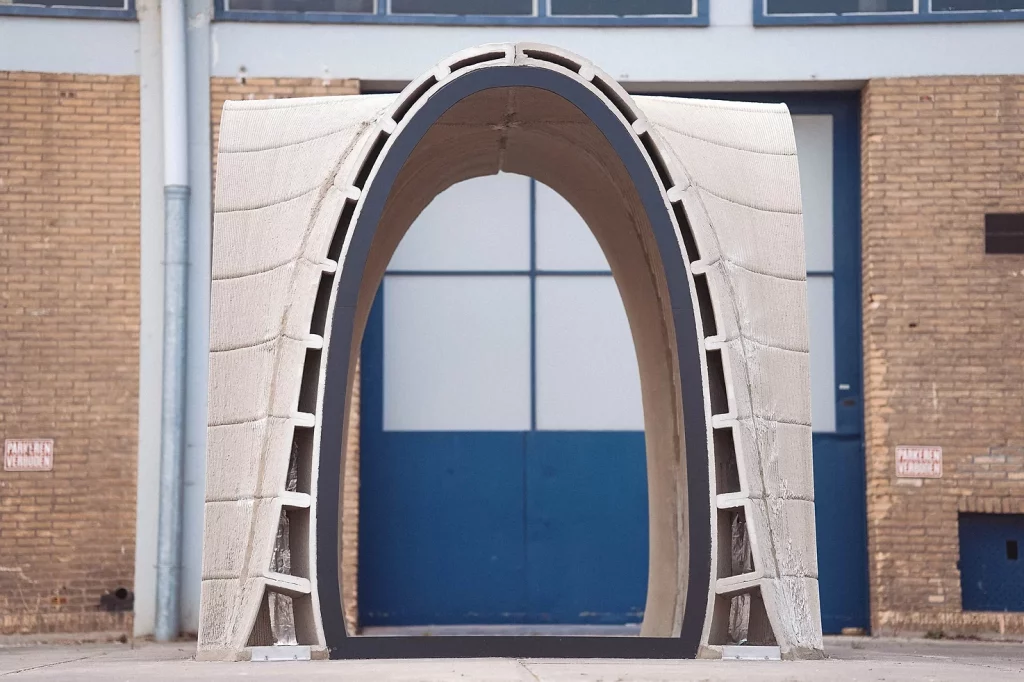

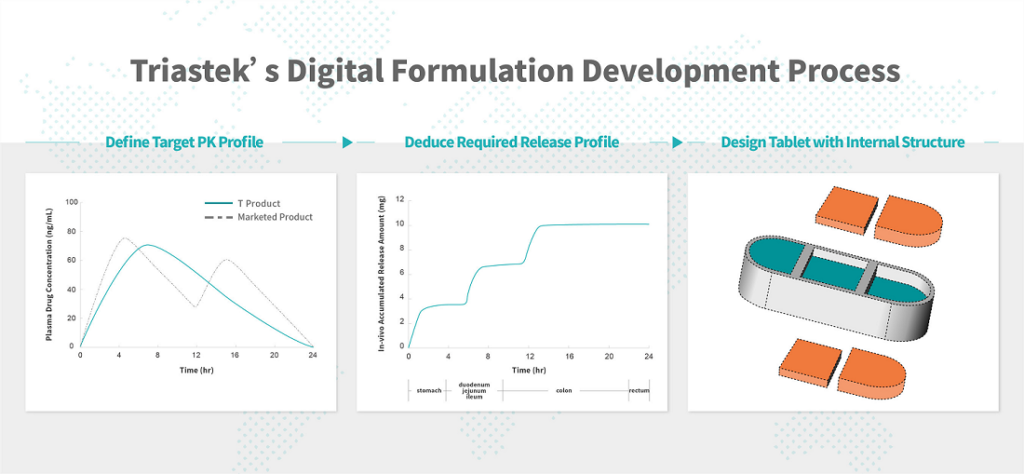
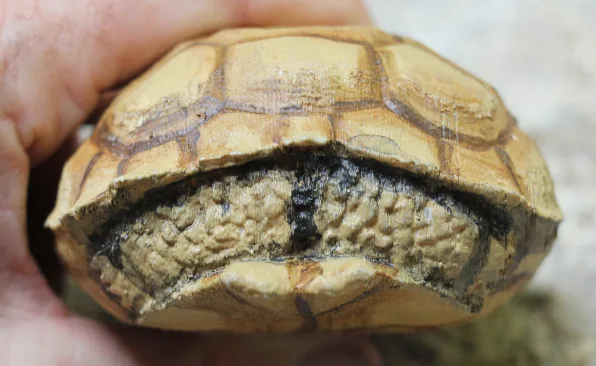
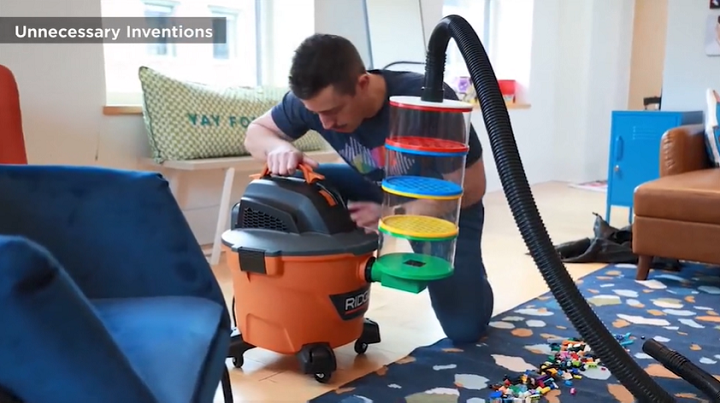
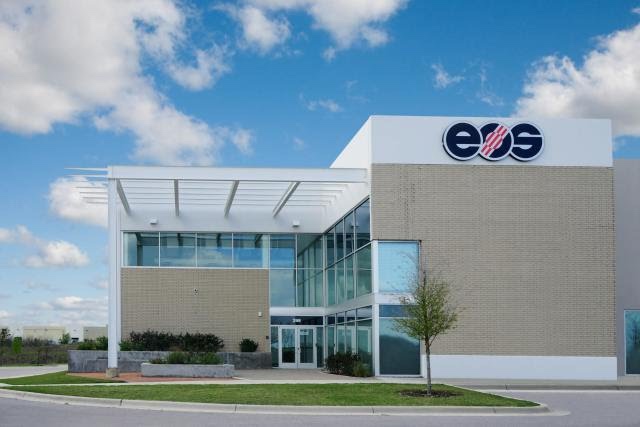 EOS' location in Pflugerville, Texas
EOS' location in Pflugerville, Texas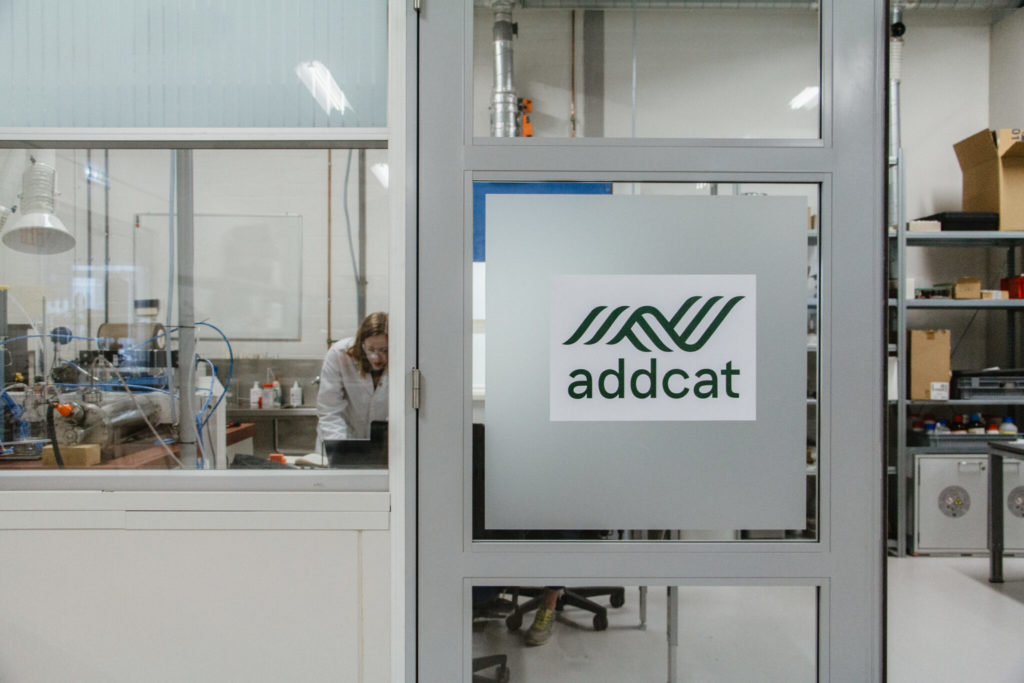
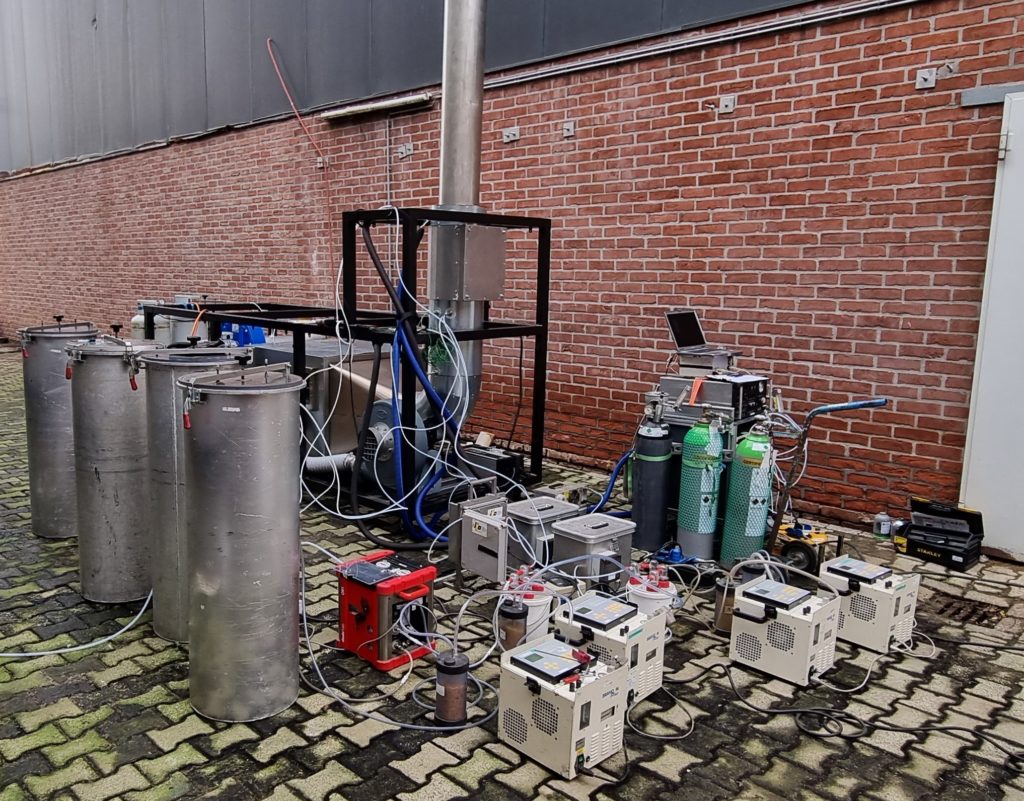
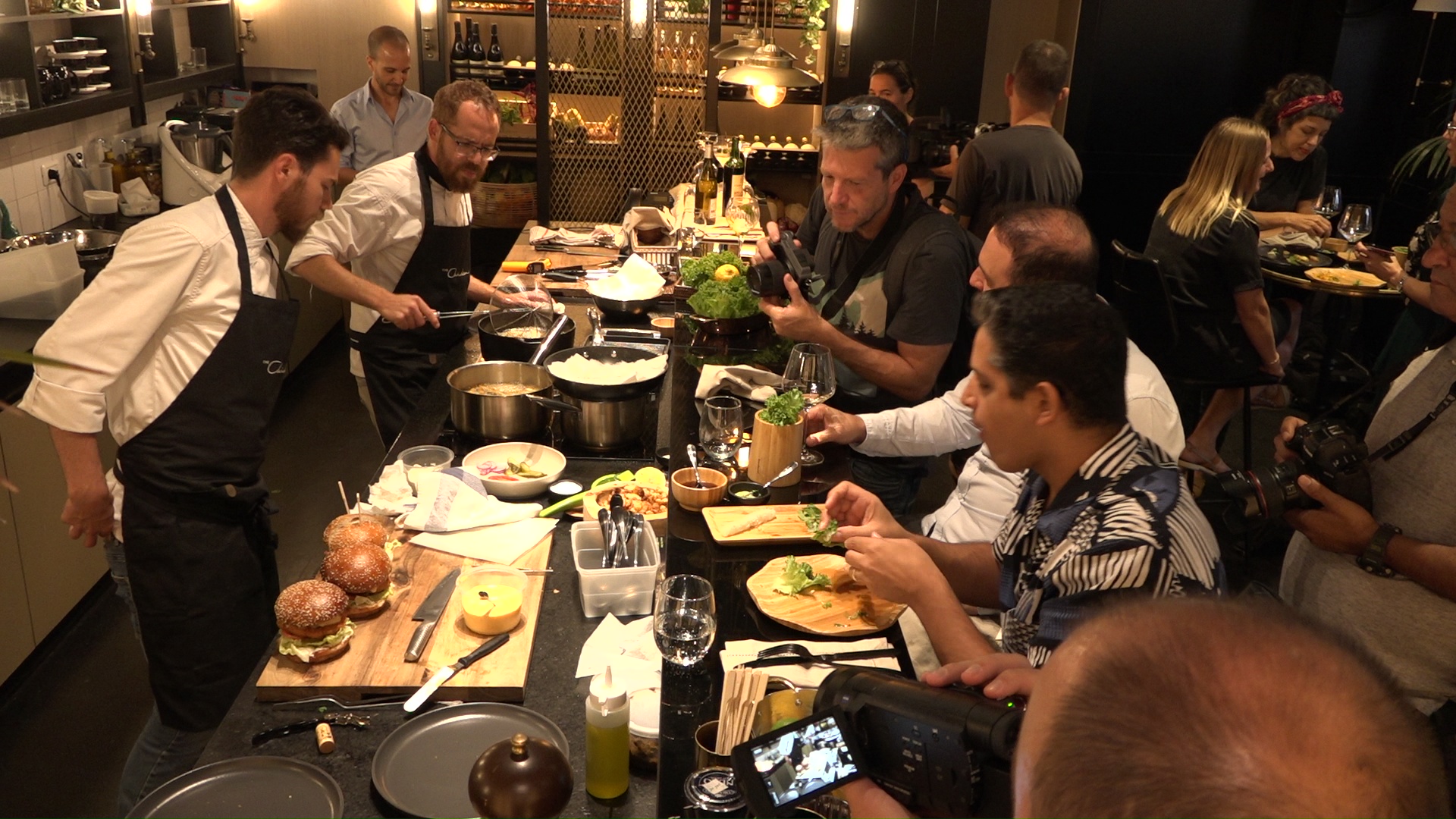
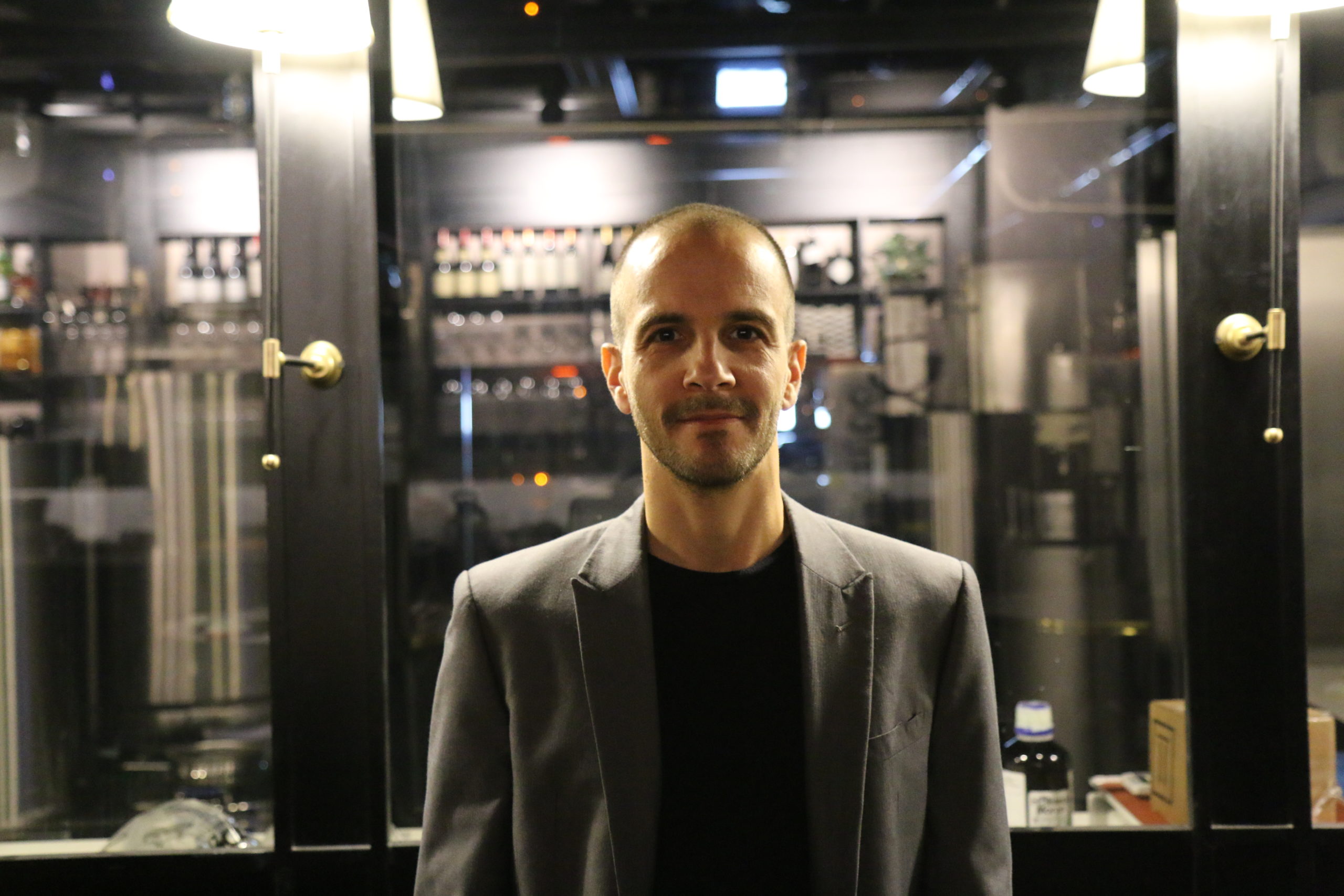
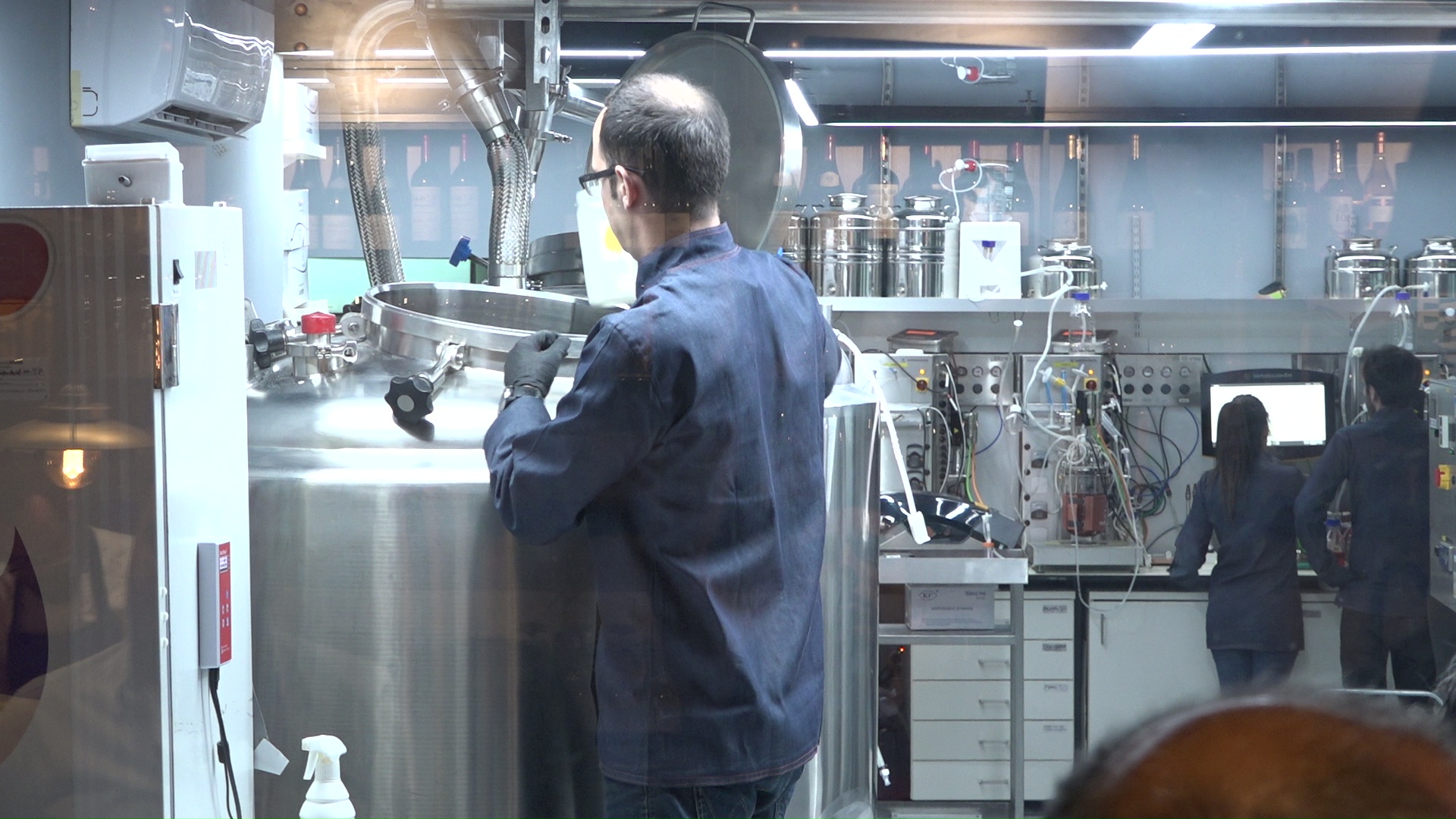


0 comments:
Post a Comment